




Level 24/44 Market St, Sydney 2000 • GPO Box 108, Sydney 2001 • Ph: 18000 15 8 47 • email: info@indianlink.com.au Published Sydney • Melbourne • Adelaide • Brisbane • Perth Indian-origin officers in the Australian Armed Forces DEFENCE A CAREER IN ttt ttt FREE Vol. 17 No. 12 (1) • September (1) 2010 • www.indianlink.com.au • FORTNIGHTLY SYDNEY

2 <> SEPTEMBER (1) 2010 INDIAN LINK

SEPTEMBER (1) 2010 <> 3 NATIONAL EDITION

INDIAN LINK
PUBLISHER
Pawan Luthra
EDITOR

Rajni Anand Luthra
ASSISTANT EDITOR
Sheryl Dixit
MELBOURNE
Preeti Jabbal
CONTRIBUTORS
Mamta Sharma, Usha Ramanujam Arvind, Preeti Kannan, Farrha Khan, Tanveer Ahmed, Chitra Sudarshan, Thomas King, Geeta Khurana, Rani Jhala, Sunil Gutam, Guneeta Dhingra, Candice H, Ritam Mitra, Preeti Jabbal, Noel G deSouza, Shivangi Ambani Gandhi, Sandip Hor
ADVERTISING MANAGER
Vivek Trivedi 02 9262 1766
ADVERTISING ASSISTANT
Priti Sharma 02 9279 2004
GRAPHIC DESIGN AND LAYOUT
Darren Monaghan
Indian Link is a fortnightly newspaper published in English. No material, including advertisements designed by Indian Link, maybe reproduced in part or in whole without the written consent of the editor. Opinions carried in Indian Link are those of the writers and not necessarily endorsed by Indian Link. All correspondence should be addressed to Indian Link
Level 24/44 Market St, Sydney 2000 or GPO Box 108, Sydney 2001
Ph: 02 9279-2004 Fax: 02 9279-2005

Email: info@indianlink.com.au

The match fixing scandal: A watershed moment for cricket
Critics say that tabloid paper News of the World exceeded the bounds of honest journalism when it trapped a middleman in return for details of three occasions when Pakistan bowlers would bowl noballs during a test match against England. Allegations have since emerged of widespread match fixing by a group of select Pakistan players. The Fourth Estate is divided in its views as to the honesty shown by the News of the World in this sting. Some believe that a good journalist should identify themselves and ensure that the other party is aware of their media connections. Others believe that the ends justify the means and that in the current era of cut-throat journalism, the story is what counts. Besides, sting operations are necessary to uncover the murky underworld in select situations such as this particular one.
Be that as it may, allegations against the Pakistani players have rocked the cricketing world. Already smarting from the friction which exists in this sport between the controlling boards of the various Test playing nations, these allegations if proven, could be a watershed moment for the sport. Divisions are rife within the International Cricket Council (ICC) and disagreements within the two blocs of power - one with Australia, New Zealand and England, and the other with India, Pakistan, Sri Lanka, Zimbabwe,
BY PAWAN LUTHRA
South Africa and West Indies - are openly played out in the media. Australian criticism of Zimbabwe’s racist regime and ICC’s ignoring of this stand was not well received by cricket lovers. More so, ICC’s blatant rejection of Australia’s former Prime Minister John Howard’s application for a position of Vice President of ICC was seen as a snub to the cricketing boards of the so called “white countries” by the “brown countries”. That Australia accepted this insult and withdrew Mr Howard’s nomination was seen by many as surrender to the India-dominated ICC and its substantial financial wealth.
The betting scandal will be a testing time not only for the Pakistan Cricket Board (PCB) but also the ICC and to an extent, Cricket Australia. If the PCB and ICC do not rise to the occasion and apply considerable vigour to unearth the reality behind these allegations, it will be clear to the world that the game is riddled with corruption and self serving interests of a few nations at the cost of the great game of cricket. If they do follow through with
an in depth investigation and ensure that it is transparent and open, and then it will go a long way to regain the confidence of the public. Whether the investigations are carried out by ICC’s anti-corruption department or an independent body such as Scotland Yard, will also go a long way in deciding the future of the game.
For itself, Cricket Australia needs to be vocal and forthright about its position. They need to articulate publicly as to how they would prefer ICC to approach these match fixing allegations. They need to be strident in their preferred process and work towards an open policy of keeping the public informed as to what they believe in.
They also need to be confident as to what options are available to themselves in case the International Cricket Council tries to sweep this under the carpet.
This could be a time when the greater good of the game may be more important than the rivers of cricket gold flowing in some countries.
SEPTEMBER (1) 2010 <> 5 NATIONAL EDITION
www.indianlink.com.au EDITORIAL
Ramakrishna Sarada Vedanta Society
events
Sun 12 Sept Young people’s Discussion Group for ages 15 and over. Theme: Control Your Negative Emotions. 3.00pm to 6.00pm. Venue: Vedanta Hall, 15 Liverpool Road, Croydon. Details 9745 4320 or vedantasyd@idx.com.au
Hindi Divas
Tue 14 Sept Bharatya Vidya Bhavan Australia will organise International Hindi Day celebrations at Parliament House, Sydney, 11.30am-1.30pm. The Hon. John J. Aquilina MP, Parliamentary Secretary and Leader of the House will host the event.
Nativity celebration
Sun 19 Sept The Mangalorean Catholic Association of Sydney (MCAS) will hold its Annual Nativity celebration with mass at 11.30 am at Our Lady of Dolours Church, Chatswood, followed by a home cooked traditional Mangalorean lunch at the Harrington Hall (Parish Hall).
Details Peter 0406 101 740 or Wilson 0433 284 877 or visit www.mcas.org.au for more information.
Ganesh Festival
11 Sept-22 Sept Western Sydney
Ganeshotsav Inc presents Ganesh Festival at Sree Swaminarayan Mandir, Blacktown.
Details at www.westernsydneyganesh.org.au
Combined Universities’ Cultural Night
Sat 25 Sept The annual cultural extravaganza organised by the Indian societies of the major universities in Sydney will be held at Hills Centre, Castle Hill. The theme this year is A Mystical Rendezvous: Elegance Through the Ages, and the
night includes a special dance competition segment entitled Flaunt Your Flava. Details at www.sydneyculturalnight.com
Sneh Milan: Deepavali 2010
Sat 30 Oct A Diwali extravaganza featuring pooja, talks, children’s performances, puppet show, raffle and lucky dip, DJs and dance. 6.00pm at St Ives Community Hall, Memorial Avenue, St Ives.
Details Kamini Sahni 0401 059 923
Calling all Indian-origin alumni of UWS
Anil Dhar wants to form a social network of Indians who have been past students of UWS now settled in Sydney. The main objective of the network will be to get together once or twice a year in order to revive old memories, interact with each other and stay in touch. The thought is at a very initial stage. Interested alumni are requested to get in touch with Anil on 0408 942 407 in order to turn the thought into a reality.
Iti Sydney’s Diwali celebration
Sat 30 Oct Iti Sydney will celebrate Diwali and worship of Kali mata, at Cumberland High School, 183 Pennant Hills Road, Carlingford, 4:00 pm. Following prasad and dinner, cultural program including Bollywood dances starts at 8:30 pm. All voluntary donations will go towards charity activities in India.
Details Aditi Coomar 0438 777 586
Raja Yoga Meditation classes

Om Shanti Margaret Goodwin, on behalf of the Brahma Kumari Raja Yoga Centres in Australia, runs Raja Yoga Meditation classes on Tuesdays 6pm and 7pm. Venue
Alpha Park Centre, Alpha St, Blacktown. (Next to the childcare centre, opposite Westpoint). Please call 8600 0150 to book. No charge for the classes, though voluntary donations may be made to help with the costs to provide the classes. Other locations at which to learn Raja Yoga Meditation
Ashfield: call Pranita 9716 7066
Canberra: call Panna 6260 5525
Liverpool: call Sashi 9607 2916
Parramatta: call Margaret 8600 0150
Penshurst: call Asha 9585 2727
Wollongong: call Ami 4227 2241
Shri Shirdi Sai Temple
Shri Shirdi Sai Temple is now open between 6.00 pm to 8.00 pm every day. Enjoy Bhajans from 6.30 pm to 7.30 pm on Sundays. Sai Mandir is located at 420 Liverpool Road, corner of Hill Street, Strathfield South, NSW 2136. For detailed temple timings, please visit the temple’s website www.shirdisai.org.au or call 0432 502 493.
Water confidence and safety classes for Indian women
This FREE class is for Indian women who:

- live in the Ashfield Council area
- have no swimming experience
- want to learn how to perform CPR (cardiopulmonary resuscitation)
- would like to meet other Indian women in the local area.

To secure your place, book early! For more information and bookings phone Ashfield Council on 9716 1844 or email jaey@ ashfield.nsw.gov.au
If you are interested in being trained as a swimming instructor or volunteering for this project, contact Jae on 9716 1844. You must be a woman of Indian background.
We regret to announce the sad demise of Smt. Shivalingamma (71) in the early hours of August 25 at her home in Holsworthy.

Very popular in the Kannada community for her friendly and hospitable nature, she was known for her beautiful smile even under adverse circumstances.
The community misses her. She leaves behind her husband Sri. Rajasekariah, a daughter, two sons and three grandsons
We are committed to providing you with the most personalized & tax-effective strategies. Whether you are an individual or a business owner, we will help you with the best advice on tax minimization, GST compliance, accounting & business solutions.
Over the past several years, we have built an enviable reputation for professional and value-for-money services.
We promise:
• Value-added services with proactive solutions.
• A focused and customized service by taking the time to understand your needs.
• Accessibility and responsiveness throughout the year.
We guarantee that your returns are 100% compliant with the latest Australian Taxation Law which will ensure peace of mind and help you focus on wealth management.
Calculus Accounting and Taxation Services
Suite 2, Level 3, Strathfield Plaza 11
The Boulevarde, Strathfield NSW 2135
02 - 9267 8933
Niranjan Kale: 0411 034 507
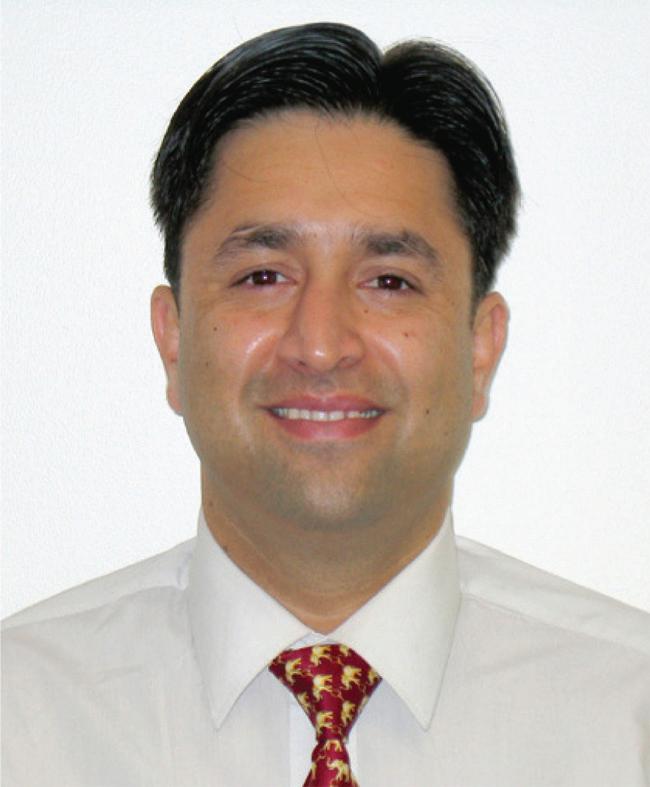
6 <> SEPTEMBER (1) 2010 INDIAN LINK
What’s On In Memoriam
Stressed By Unhealthy Skin? For over 22 years, Clear Skin International has helped 1000’s of satisfied clients to achieve beautiful, clear, healthy skin. We specialise in treating ECZEMA, ACNE & PSORIASIS. Call for an appointment today! You can now enjoy: • Freedom from infection, soreness, inflammation, itching, dryness and flaking on clothes • Confidence in never having to cover your skin with makeup nor clothing ever again Receive Your Free Naturopathic Tips & Secrets for Great-Looking Skin (Value $87) www.clearskininternational.com FREE Call 1800 240506 Clear Skin International Pty Ltd, 211 King St Newtown 2042 Homoeopath / Naturopath, Andrew Collishaw (ND, B Med Sci, Hons, ATMS) “Imagine the confidence that comes with great looking skin” Tax Returns fr $69* At WENTWORTHVILLE MALL Shop No 10A (Opp. Franklins), 42-44 Dunmore St. Prepared by Qualified, Experienced, Professional CPA Accountant and Registered Tax Agent. Electronic Lodgement - Fast Maximum Legal Refund. We specialise in Rental Properties and Small Businesses. Open Sundays and After Hours by Appointment. RELIABLE - AFFORDABLE - FRIENDLY RAM Accounting Financial & Taxation Services Call Jay Srinivas on 9639 9369 - 0415 104 690 *Conditions apply. Not to be combined with other discount offer.

SEPTEMBER (1) 2010 <> 7 NATIONAL EDITION


Oz gets first ever South Asian origin senator
Lisa Singh will represent Tasmania in the new Australian Senate
 BY USHA RAMANUJAM ARVIND
BY USHA RAMANUJAM ARVIND
38-year-old Lisa Maria Singh has been elected to the Australian Senate, becoming the first person of South Asian origin to enter federal Parliament.
A former minister and member of Tasmanian parliament from the electorate of Denison, Singh bounced back after defeat in the March state elections.
“It is a fantastic opportunity to represent Tasmania at the federal level and to be back serving the people again”, she told Indian Link. “I am particularly honoured to be the first woman of South Asian background. I have always believed in embracing diversity and multiculturalism and I want to be their voice. The entire social fabric of Australia is changing and I do hope more ethnic representatives will be visible in the public arena”.
Of course, it will take much longer and more work needs to be done, she noted.
As well, Lisa is also delighted with the swing in gender perspectives. Interestingly, in the 2010 elections, 50% of the Senate members from Tasmania have been women.
Of Rajput origin, from Gwalior in Madhya Pradesh, Lisa’s great grandfather moved to Fiji in 1902 under the British government as an indentured labourer. Her grandfather Ram Jati Singh OBE rose in ranks to become a member of the Fijian Parliament in the seventies.
Her father migrated to Australia as an international student in the early sixties.
Proud of her Indian heritage, Singh has visited India several times and also as a member of parliament in 2007, meeting the president and fellow Indian parliamentarians.
“I remember being interviewed on Lok Sabha TV about my ethnic background and role in Australian politics”, she remembered.

Lisa brings to politics, a strong heritage in volunteering and social work.
“Growing up in the inner city suburbs of Hobart, and attending an all-girls Catholic school I became involved in the school’s St Vincent de Paul Society Group, organising events and volunteering in the Vinnie’s Opp Shop in North Hobart that is still there today,” she reminisced. “That focused me from an early age on the disadvantaged in our society, be they the young, unemployed, homeless or the elderly. From that young age I felt that it was not right that some people missed out on basic services and things that most people took for granted”.
Community development has been her path of interest throughout her tertiary education. Lisa in fact, did her thesis on street kids and petty crime in Hobart CBD, advocating the urgent need for early intervention and prevention.
She carried the same passion forward through the union movement, striving for safety and job security in the workplace. Lisa went on to become the director of the Working Women’s Centre “giving women a voice to be heard on issues such as child care, bullying, discrimination, harassment and paid maternity leave”, eventually joining the Lennon government in 2008. She was Minister for Corrections, Consumer Protection and Workplace Relations.
As an MP, Lisa served on various parliamentary committees and has lobbied for housing, public transport, cultural diversity and reform for the Hobart waterfront. Likewise, as minister, she introduced significant reforms in her portfolio areas, as well as assisting the Premier on Climate Change. Lisa reformed workers compensation laws in Tasmania, established a unique whole of government asbestos policy, introduced reforms in the private rental market, vendor disclosure and energy efficiency
standards for residential properties, and commenced a ten year reform plan for the Tasmanian corrections system.
She has also been actively involved in various community organisations, including the United Nations Association and the Australian Republican Movement.
Since her defeat in March this year, Lisa has been actively establishing a support organisation for asbestos sufferers in Tasmania. She is the current CEO of Asbestos Free Tasmania Foundation.
“I feel truly privileged and humbled that after only four and a half months of losing my seat at the state election, I now have the opportunity to represent Tasmanian interests in the federal sphere,” she said.
Join at the grassroots level, have a vision, be passionate and vocal, show your commitment to causes, understand local issues and work your way up slowly but surely – that is Lisa’s mantra for political success.
“It is at the community level that we build our social capital, where informal networks develop and community groups empower each other,” she observed.
“And throughout my community life, one common thread has been apparent through most things I have done and that is the significance of our human rights”, she stated. She firmly believes in the ideology that whether people are black, white, young, old, disabled, female, sick or injured, they all have basic rights.
As a human rights advocate, she was awarded Hobart Citizen of the Year in 2004 for her role in the Hobart peace movement, especially for highlighting the rights of women and children during wartimes, most notably the Iraq war.
Besides a strong values platform and conviction in one’s beliefs, Lisa also advocates the importance of core leadership skills.
We wish Lisa every success in her prestigious new role.
SEPTEMBER (1) 2010 <> 9 NATIONAL EDITION
SPECIAL REPORT
www.indianlink.com.au
Lisa Singh with PM Julia Gillard
Gandhi gift to encourage unity and reflection
UNSW now has its own Gandhi statue, a gift from the Government of India
BY MAMTA SHARMA

The still, small voice of Mahatma Gandhi entailing peace, equality, friendship, truth and non-violence has defied time and spoken through the ages, echoing through the hearts and minds of millions of people worldwide. Transcending the same message of lasting friendship and solidarity, the peace hero of the 20th century, has made his presence at the UNSW Library Lawn in the form of a cast iron sculpture.
India and Australia have shared friendship and collaboration in a wide spectrum of areas but the relationship turned uneasy after the attacks on Indian students in Victoria last year. In an effort to foster greater understanding, co-operation and goodwill between the two countries, the Indian Government has generously donated the bust of Mahatma Gandhi to the people of New South Wales.
Addressing the gathering at the official unveiling of the bust at the UNSW Library Lawn on September 1, UNSW President and Vice-Chancellor Professor Frederick Hilmer said that it symbolizes cooperation between the students of both countries and the growing Indo-Australian cultural relationship.
“Gandhi’s values and ethos like non-violence, truth and equality are fit for the UNSW. The University was rightly chosen for the bust, as it reflects deep and continuing ties with India,” he added.
Elaborating on the significance of the day (Wattle Day) chosen for the unveiling, Professor Hilmer said, “The wattles are usually the first pioneer plants to rise from the ashes of bushfires and provide protection for other seedlings growing underneath in a natural succession of the bush. The wattle will be a lasting symbol of student safety at UNSW. The unveiling of the bust on this day symbolizes the self respect and friendship we have for each other. It symbolizes the day when the first flower blossomed after the bushfire faced by the two countries in the wake of student attacks last year.”
The golden wattle, Acacia pycnantha, is the national emblem of Australia. Like Australians themselves, wattles are diverse - there are nearly 1000 different species of all shapes and sizes found all over the country, yet all recognisable as part of the same family. The wattle isn’t tied to a particular historical event or any one group of people; it is a unifying symbol that all Australians can share.
The Gandhi bust was officially unveiled by Professor Hilmer, NSW Treasurer Eric Roozendaal and the Consul General of India (Sydney) Amit Dasgupta at the UNSW Library Lawn.

The area where the Gandhi bust sits has been designed by Richard Johnson, eminent architect and part of faculty in UNSW. Professor Hilmer said Johnson wanted the place to be simple and a sanctum, and hence chose the Library Lawn of the University. He placed the statue at eye level, keeping in mind the fact that Gandhi believed in equality of all and never looked down upon anyone. The bust carries a quote from the Mahatma: “An eye for an eye only makes the whole
world blind.”
Stating that Mahatma Gandhi is a great source of inspiration even today, Mr Roozendaal said, “The great friendship that India and Australia share was tested recently in the wake of the student attacks, but it still stands strong. International education programs are not just about providing education, but they also lead to international understanding and opportunities for cultural exchange between countries. NSW is at the fore front of providing a rewarding, enriching and safe experience to international students and is committed to providing quality education at the same time. ”
Quoting Gandhi’s famous words - Be the change you want to see in the world - the treasurer reiterated that it is this change we want to see in international students, no matter where they are from.
Along with the bust, the Indian government has also donated a book collection of contemporary India to the UNSW library. The literary treasure includes some of the best works of Indian writers such as, Sea of poppies (by Amitav Ghosh), Six Suspects (by Vikas Swarup), The Enchantress of Florence (by Salman Rushdie), The Inheritance of Loss (by Kiran Desai), Unaccustomed Earth (by Jhumpa Lahiri), Gitanjali (song offerings by Rabindranath Tagore), Sacred Games (by Vikram Chandra), In the Land of the Blue Jasmine (by Amit Dasgupta), The Japanese Wife (by Kunal Basu), Tales of the Open Road (by Ruskin Bond), Mulla Nasruddin (by Sampurna Chattarji) and The Stranger (by Satyajit Ray), among several others.
Thanking Indian Consul General Amit Dasgupta and the Indian community for the donation, UNSW Librarian Andrew Wells said, “Students and staff of UNSW will appreciate the book collection including the works in contemporary and cultural Indian literature,
and we will make sure that we keep building on that collection.”
Terming the unveiling of Gandhi bust an “emotional moment”, Indian Consul General Amit Dasgupta said, “2009 was a terrible year due to the attacks on Indian students, but an unintended consequence of that bad time was that it focused on recognizing what India and Australia mean to each other. Both countries share a strong relationship and collaboration in universities, research and various other areas.”
With so much ongoing violence and intolerance in the world, he added, Gandhi’s tools of peace, nonviolence and truth continue to be as relevant today these were during his lifetime.
Taking about the quotation on the Gandhi bust, Mr. Dasgupta said, “The quotation appears to capture one of the greatest contributions of Gandhi…shift the thought paradigm, think different. It is this element of thinking differently that the bust captures. The UNSW Library Lawn is a place where the University members and faculty help young minds to think differently and shift their thought paradigm. There could have been no better place for the Gandhi bust.”
Concluding his address he said, “While Gandhi was born in India he belongs to every one of you.”
UNSW Indian Cultural Association Student Awards were also presented at the occasion by Professor Hilmer and Mr. Roozendaal. Prasant Misra, currently doing his PhD in Computer Science, was awarded the Best International Indian Student Academic Achievement Award. Amit Ranjan, a Jawaharlal Nehru University (India) student, bagged the award for Best Visionary Article about India, and Binesh Puthen Veetil was presented with the Best Visionary Article Award about Indian Students’ contributions to Australia and India.
10 <> SEPTEMBER (1) 2010 INDIAN LINK
SPECIALREPORT
“2009 was a terrible year due to the attacks on Indian students, but an unintended consequence of that bad time was that it focused on recognizing what India and Australia mean to each other”
www.indianlink.com.au
Amit Dasgupta
Photo: Susan Trent/GASBAG Studios
(From left) NSW Treasurer Eric Roozendaal, Professor Fred Hilmer and Indian Consul-General Amit Dasgupta officially unveil the Gandhi Bust at UNSW Library Lawn on September 1, 2010.






SEPTEMBER (1) 2010 <> 11 NATIONAL EDITION
Looking after your health is your dharma
A UWS group is monitoring the Indian community for coronary heart disease
actually dangerous for Indian Australians,” says Dr Ritin.
 BY SHERYL DIXIT
BY SHERYL DIXIT
“Many young Indian Australians are not aware they are at greater risk of coronary heart disease (CHD),” says Dr Ritin Fernandez, a health researcher at the University of Western Sydney.
Dr Ritin Fernandez, from the UWS School of Nursing and Midwifery, is lead researcher on a study which is collecting data from the Indian community in Australia to help identify barriers to effective health communication.
Researchers on the Developing Elements of Effective Intervention for Heart Disease Reduction and Maintenance in Asian Indians
Living in Australia (DHARMA) study are working closely with the Office of the Consulate General of India to connect with the local Indian community.
Indian Australians are at a higher risk from CHD because of their genetically distinct physiology and metabolism which magnifies the impact of conventional risk factors such as high cholesterol and high blood pressure.
“The high prevalence of diabetes mellitus, late recognition of diabetes, high blood pressure and high lipids, poor compliance with treatments and physical inactivity, all make Indians particularly prone to CHD,” says Dr Ritin.
CHD primarily affects younger, workingage people and has the potential to seriously compromise their quality of life and capacity to work full time.
“They are unaware that cholesterol results and blood pressure readings at levels considered safe for other Australians are
The main causes of CHD are smoking, high cholesterol, sedentary lifestyle, high blood pressure, Type 2 diabetes and genetic predisposition. Information from the National Heart Foundation of Australia (NHFA) also indicates that the modifiable risk factors for heart disease are smoking (both active smoking and being exposed to second-hand smoke), high blood cholesterol, high blood pressure, diabetes, physical inactivity, being overweight and depression, social isolation and a lack of social support.
“There are also risk factors that you can’t change, such as being male, increasing age and having a family history of coronary heart disease,” reveals Dr Ritin.
Chest pain (angina) or shortness of breath may be the earliest signs of coronary
A few facts about Coronary Heart Disease (CHD)
l Death rates from coronary heart disease for Indian Australians are up to 10 times higher than for other Australians.
l High cholesterol, high blood pressure and obesity are having a greater impact - at a much younger age - on Indian Australians’ risk of coronary heart disease (CHD).
l Globally Asian Indians experience higher rates of CHD due largely to their genetically distinct physiology and metabolism which magnifies the impact of conventional risk factors such as high cholesterol, high blood pressure and obesity.
heart disease. A person may feel heaviness, tightness, burning, pressure or squeezing, usually behind the breastbone but sometimes also in the arms, neck, or jaws. This occurs initially with exercise but later also at rest. However, some people have heart attacks without ever having any of these symptoms.
To prevent, control or avoid CHD, it is advised to stop smoking, eat a well balanced diet, cut down on fatty, sugary or salty foods and eat plenty of fibre. Keeping active is very important and adults should take part in at least 30 minutes of moderate physical activity on most days of the week. Children should be active for an hour most days. One doesn’t have to join a gym; there are plenty of easy ways to build more activity into our daily lives. Regular visits to your General Practitioner (GP) to monitor BP cholesterol and blood sugar levels will help assess your risk of developing CHD.
Dr Fernandez says better understanding of the Indian community’s health needs and devising culturally appropriate information and support programs could make a difference.
“Studies undertaken in the UK, Singapore and US have demonstrated that Asian Indians are the only migrant population to have higher rates of CHD compared to the native population. In these countries, the mortality rate from CHD for Asian Indians under age 40 is up to ten times higher than those born locally,” says Dr Fernandez.
In the study conducted by Dr Ritin and her team, participants are asked to describe their perceptions and attitudes about wellness, heart health, and preventive health, and the various health and community resources available to them. Asian Indians living in Australia who wish to participate in the study are encouraged to call 02 4620 3770 or email r.fernandez@uws.edu.au
AIMGA does its bit for DHARMA
The Australian Indian Medical Graduates Association (AIMGA) once again made an impact with their medical stall at the annual Australia Friendship Fair on August 15. Dr Sundar and Dr Patel’s annual medical stall is considered an important feature of the UIA fair, its main aim being to increase awareness of chronic medical conditions, focusing on diabetes, osteoporosis, hypertension, cardiovascular risk and macular degeneration.
An additional bonus for the community this year was the inclusion of Project Dharma from the University of Western Sydney – a research group led by Dr Ritin Fernandez, with particular interest in a survey of assessment of cardiovascular risk among Asian Indians.
Unhappily, Indians currently hold first place with the largest number of diabetic patients in Australia, and Project Dharma’s aim was to target the large number of Indians attending the fair.

Dr Sundar and Dr Patel were assisted by Dr Amin, Dr Nagamma and Dr Prakash, along with a very enthusiastic young team of medical students and pharmacists including Karthikeyan, Mikir, Shwetha, Nisha, Kogulan and Gopika. Dr Ritin Fernandez, Dharma Project Leader was assisted by Dr Everett and Ms Miranda in collecting information. A representative from the Macular Degeneration Society was also there to answer queries.
They measured blood sugar levels, blood pressure and waist measurements as measures of diabetic and cardiovascular risk. High readings were immediately addressed by the doctors present. Brochures on various chronic conditions were handed out to the attendees. Eight undiagnosed diabetics were identified that day, all of whom will be seeking to follow up with their respective GPs. All the professionals were in demand as members of the public sought them out to learn how they could have a proactive approach to their health.
Said Dr Ritin Fernandez, “Information was collected from 182 participants at the fair. Results relating to cardiovascular risk will be published at the end of this year. We received positive feedback by the participants and the community leaders, who were impressed with this health promotion activity.”
The main aim, that of increasing awareness of chronic medical conditions and alerting people to be proactive with preventive health, was achieved, as several hundreds of the fair attendees (mainly Indians) visited the stall and picked up relevant information. The enthusiasm of the young professionals manning the stall, and its cooperative and collaborative approach and atmosphere, were encouraging.
“We certainly feel confident that we can better the health of Australia through such health promotion activities,” said the medical staff.
Dr Sundar
12 <> SEPTEMBER (1) 2010 INDIAN LINK
COMMUNITYSCENE www.indianlink.com.au
(From left) Dr. Amin (Woodcroft Family Practice), Dr. Sundar (Secretary, AIMGA), Dr. Everett (UTS), Ms. Miranda (UWS), Dr. Fernandez (UWS), Dr. Nagamma (past President, AIMGA) and Dr. Patel at the AIMGA stall at this year’s India Australia Friendship Fair


SEPTEMBER (1) 2010 <> 13 NATIONAL EDITION
A CAREER IN
BY PREETI KANNAN

Rigorous training, good mentoring
Flight Lieutenant Satish Ayyalasomayajula
26 years, Communications Engineer with No 1 Combat Communications Squadron at Royal Australian Air Force (RAAF) Base, Richmond

A strong sense of duty and burning desire to serve the nation was what inspired Flt Lt Satish Ayyalasomayajula to take up a career with the RAAF. Born in Visakhapatnam, India and brought up almost entirely in Australia, his family migrated to Australia in 1991 when Satish was barely six years old. After his schooling in Melbourne, he went on to do his Bachelors at the Overnewtown Anglican Community College. He then pursued a Communication Engineering Degree at the Royal Melbourne Institute of Technology (RMIT).
It was as a student in RMIT that Satish had his first insight into the Armed Forces, when advertisements on joining the Air Force in local gazettes caught his eye. He attended a career recruitment drive at RMIT, and Satish recalls, “We had a brief at the university on what working in the Air Force entailed. The work profile was in line with my studies as a communication engineer and the offer was lucrative, so I decided to take it up.”
Once he had made up his mind to work with the Air Force, Satish underwent a four stage interview which included an IQ Test, a psychological evaluation, an intensive interview with a senior psychologist and a medical test. The toughest part, Satish admits, was the initial training that all officers had to undergo after spending 17 weeks at the Officers Training School (OTS).
“The training was quite elaborate and rigorous, and initially, it felt quite hard. I guess it was also because of cultural differences and I was not used to the physical aspects of training. Even mentally it was quite exhausting and there were both, low and high times during training. However, I had had good mentoring by the staff at the OTS and spoke to them for assistance,” he says.
The training, however, prepared Satish to take on leadership roles, which is extremely crucial when working in the Air Force. In his past six years of service, he has been on a lot of military exercises, pre-work ups and real time operations. “It gives us a good insight into management and leadership. It is a great opportunity,” he notes, adding that he is extremely keen to take up overseas assignments. “I look forward to going overseas. The fact that we have the opportunity to lead people is extremely exciting. We are here to serve the nation and the people; this knowledge keeps me going and continues to motivate me. If a few guys are working for me, it is my duty to make sure they are happy,” says Flt Lt Ayyalasomayajula.
Being Indian by birth, Satish maintains strong cultural ties with the subcontinent by keeping in touch with his native language and of course, Bollywood. “Obviously, my parents influence my Indian cultural values and we speak Telugu at home, in which I am fluent. I also understand Hindi and watch Bollywood films to keep in touch with my heritage,” he says. “Since my parents also brought me up with the view that I am Australian, I have also adopted the ways of Western society,” he adds, remarking that that they were fully supportive of his decision when he decided to join the Air Force.
This young officer says, “There is a lot of multiculturalism in the service. It is a diverse and equitable service. I encourage more people of Indian descent to join, but they have to be prepared for the Australian way of business. They should join because of their desire to support the country, and they should be prepared for that,” he cautions.

14 <> SEPTEMBER (1) 2010 COVERSTORY
ttttttt ttttttt
Positive change is good for ADF
Flight Lieutenant Hardik Mehta
30 years, Systems Engineer ALSPO Royal Australian Air Force Base (RAAF) Richmond

An engineer’s first love is always technology and specialised eq Lt Hardik Mehta, it was no different. An engineer, Hardik came Gujarat as an international student to pursue his Masters in En RMIT University. After obtaining his Permanent Residency, he de Australian Air Force because of the highly specialised technolo equipment the service offers.
“As an Engineer, one would like to work on cutting edge technol equipment, and the RAAF obviously owns a lot of it. RAAF also o career progression path and first rate training to be successful job. A strong desire to serve the country I live in combined wi made the decision to join the RAAF easy,” says the officer, who RAAF as an Electronics Engineering Officer in October in 2006.
After he saw a couple of recruitment advertisements on TV which to the Defence website, Hardik found a wealth of information ab Australian Defence Force (ADF). He underwent four and a half mo at the Officers’ Training School, which was previously in Melbou officers, he was also taught to operate basic weapons and carry activity in case the base is attacked.

After completing training, Hardik’s first posting was with Numbe where he was in charge of various maintenance workshops and sup 70 technicians. He currently works as a System Safety Engineer Lift Systems Program Office (ASLPO), which provides logistical a support and new capability acquisition for the Air Lift Group’s of C-130H and C-130J Hercules weapon systems. He also overlooks day maintenance of aircraft.
Flt Lt Mehta has been to Indonesia as part of the joint exercises between the Australian and Indonesian governments, where he spent time with other officers
A soldier and a medico Captain Dr Nalini Rao
46 years, General Practitioner - Training Medics, medicals for soldiers
Being a full-time mom and juggling a medical profession is far from easy. But that is exactly what Dr Nalini Rao, currently a doctor ‘in reserve’ for the Australian Army, does. Hailing from a family deeply involved in social service –her grandfather Thakur Kundan Singh Kush was an Arya Samaji pioneer from Sahanpur, Uttar Pradesh and credited with starting the first Indian girls’ school in Fiji – Dr Rao’s inclination to service is therefore, not unusual. Her role models in life have been her mother Dr Uma Rao, who was one of the first three girls to graduate from the Fiji School of Medicine; and her aunt Mrs Usha Rai, who was Principal of the DAV Girls College and a member of the Women’s Army Cadets in Bangalore in the 1950s.
Born in Fiji, Nalini migrated to Australia in 1988 and she did her Masters in Molecular Biology at the Queensland University of Technology. After completing her MBBS, she worked in rural Queensland, from Mt Isa in the west to Thursday Island and Weipa in the north, to Bowen and many towns in between. Weipa was her first tryst with the Australian Army, where she joined as a Commissioned Officer with the Australian Defence Force Army Reserve with the Rank of a Captain in 2002.
“I later moved to Townsville and started doing medicals for soldiers, taking part in training exercises like going into the bush to do mock resuscitations, along with learning to put up a “hoochie” (sleeping tent), radio and weapons handling and navigation skills. I then moved to Western Australia for three years, where I was based at Irwin Barracks in Perth,” she says, adding that she worked as a part time soldier and also worked as a GP in an after-hours clinic.


Nalini underwent her officer training at Duntroon in Canberra in 2005, after which she regularly underwent soldier training, which included roughing it out in the bush – something which she enjoys. As part of the Combat Service Support Battalion, Nalini performed medicals, looked after soldiers and also had training in weaponry and shooting.
Speaking about her inspiration to work in the Army,
Richmond base to show them where he works and the kind of work
“They are all extremely proud that I work at the Australian Air
Nalini says, “I joined because I wanted to contribute to my country. Also, after September 11, I felt a deep need to assist during human crises. I was also influenced by a friend Major Kerry Ayres, who was a nurse in the Australian Army and whom I met working in Weipa. She spoke about the work involved and I was very keen to be a part of it, and learn new skills.”
When she declared her intention to join the Army, Nalini’s family was naturally surprised. “They were shocked about my decision, but at the same time proud. I was also one of the few women doctors of Indian descent to be a part of the Army. There were many Australian doctors and nurses but hardly any Indian women doctors,” she says.
However, she says that despite her origin, she has never felt non-white or non-Australian, because of the immense respect accorded to women in Defence. “I would love to see more girls of Indian descent work as doctors, nurses, medics or in any other capacity in the ADF as there are many opportunities and endless possibilities. Now would be a good time to join and also work overseas in conflict zones to gain experience in working in challenging environments,” says the medico, emphasising, “Women shouldn’t be worried about working in the Army as they are well-respected and accepted.”
Currently Nalini is inactive and has been placed on Army ‘reserve’, while she works as a GP in WA, because of her interest in working with rural Australians, while also devoting time to her two-and-a-half-year old daughter, whom she adores. “There are not many doctors here in rural areas and it is very challenging to work here. Also, my daughter is very young and is quite attached to me. I want to wait till she is older and I’ll resume my role in the Army once we move back to the city,” says the doctor, who works with Indigenous Australians.
Despite her Fijian ancestry and long years in Australia, Nalini says they have kept their Indian roots intact and celebrate a number of Indian festivals, including Diwali. “I love music and speak Hindi and Urdu, and I wear a sari at any opportunity. In fact, I am now teaching my daughter to speak Hindi, so she also knows the language,” says Dr Rao, whose mother is from Uttar Pradesh and her father is from Andhra Pradesh, while her husband is of Scottish heritage.
Nalini hopes to see more Indian women in the Australian Defence Force and also hopes to do an exchange programme in the future to India and Fiji, if the opportunity arises.
SEPTEMBER (1) 2010 <> 15 NATIONAL EDITION
Photo: VIVA Life Photography
Photo: D efence
Learning leadership skills and dedication
Aircraftsman Kalyan Murthy Rachakatla
27 years, attached to 44 Wing Detachment at RAAF Amberley
Dedication, enthusiasm and youthfulness are traids that best describe Aircraftsman Rachakatla – an Electrical Engineer from Satyabama University in Chennai, who first came to Australia in 2006 to pursue his Masters at the Queensland University o Technology. After finishing his education, Kalyan opted to apply for his Permanent Residency as he had come to like Australia. was keen on finding a good job here. When I looked up opportunities in the Australian Forces, I liked what was offered. Though had the opportunity to join the Army or the Navy, I wanted to join the Air Force as I like working with aircraft,” he says.
In the past two years, this young officer has been working on radars, Instrument Landing System (ILS), Air Defence and Air Traffic System (ADATS), Tactical Air Navigation (TACAN) and coordinates with air traffic controllers to ensure the efficient functioning of electrical equipment that facilitates aircraft landing and take-off.
Kalyan underwent basic training for over 10 weeks in Wagga Wagga, before starting his work.

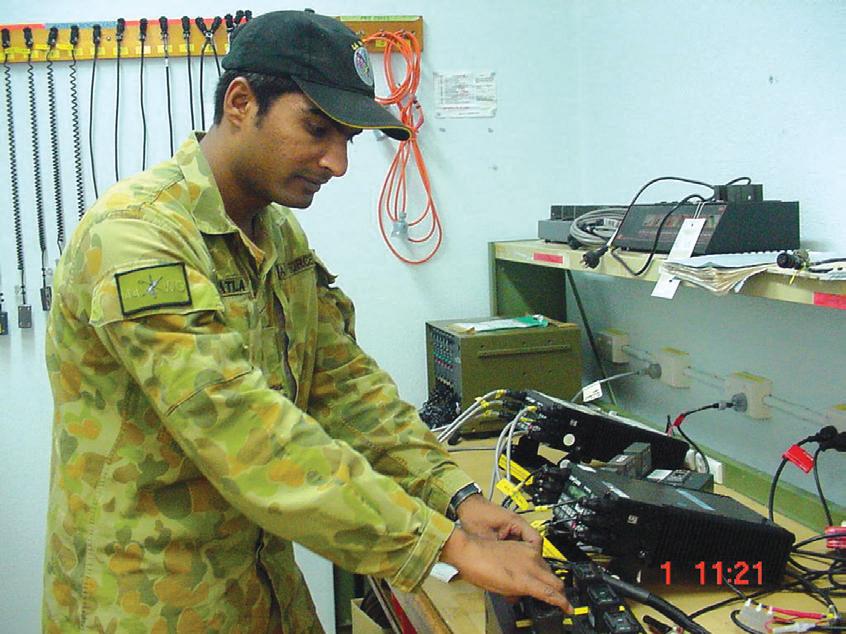


“The training, which included bushwalks, march-pasts, drills, weapon handling, shooting, using fire equipment and first aid courses, was quite tough. It also taught me leadership skills and dedication,” says this young man who originally hails from Hyderabad. The Air Force officer was trained in filling sandbags and leopard crawling as part of the bush training that all officers undergo.
“We have to be prepared for everything and be physically very fit. The 10-week training tests your abilities physically and psychologically,” he says.
Remembering his rigorous training Kalyan adds, “It was getting tougher with each day and towards the end, I told my corporal that I wanted to give up. However, he motivated and encouraged me, which helped me push myself to complete the training.”
On his initial days at the Air Force he says he was worried about taking on leadership roles. “But after the training I was given, my fears disappeared and I am now very comfortable leading a team,” he says.
Kalyan says he enjoys it all – the hard work, team spirit and camaraderie among the officers. Though as an engineer his focus is on the well-oiled functioning of aircraft equipment, like a true Australian, he lives up to the Aussie motto – work hard, play harder and that is reflected in the team building exercises, the physical training and the different sports he plays every day. In fact, Kalyan is hoping to work in combat zones like Afghanistan or Iraq and has in fact put in the ‘Individual readiness’ application, which signals an officer’s willingness to be deployed in war zones.
“I want to work in challenging environments and gain experience,” he claims confidently.
The Australian Air Force, according to him, is extremely diverse with people from different backgrounds, besides Indians, working together to serve Australia. An example of diversity, he notes, is the cooking of different ethnic dishes in the officers’ mess.
“There may be curries and at least one Indian dish. This reflects the growing number of Indians in the Air Force,” he says.
Despite his love for his adopted nation, Kalyan maintains a strong connection with India, his country of origin, and the famous Hyderabadi Biryani.
“I go home ever year to visit my family and love eating Indian dishes. My family will soon be visiting me here,” says the recently wedded officer.
In fact, when he decided to join the Australian Air Force, his family asked, why not the Indian Air Force?
And what was his response?
“I really like Australia and this is now my country. I feel at home here,” he smiles.
Reginald Armstrong
47 years, Air Traffic Control Supervisor, defence civilian located at Oakey in Queensland
If it is possible to don many hats in a lifetime, one has to si the long and illustrious career of Reginald Armstrong, or Reg as he is fondly called, since the last three decades. Armed with a sense of humour and an uncanny desire to serve the nation, Reg holds the distinction of having served both the Army and the Air Force since he joined the Australian Defence Forces in 1981. His family moved to Australia from Mumbai, which he still prefers to call ‘Bombay’.
“I was eleven when we moved here. When I go back to India, I realise it has definitely changed. We used to ride bikes in Colaba when I was a kid. Now, it would be risky to try that,” he jokes.
Reg was recruited in the Army as a cartographer, where he helped study and make maps for about six years. “Before you had Google Earth, we had to take aerial surveys and put up photos. We created three-dimensional images of the earth’s surface and drew contours,” he says. During this time, he was deployed on Operations on four occasions – three times to different parts of Indonesia and once to the Marshall Island South Pacific. His time as a Corporal in Kapooka as a Recruit Instructor were some of the best years of his life, reminisces Reg.

“I worked long hours, starting between 5 and 5:30am and finished after 10pm, seven days a week whilst training recruits, for app 12 weeks. The reward was seeing the recruits march out of Kapoo to a long career within Defence,” he says proudly.
After resigning from the ADF after 22 years at the rank of Flight Lieutenant (Captain), he now works as an Air Traffic Controller with the RAAF. In his long years, he has never served in a combat zone, unlike his younger brother, who was a Major in the Army and served in Afghanistan and Iraq.
“I just missed out on the combat zone. But, I have seen my brother serve there and it was quite difficult for him as he was married and had two children,” he says. Thinking back on the days when he first joined the Army, Reg refers to himself as quite ‘unique’ because of the fact that not many non-white Australians were part of
“Despite the differences, you are accepted for who you are in the ADF as they are concerned about work ethics. I have never felt out of place and that is why I have been here this long. The level of professionalism is more important and people do not pick on you for being non-Australian,” he says.
Recalling the time when he felt stumped as he was asked to specify his nationality, he remembered approaching his Australian supervisor who told him amicably, “You are a bloody Australian, mate!” He asserts that he has never missed out on promotions or felt any racial vilification – a question that is often posed by Reg’s friends.
“I am now seeing a lot of diversity in the ADF because it has been more proactive and has always targetted people from different backgrounds,” says Reg, who is also a grandfather with two step children – a role which he loves dearly.
“I would always encourage more Indian Australians to join the Defence, if they are interested. I don’t think you should stop yourself because you are Indian. But it’s good to research the lifestyle and the travel that it entails. Joining the ADF is a very big change in life and lifestyle that does require some sacrifice, but in the end the reward of a challenging and exciting career outweighs these small sacrifices. The individual needs to join for the right reason and not as a means to an end. Being in the ADF is more than a job, it is vocation,” he maintains, adding “The ADF is like your extended family, and it is the people who make the Defence what it is.”
Reg has thought about returning to India many times, but the Australian lifestyle has always held him back and he hopes to continue serving for the next 13 years, until his retirement.
16 <> SEPTEMBER (1) 2010 INDIAN LINK COVERSTORY www.indianlink.com.au
You’re a bloody Australian, mate!



SEPTEMBER (1) 2010 <> 17 NATIONAL EDITION
World first for UNSW stem cell researchers
Dr Kuldip Sidhu and his team flag new hope for long-term sufferers of neuro-degenerative disorders USHA RAMANUJAM ARVIND reports
Dr Kuldip Sidhu and his research team at UNSW’s prestigious Stem Cell Lab have clocked another pathbreaking milestone.
In a world first, they have created induced pluripotent stem cells (iPSCs) from human skin without genetic manipulation or use of viruses.
This vital step, in what has been a long and controversial journey for stem cell technologists, could eventually lead to a viable treatment for long-term sufferers of debilitating neuro-degenerative diseases.
Currently diseases like Parkinson and Alzheimer’s, which are caused by the destruction of specific neural cells, have no cure.
“There are at least 80,000 sufferers in Australia alone and the burden on our national health budget is huge”, said Dr Sidhu, director of the Stem Cell Lab.
Alleviating their suffering and providing a cure will be not only be deeply satisfying personally but also a welcome step for all humanity, he added.
According to him, an “effective way to treat these diseases would be to replace those deprived cells in the brain with fresh cells by future cell therapy. And the development of such autologous cell therapy with iPSCs will create a potent pathway to cure these diseases”.
The immediate use of such cells nevertheless will be in drug discovery and toxicological studies in the laboratory, he predicts.
Explaining the complex process, Dr Sidhu told Indian Link that iPSC technology offers an opportunity to produce pluripotent stem cells that are “patient specific”.
“By bypassing the need to use viral particles or genetic manipulation, the fear of mutations like cancer is almost negligible, thus removing a major hurdle in its therapeutic use”, he added.
With this remarkable breakthrough, scientists have now begun work on using the technique to generate brain cells for advanced research.
The Stem Cell Lab is collaborating closely with the Department of Psychiatry, to recruit patients and collect clinical data to analyse and develop new strategies for future cell therapies. We are specifically working on Huntington, Alzheimer and Parkinson’s stem cell lines, Sidhu indicated. Significantly, this discovery is a welcome, ethical alternative to the controversial embryonic stem cells, which are more prone to immune rejection.
However it is too early to assume if iPSC is the preferred alternative, he warned, because they exhibit variability and instability in culture. The next step is to make these cells suitable for long-term propagation and therefore suitable to therapeutic use.
So what are iPSCs and how do they work?
In a two-stage process, e pithelial cells from a patient are taken and reprogrammed to pluripotent capabilities (previously done by viral particles with foreign genes exposing them to risk of mutagenesis). Since such cells are directly derived from the patient, therapeutic cells developed in the process will not be rejected when transplanted back (autologous therapy).
The iPS cells are treated to resemble embryonic stem cells
Significantly, this discovery is a welcome, ethical alternative to the controversial embryonic stem cells, which are more prone to immune rejection
in that they have the ability to regenerate and form into virtually any cell in the human body.
Japanese scientists first used the technique in 2007 to circumvent the role of embryonic stem cells. However the process relied on the use of lentiviruses, raising concerns about introduction of viral DNA sequences into the genome of the recipient cells.
The international scientific community has already welcomed the UNSW findings and Dr Sidhu hopes it will provide fresh impetus for increased collaborations.
“Our research is still in the discovery phase but positively looking into the future. A number of foreign labs are keen to participate with us and it is all very promising”, he indicated.
Developing any new therapy, particularly cell therapy takes time ensuring that all the safety, efficacy and other ethical issues are addressed appropriately.
“With the current pace in this area of research, I would anticipate some positive cellular therapeutics within the decade,” he added optimistically.
Setbacks if at all are primarily Australia’s lack of strong R&D focus, he lamented.
Most big biotech and pharmaceuticals are off shore. “We urgently need to strengthen out transitional and translational research (bench to bedside) so that patients are helped quickly here. Likewise, any new area of research needs more funding to get off the ground quickly and new initiatives in national funding on dementia and stem cell research will be imperative to move this field forward quickly”, he pointed
Dr Sidhu who graduated from Punjab has been involved with assisted mammalian reproduction for nearly three decades. He was introduced to stem cell technology by pioneers Bernie Tuch and James Thompson. After moving to Australia, he helped found the stem cell lab at the Prince of Wales Hospital and later UNSW. He was also instrumental in developing the first human embryonic stem cell lines (heSC) Endeavour 1 & 2, both of which are protected by international patents.

“Stem cell biology is a fascinating new field and will revolutionise our understanding and our approach towards human health”, Dr Sidhu forecasts.
Indian Restaurant for Sale

18 <> SEPTEMBER (1) 2010 INDIAN LINK NEWSMAKERS www.indianlink.com.au
Dr Kuldip Sidhu
Fully licenced 5 year old restaurant in Sydney CBD. 70 seater, long lease, low rent, very beautiful interior. Owner moving interstate. $125K Negotiable. Great Opportunity. Pl. call on 0402
433 438
A new way of doing maths, from thousands of years ago!
RITAM MITRA meets a Vedic Mathematics expert

If, like most people, you sometimes find mathematics tiresome and dull, you’ll want to keep reading this piece. Even though today we are blessed and fortunate to have technology surrounding us, with everyday computers performing millions of calculations per second and eliminating the need for us to make even a single one, we can still be somewhat apprehensive when it comes to “the M word”.
Now rewind about 6000 years. You’re asked to multiply a couple of large numbers together: let’s say, 88 x 98. Already you’re looking for a computer, a calculator, anything; surely there at least has to be pen and paper around right? You might struggle now, but with even the most basic concept of Vedic Mathematics you’d be able to answer this problem in your sleep.
Vedic mathematics draws its roots from the Vedas, one of the oldest sets of sacred texts, and quite possibly the most ancient record of human experience and knowledge, passed down orally for generations, and only written down about 4000-6000 years ago. Within these texts, you’ll find all sorts of things, such as medicine, architecture, astronomy, hymns, poetry and even spells and incantations. Perhaps it is not surprising then, that India, which is credited with discovering our number system and perhaps the most important mathematical concept of 0, has a lot more to offer us when it comes to maths.
This is because, also hidden away in this myriad of texts is an ancient system of mathematics, rediscovered by Sri Bharati Krishna Tirthaji in the early 1900s. He found in these texts, that all of mathematics is based on 16 Sutras, or wordformulae, such as one he called “The Product of the Sum”. The basic principle behind these word-formulae is that they describe the actual method used to solve a mathematical problem, and thus help in directing the student to the appropriate method of solution.
For instance, in the earlier example, we had to multiply 88 by 98. In this case, the “Vertically and Crosswise” approach is relevant:
Subtract 12 from 98 by subtracting crosswise, and you get the 86. Now multiply 12 by 2 vertically and you get 24. Put the two together, and you get the answer, 8624. Now that’s a pretty cool trick!

The simplicity of Vedic mathematics is not confined to this technique alone. The system is wonderfully flexible and beautifully interrelated, allowing large calculations such as the one we just performed, amongst various others, to be carried out with simple mental arithmetic. It encourages creativity, and thus allows individuals to come up with their
own methods of solving problems, which is something our calculators
It is Sri Bharati Krishna Tirthaji’s book Kailash Vishwakarma to further explore Vedic Mathematics, and he has now published extensively in the field of Vedic Maths and Science. Professor Vishwakarma is visiting Australia, giving numerous talks around the country. He has already delivered a lecture on Vedic Mathematics and the Hindu Calendar in Melbourne, he was recently the guest speaker at the first lecture in the Hindu Heritage Lecture Series, coordinated by the Hindu Council of Australia.
Vedic Maths is creating renewed interest around the


world, as mathematics teachers look for new, improved ways of teaching (although ironically the Vedic system is one of the oldest there is). It can be applied in several areas – calculus, geometry, computing…the list goes on. Prof. Vishwakarma believes this is a result of the maximisation of the strength of the place value system. “One can multiply two or more numbers simultaneously from left to right and from right to left. There are several methods for any operation…after going through this, one can say that Maths is not boring at all”. The enormity of the Vedic mathematical system is offset perfectly by its simplicity, and it is well worth a visit online to read more about this subject – because next time you reach for a calculator, you might just be taking more time than you need.
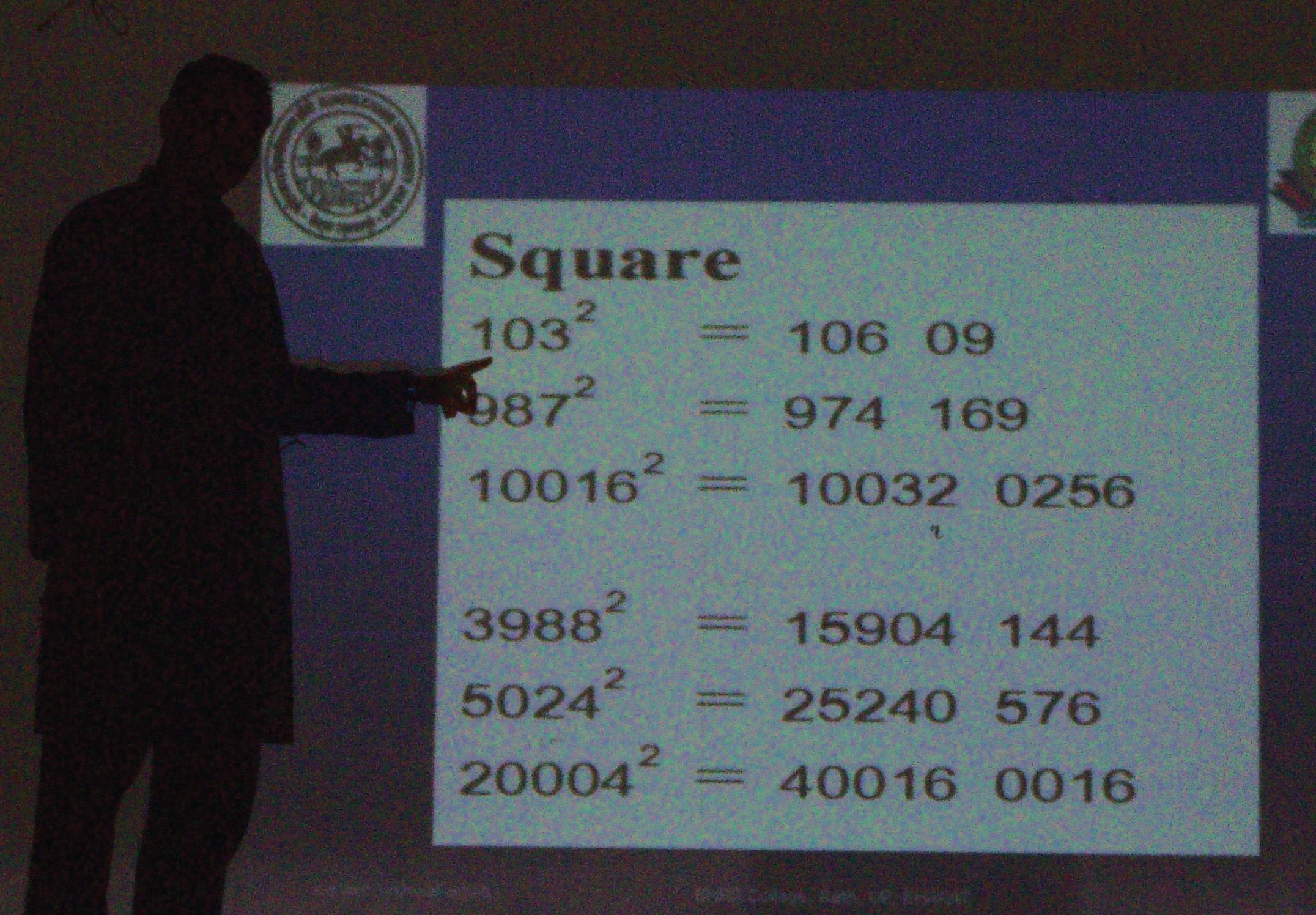
SEPTEMBER (1) 2010 <> 19 NATIONAL EDITION NEWSMAKERS
The system is wonderfully flexible and beautifully interrelated, allowing large calculations to be carried out with simple mental arithmetic
www.indianlink.com.au
Professor Kailash Vishwakarma
Think before you travel
A social media-driven campaign has just been launched to improve situational awareness among international students in Australia.
MAMTA SHARMA reports
Leaving home to study overseas not only brings great rewards but new life challenges as well. You have to adapt fairly quickly to new accents and new ways of doing things, and are always learning new things and meeting new people. Your studies and parttime job keep you busy.
An important thing among all these to be aware of, is your new environment. Many of the 650,000 overseas students in Australia are not accustomed to the danger signs in the country’s urbanised society and some have been placing themselves in high risk situations, an example being the recent attacks on Indian students in the country.
Traditional forms of communication to warn students to be aware of their surroundings have had limited success, so the Victoria Police and key stakeholders have elected to try a new digital approach, an international student safety campaign called Think Before: A Student Safety Initiative (www.thinkbefore.com).
Designed to sharpen safety skills when travelling late at night on public transport, and to plan their travel, Think Before delivers the message to students via the media with which they spend most of their time –online, social networking channels such as Facebook, Twitter, video sharing sites such as YouTube and SMS - to promote engagement and viral distribution.
The safety messages have been packaged
into an animated video clip for both online and mobile distribution to international students in Australia and abroad. The animation, which features the culturally neutral student character, ‘George’, uses a non-confrontational approach to convey core behaviours that will help students avoid threatening situations.

In the 60-second clip, we see George encounter a series of incidents in which his attention is anywhere but where it should be. Listening to his iPod, he walks alone down a dark alley, waits for half an hour on a deserted platform, rides in an empty train carriage while using his laptop (and still wearing his iPod!), and is followed out of the station by two thugs. Along the way, with nothing more than luck on his side, George avoids becoming a victim of crime. At the end of the clip, George’s efforts to impress two girls are thwarted when he drops his kebab filling on his lap, prompting the campaign tagline: ‘Feeling lucky? Think Before you Travel.’ The animation was tested in independently-moderated focus groups of international students from diverse backgrounds in May 2010 by research company Reality Check. This research study found that the students endorsed the creative and media strategy.
It is hoped international students will view the video and read key messages, and then share the information with fellow students.
The mobile strategy includes a mobile site and free iPhone and Android applications so students can easily pass the seven safety tips on to increase reach and engagement.
When asked if the campaign was not indirectly promoting the idea of an unsafe Australia to international students as they are particularly being focused for the campaign, Mr Larry Anderson, Head of Business, Australia Network said, “Abosultely not.. When you grow in your own city, you generally become aware of the places that are unsafe to go to at night or other risky areas of travel as you get that information over the years when you read or hear about it on TV and from your parents. Whereas when a student comes to a country to study from overseas, he is unaware about which places to go to and which to avoid. The Think Before campaign aims to help them with the basic information such as avoiding traveling alone, keeping valuables such as mobile phones, laptops and MP3 players out of sight which will help them stay safe during their stay here”.

“When we started the campaign the focus was on Indian students in the wake of the attacks on them in Victoria but during consultations at the various student workshops we conducted, students from other countries like China, Honk Kong etc, felt that the campaign should target international students from all nationalities as the safety messages will be equally beneficial and appropriate for them as well,” added Mr Anderson.
More than 50 country/language-specific social media platforms that are popular among international students have been targeted. Taking just a few examples in selected countries: China (51.com, Chungo, Kaixin001, Netease, QZone, Renren, Sina, Sohu, Tianji, Tianya, Taisha, Tigtag, Xiaonei, Zhanzuo); Hong Kong (Discuss, UWant); India (Bharat Student, Hi5, NGOPOST, Orkut); Indonesia (FUPEI, Kafe Gaul, Kaskus, OZMate); Japan (2Channel, Gree, Mixi); Malaysia (eKewan, Ruumz); the Philippines (Eskwela, Ok Pare); Saudi Arabia (brg8, hawaaworld, Te3p); Singapore (FunkyGrad, Plurk); South America (badoo, Orkut, taringa.net); South Korea (CyWorld,
George’s key safety message
1. Whenever possible travel in groups. Risk is created by travelling alone.
2. Keep valuables such as mobile phones, laptops and MP3 players out of sight and stay aware of your surroundings when travelling on public transport.
3. Outside of peak times and at night travel in the front carriage of the train with the driver. Where possible do not travel in empty carriages.
4. Check public transport timetables in advance. Avoid long waits on platforms and around public transport hubs. If you do have a long wait stay in well lit areas or near open shops.
5. Walk in well lit areas even if it means your trip is longer.
6. Avoid short cuts through dark isolated areas.
7. If you feel threatened in any way while walking on the street go to a shop or a house with its lights on (if at night) and ask for police to be contacted.
Available in English and 13 other languages including Hindi, Punjabi, simplified Chinese, traditional Chinese, Japanese, Korean, Thai, Vietnamese, Indonesian, Arabic, Spanish, Portuguese and Nepalese.
Daum Café, Naver Café, Renren); Taiwan (Buboo, Wretch); Thailand (Dek-d, Pantip, Sanook).
Think Before is also targeting non-country specific social media sites in various languages including Facebook, Friendster, Hi5, Jaiku, Linked-In, MySpace, Plurk, Pownce and Twitter.
The Think Before animation has also been uploaded to video sharing sites in a variety of languages including YouTube, Photobucket, Metacafe, Vimeo, Yahoo Video and Daily Motion. To aid users in accessing the information and sharing, social bookmarking sites such as Digg, StumbleUpon, BuzzFeed and Yahoo Buzz are also being employed.
Think Before is one of many safety awareness initiatives authored and promoted by police across all states and territories in Australia to help improve the safety of international students. Stakeholders from a wide variety of agencies including Victoria Police, ISANA, Australia Network, government, education and industry have contributed both funds and in-kind services to support it.
To further facilitate the campaign, educational institutions have been invited to promote the initiative to their students, partners and agents.
So far, Anderson revealed, there has been a good response to the campaign that was launched on August 6.
“Many high schools in Australia too have shown interest to promote the campaign among their students as well,” he added.
Australia is a great place to live and study, but it is different from home. Like most big cities around the world it pays to be aware of your surroundings. Being aware will help deliver a positive student experience when studying in Australia. So pay attention to your surroundings, and most importantly, think before you travel. Look after yourself and stay safe.
20 <> SEPTEMBER (1) 2010 INDIAN LINK STUDENTS www.indianlink.com.au



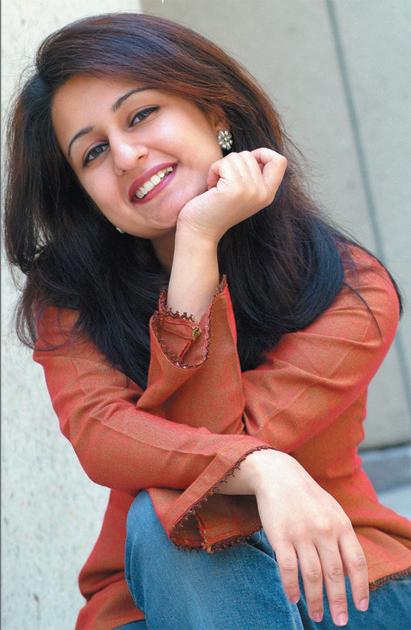

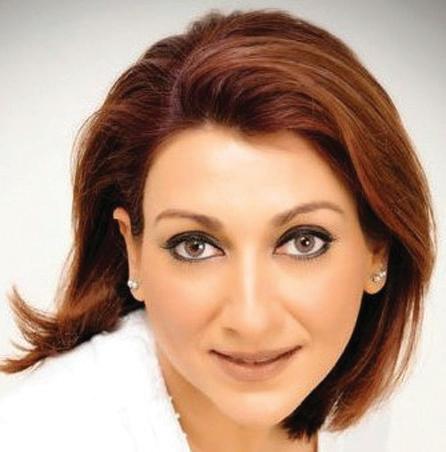





SEPTEMBER (1) 2010 <> 21 NATIONAL EDITION MON SUN AM 00-1 RAAT KE RAAT KE HUMSAFAR 1-2 EK AWAAZ EK AAWAAZ EK ANDAAZ DO ANDAAZ 2-3 MAGICAL 60s 70s MAGICAL 70s MAGICAL ULTIMATE 90s MOMENTS MOMENTS 3-4 WOH LAMHEY ALL FOR LOVE ALL FOR LOVE POPCORN 4-5 INSTRUMENTAL CLASSICAL MIX INSTRUMENTAL CLASSICAL MIX INSTRUMENTAL CLASSICAL MIX INSTRUMENTAL 5-6 BHAJAN PATH BHAJAN PATH BHAJAN PATH BHAJAN PATH BHAJAN PATH GURBANI GURBANI 6-7 7-9 JAAGO NA LIVE JAAGO NA LIVE JAAGO NA LIVE JAAGO NA LIVE JAAGO NA LIVE GURBANI GURBAN 9-10 BBC HINDI NEWS BBC HINDI NEWS BBC HINDI NEWS BBC HINDI NEWS BBC HINDI NEWS MAIN HOON NA MASTI KI LIVE PAATHSHALA LIVE 10-11 LIVE LIVE TWIST LIVE TWIST LIVE TWIST LIVE JUST CHILL LIVE MASTI KI PAATHSHALA LIVE 11-12 PM 12-1 TWIST LIVE TWIST LIVE TWIST LIVE MANGTA HAI MASTI KI BRUNCH MASALA BRUNCH MASALA PAATHSHALA LIVE 1-2 GOLDEN OLDIES WOH LAMHEY GOING SOLO WOH LAMHEY GOING SOLO GIRMIT LINK WOH LAMHEY LIVE 2-3 ALL FOR LOVE TOTALLY 2000 MEMORABLE ULTIMATE 90s MEMORABLE GIRMIT LINK LOVE SONGS DUETS DUETS LIVE 3-4 TA RA RUM PUM TA RA RUM PUM TA RA RUM PUM TA RA RUM PUM TA RA RUM PUM GIRMIT LINK MAST MIX LIVE 4-5 20 KA 10 (Top 10) 20 KA 10 (Top 10) 20 KA 10 (Top 10) POPCORN 20 KA 10 (Top 10) 20 KA 10 (Top 10) 20 KA 10 (Top 10) 5-9 RAAT GAYI RAAT GAYI RAAT GAYI RAAT GAYI RAAT GAYI MAST MIX MISSING SUNDAY BAAT GAYI LIVE BAAT GAYI LIVE BAAT GAYI LIVE BAAT GAYI LIVE BAAT GAYI LIVE LIVE RAAT GAYI RAAT GAYI RAAT GAYI RAAT GAYI RAAT GAYI BHANGRA MISSING SUNDAY BAAT GAYI LIVE BAAT GAYI LIVE BAAT GAYI LIVE BAAT GAYI LIVE BAAT GAYI LIVE BISTAR LIVE RAAT GAYI RAAT GAYI RAAT GAYI RAAT GAYI RAAT GAYI AAJA NACHLE MISSING SUNDAY BAAT GAYI LIVE BAAT GAYI LIVE BAAT GAYI LIVE BAAT GAYI LIVE BAAT GAYI LIVE LIVE RAAT GAYI RAAT GAYI RAAT GAYI RAAT GAYI RAAT GAYI REMIX HOUR MISSING SUNDAY BAAT GAYI LIVE BAAT GAYI LIVE BAAT GAYI LIVE BAAT GAYI LIVE BAAT GAYI LIVE LIVE 9-10 BBC HINDI NEWS BBC HINDI NEWS BBC HINDI NEWS BBC HINDI NEWS BBC HINDI NEWS EK AAWAAZ TOTALLY 2000 DO ANDAAZ 10-11 20 KA 10 GHAZALS 20 KA 10 TOTALLY 2000 GHAZAL DIL KI GOLDEN OLDIES (Top 10) SOFT (Top 10) SOFT KALAM SE 11-12 TOTALLY 2000 RAAT KE DIRECTOR SUPERSTARS CHALTE CHALTE RAAT KE MUSICAL HUMSAFAR SPECIAL HUMSAFAR LEGENDS Morning Masti LIVE (Talkback, Bollywod Bakwas, IT trend, money talk, latest Australian Indian events, total masti, travel, jokes,sher-o shayari,music)
INDIAN
RADIO Subscribe to Indian Link Radio for $9.95 each month. 24 hours, 7 days Indian Link Radio * Conditions apply: Minimum 12 months subcription, $50.00 refundable deposit LOCAL INDIAN RADIO IN AUSTRALIA Raat Gayi Baat Gayi LIVE (Traffic, News of the day, Fashion, Talkback, Bollywod Bakwas, IT trends, Money talk, latest Australian Indian events, Total masti, Talking points, Requests) Subah Subah LIVE (Overnight news headlines, traffic, weather, talk back, dicsussions, box office reviews, music etc) MAIN HOON NA LIVE (Bollywood news, current issues, weather, request, travel, immigration advice, money matters) MASTI KI PATHSHALA LIVE (Bollywood hit and miss, days of our lives, news, requests, your views, aap ko gussa kyuan aata hai) GIRMIT LINK LIVE (News from Fiji, local folk songs, Bollywood memories, request hour) MISSING SUNDAY LIVE (Local artists, pop music, gup shup, requests)
YOUR 24/7
LINK
Aussie training for India’s HIV-AIDS professionals

Millions of people today are either living with or dying from HIV and Sexually Transmitted Infections (STIs). The evolving epidemics have particularly affected resource-poor countries, leading to increased demand for both educational opportunities and research skills in these areas.
HIV/AIDS significantly impacts on the developmental outcomes of countries such as India, where 2.5 million adults currently live with the disease. While India continues to scale up HIV/AIDS prevention and treatment programs, what is needed is an adequately supplied and well-trained workforce for its health care system.
One of the strategies of Phase-III of the Indian National AIDS Control Program, is the strengthening of human resources required to address the problem. The Public Health Foundation of India (PHFI) is a major contributor to this. In continuation with its efforts, the PHFI, in association with University of Sydney, has been successful in obtaining an Australian Leadership Awards – Fellowships (ALAF) for 10 public health professionals in India to build capacity in research, health program management and policy development for
treatment and prevention of HIV/AIDS to help public heath.
Welcoming the public health professionals from India at the Indian Consulate in Sydney on August 24, Consul General Mr Amit Dasgupta termed the collaboration a great “health economics” and wished the attending professionals a great stay and enriching experience.
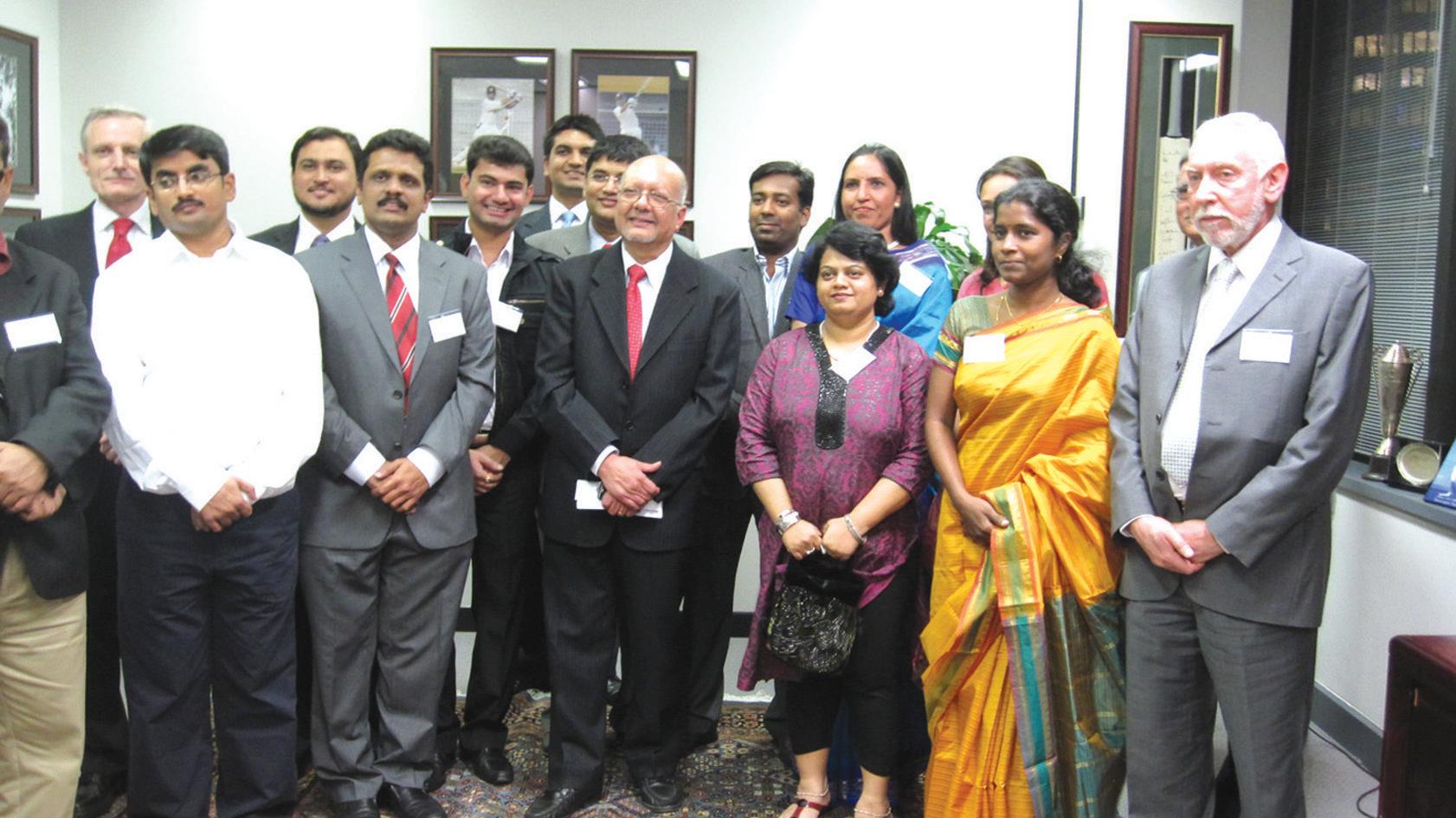
The award will fund a “Short Intensive Professional Program in HIV”, led by Professor Adrian Mindel, A/Professor Richard Hillman and Dr Shailendra Sawleshwarkar from the Sexually Transmitted Infections Research Centre (STIRC), Western Clinical School, University of Sydney. The program will commence in late August for a period of 3 months. It includes specialist training, visits to Centres of Excellence, leadership workshops and the award of the International Professional Certificate in HIV Infection (IPC-HIV) for those who successfully complete the program. STIRC is an internationally renowned research and teaching centre within the University of Sydney. It provides excellent opportunities to achieve very high levels of knowledge and skills in the diagnosis, management and control of STIs and HIV.
Talking about the program, Prof. Bruce Robinson, Dean of the Sydney Medical School said, “The Ministerial Statement between the Department of Education, Employment and Workplace Relations of the Government of Australia, and the Ministry of Human Resource Development of the Government of India, released on 8th April 2010 called for a broad knowledge partnership and greater cooperation across all education sectors – schools, vocational education and training and higher education
including technical and professional education through supporting the exchange of government officials and educationalists for continuous professional development. The University of Sydney’s “Short Intensive Professional Program in HIV” is an excellent example of this Ministerial Statement in action.”
This program complements Australia’s new international development strategy for HIV, ‘Intensifying the response: Halting the spread of HIV’, with regard to the Millennium Development Goal Six—to combat HIV/AIDS and work towards universal access to HIV prevention, support, care and treatment by 2010, he added
“Through the Short Intensive Professional Program in HIV, we look forward to developing our leadership skill, building capacity not in terms of clinical aspects but psychosocial aspects, enhance professional experience and develop networks so that when we go back to India we can share the same with our fellows,” said Mrs Aparna Shah who is here for the program from New Delhi. She has been working in the field of HIV/AIDS for years now.
“While there have been improvements in terms of treatment when it comes to HIV/AIDS, the biggest challenge for such patients is the social stigma attached with the disease which they face day in and out. Prevention and care is important for such patients but it is the care and support from the people around that they need the most. It has to be a comprehensive approach when dealing with HIV patients and it is this that we look forward to learning through this model program,” Shah said, adding, “And at the same time we have got a great opportunity for cultural exchange.”
22 <> SEPTEMBER (1) 2010 INDIAN LINK
INDIA-OZ www.indianlink.com.au
A University of Sydney training program welcomes leading public health researchers from India. MAMTA SHARMA reports
CG Amit Dasgupta and Sydney Uni officials with the visitng team



SEPTEMBER (1) 2010 <> 23 NATIONAL EDITION FOR TARDE ENQIRIES. G S PACIFIC MARKETING (AUST) PTY LTD Phone: 02 8860 9659. Fax: 02 9629 7978 Mobile :0404 491 870 Email : gs_pacific@bigpond.com Available in all leading stores in Sydney ENJOY THE AUTHENTIC AND TRADITIONAL TASTE OFINDIA . WITH 100% NATURAL WHEAT FLOUR ENRICHED WITH FULL WHEAT BRAN AND FIBRE GOOD FOR YOUR INNER HEALTH


Hidden aspects of the visual world brought to light
Runa Islam’s exhibition of cinema as an art form questions our ways of seeing images
Runa Islam, born in Bangladesh and brought up in London, has been mediating on the nature of visual media like cinema. She has been exploring its history and aesthetics and investigating the way in which time, space and meaning are manipulated by this visual media. Her first solo in Australia opened at the Museum of Contemporary Art (MCA) in Sydney recently. Her works were also part of the Asia Pacific Triennial held at the Gallery of Modern Art and Queensland Art Gallery in Brisbane earlier this year.
“Film to me, lends itself as an art form,” said Islam at an artist talk at the MCA on August 20. “It is image-based, condenses or stretches time and is a framing device; it has the ability to frame an idea or a concept. Film also has a transformative quality”.
The solo consists of six film-installation works created since 2003, and a related photographic work. The fourth floor of the MCA is transformed into an immersive space where screens are suspended from the ceiling or images are projected onto the gallery walls, and not a digital projector is to be seen! Islam’s works are film-installations – the spinning, whirring old-fashion film projectors are as much part of the artwork as the projected image itself. This use of projectors itself creates the distance between the viewer and the image, and you know what you are watching isn’t reality.
The first work encountered is Assault (2008), a small, backlit screen suspended mid-air in a corridor, where a series of bright, changing colours are projected onto an actor’s face: is it a man or a woman? That question is perhaps irrelevant. The actor squints and frowns as the frequency and persistency of


the colour shifts intensifies. The film perhaps articulates the assault of the mass media and its saturated images that we encounter everyday.
In Scale (1/16 inch = 1 foot) (2003), two images are projected, one on the back wall and the second on a smaller suspended screen hung in the middle of the room. Islam uses this literal juxtaposition of images to construct what she calls “a form of architectural wish fulfillment” for an ill-fated concrete building in the provincial English town of Gateshead. Developed as a car park with a rooftop restaurant, the large, concrete building however, remained unused. Islam went into the building and filmed three separate narratives: one of the disused building as it stood in reality, one of the original architect model, and a third a temporary restaurant set that Islam created within the building.
“It was an empty shell of a building. So when I was there, I saw it as a persona. I started to imagine what this personality would desire – it would want to be a restaurant. So I call it architectural wish fulfillment,” said Islam.
Soon there were debates about whether this disused building should be listed as a heritage site or demolished. This dichotomy of notions for the same building is what perplexed Islam. The building is, in fact, being demolished at the moment.
The 16mm film Be The First To See What You See As You See It (2004), Islam says offers another kind of wish fulfillment. In this large wall-projection, a woman walks into a museumlike space, closely observing the ceramic crockery displayed on plinths. She begins to touch and toy with the artifacts, as

many of us are often tempted to do in a museum. Finally, she nonchalantly pushes them off their support, as slow motion film captures their fall and shattering. These shots are interjected by scenes of the woman taking tea and biscuits in another location. “The two different set of images explore the object as it should be used (to drink tea) and as an artifact (on display in a museum),” said Islam.
In Untitled (2008), what at first appears to be a blurred, black-and-white abstract image, can be deciphered as a photograph of a hunting scene only when the camera zooms out to provide context for the image. Here Islam mediates on the framing capacity of film – the filmmaker’s ability to show only what he/she wishes to show.
She takes this concept a step further in her latest work, Magical Consciousness (2010), co-commissioned by the MCA and the Musée d’art Contemporain de Montréal. The work consists of a large, horizontal wall projection that takes as its subject a Japanese screen from the Smithsonian Institution, Washington D.C. The film captures not the highly refined landscape scene painted upon its frontal side, but the delicate squares of gold leaf applied to its reverse, which viewers would not normally see. Islam suggests there is much that we ignore or do not see outside the mainstream discourse of the media. She focuses on the unseen or the hidden aspects of the visual world.

SEPTEMBER (1) 2010 <> 25 NATIONAL EDITION
ARTS
Runa Islam’s solo exhibition runs at the Museum of Contemporary Art until November 21, 2010. Free entry.
www.indianlink.com.au
Shivangi Ambani-Gandhi
Symposium provides key insights into new Indian art exhibition
SHIVANGI AMBANI-GANDHI gets a closer, behind-the-scenes feel at the IndianEmpire exhibition

The sold-out, one-day symposium associated with The Indian Empire: Multiple Realities show at the Art Gallery of New South Wales on 28 August, 2010 shed greater light on these ‘multiple realities’ represented through the varied objects displayed in this exhibition.
Jackie Menzies, head curator of Asian Art at the gallery kicked off the symposium with a virtual walk-through of the exhibition, highlighting key themes as well as pinpointing interesting details in some works that viewers might miss. For instance, she pointed out, the images of the multi-armed Shiva and Ganesha had certain elements that showed the artists’ unfamiliarity with Indian iconography. Treating the images in ways the artist would probably treat Christian icons, the artist has depicted the Indian Gods as massive statues towering over devotees. The statues, meanwhile, are placed in a distinctly rococo setting with flowing curtains framing them.
Next up, was Jim Masselos, whose Portvale Collection forms the core of this exhibition. His talk highlighted the use of picturesque techniques used by European artists to depict Indian landscapes and ruins, in turns beautifying and exoticising the new land. Look at the images in the exhibition and you will notice these elements repeatedly: a heightened treatment of colour and light, small figures that provide scale for the landscape or architecture, trees in multiple shades providing variety and finally the angled perspective of architecture ad buildings.
Kama MacLean, who is a senior lecturer in South Asian World History at the University of New South Wales, focused her talk on the use of the tiger as a symbol of power - and eventually as a symbol of native India against the British Raj (which, in retaliation, took on the symbol of the lion).
Kajri Jain from the University of Toronto drew attention to popular prints, commonly known as ‘calendar art’, examples of which can be seen in the last section of The Indian Empire exhibition. She explored how European image-making techniques, particularly lithographic prints, were being used for anti-colonial purposes - visible in the images of nationalist images of ‘Mother India’ - as well as for distinctly Indian visual culture, that of Indian mythological characters. These mythological images particularly, she said, also helped democratise access to religion, hitherto controlled by the Brahmin caste (who controlled who could or could not enter temples or participate in rituals), by providing cheap, portable, massproduced icons for personalised worship. With this in mind, it is easy to see that these images were much more than kitsch.
Carole Douglas, who for the past ten years has been working with textile communities and allied institutions in Kutch, Gujarat, shared her conversations with the printers, weavers and embroiderers of this region. This talk provided a very interesting face to the beautiful examples of wall hangings, cholis, shawls, and bags from the regions of Kutch and Saurashtra, which are on display as part of the exhibition. Douglas’ research reveals a community of textile workers committed to traditional techniques as well as environmental sustainability.
Kate Brittlebank, who was until recently senior lecturer in Asian History at the
University of Tasmania, explored the interesting back story to the collection of an album of Kalighat paintings by a Christian missionary in India.
Finally, the day concluded with a lighthearted presentation by artist Pushpamala N, whose set of photographs concludes the exhibition. She revealed the many hilarious situations that she and collaborator Clare Arni got into, while recreating the various studio shots in her house.
This symposium, supported by VisAsia and the Australia India Institute, offered new, valuable insights that enable viewers to read deeper into the objects on display as part of the Indian Empire exhibition.
www.artgallery.nsw.gov.au.

26 <> SEPTEMBER (1) 2010
ARTS www.indianlink.com.au
The Indian Empire: Multiple Realities exhibition runs until November 7, 2010 at the Art Gallery of New South Wales. There are other, free exhibition events as part of the Art After Hours program starting 5.30 pm on September 15, 2010. Exhibition entry is free. For more information, please visit
(Above) Moti Masjid, Agra: Albumen photograph, Samuel Bourne (18341912), Portvale Collection
(Right) HH The Maharana Saheb: Unknown photographer, 1870s, Portvale Collection
India of another age
SHIVANGI AMBANI-GANDHI on TheIndianEmpire, a new exhibition at AGNSW

“Everyone in India seems to know Jim. Every where we went, someone would be calling out, Jimji!” said Jackie Menzies, head curator of Asian Art at the Art Gallery of New South Wales, at the opening of The Indian Empire: Multiple Realities
She was referring to Dr. Jim Masselos, whose large collection of India-related material - The Portvale Collection - forms the core of The Indian Empire exhibition which continues until November 7, 2010. Menzies’ observation should not come as a surprise to those who know of Dr Masselos’ intensive travel over 40 years across India, London and Australia, building up this collection. On display are materials covering 200 years - from the 1700s to the 21st century which follow the cultural dialogue that occurred between the colonizers, the British and the colonised Indians. The British response to India is captured in texts, books, prints and photographs, while the Indians adopted lithography and photography alongside their existing traditions.
The exhibition begins with a range of early maps of Indian regions. Interestingly, these capture not just the topographical features with beautiful detail, but also document the centres of military, administrative and religious (Christian) power. Alongside, are the earliest images from when the British first encountered the vibrant and often bizarre customs and traditions of Indian people. Images here range from multiheaded deities to the custom of sati
In the same section, is a work by an unknown artist from Kutch in Gujarat, depicting what is meant to be St Paul’s Cathedral - only in the artist’s imagination, the gargoyles seem to have turned into soldiers on the roof, and the people are depicted wearing Chinese-style hats, while a stylised cloud floats over the scene. This image goes to show that just as the English were creating exotic imagery of India, the Indians too were imagining their European ‘other’. These works are followed by works which belong to the Company School - so named because they were often commissioned by employees of the East India Company.
These include images of Indian people from varied regions as well as landscape images including one of the Taj Mahal and another of the Elephanta Caves in Mumbai. These images, when seen together, evoke a vivid image of India of the time.
….just as the English were creating exotic imagery of India, the Indians too were imagining their European ‘other’
Another important part of the Portvale Collection on display as part of the exhibition is the textile section, which includes wall hangings, cholis, odhnis and purses - all beautifully handcrafted, embroidered in varied hues with shimmering mirror-work from the regions of Kutch and Saurashtra in India.
However, the major focus of the

Portvale Collection and this exhibition is photography. These photographs capture the lives of the colonials as well as the Indian princes, artisans, military and civilian personnel - capturing a vivid picture of the everyday in India at the time. The photographs also include some beautiful landscapes as well as some family albums in black and white.
Also included in this section are some very interesting, and often humorous illustration books created for the public in Britain who may have never visited the exotic colony. A page from Indian Spices for English Tables for instance, takes a dig at the local shipping practices.
The story of the Indian Empire ends with the Indians’ adoption of lithography and photography - in this exhibition,
mainly captured through the works of artists Raja Ravi Verma and Pushpamala

N. Verma’s prints depicting Hindu deities and historical heroes in kitschy, saturated colours. Pushpamala N. with Clare Arni, on the other hand, mediates on the history of photography as a tool used to identify native peoples. This project, Native Women of South India, illustrates the choreography and spectacle involved in early anthropological studies, by re-enacting stereotypes of women. Among the ten photographs from this series on display, is one of the (in) famous Indian politician Jayalalitha posing as Hunterwali in Cracking the Whip
The Indian Empire: Multiple Realities will continue at the Art Gallery of New South Wales until November 7, 2010. Entry is free.
coaching in
SEPTEMBER (1) 2010 <> 27 NATIONAL EDITION
ARTS www.indianlink.com.au
For expert
Lowest Fee Guaranteed IELTS IELTS GURU Suite -1, 71 A Macquarie St, Parramatta, Phone 0411 520 546, 9687 9741 www.ieltsguru.com.au • Power Packed Sessions. • One and Two Weeks Crash Courses Available. • Money completely refundable, if not satisfied with the first tuition session. Bamyan travel agency needs one travel conseltant for full time or part time job. Should be familiar with reservation system Additional knowledge of languages preferred Pl. fax resume on 0296463699 Or call on 02 96463688 0422881997
Janmashtami at AHMA
The Janmashtami celebrations organised by the Australian Hindu Multicultural Association (AHMA) ended with a special puja to commemorate the birth of Lord Krishna on September 1. The eight day long celebrations concluded with a special havan, recitals of the 108 names of Lord Krishna, songs, bhajans and dancing, followed by dinner and distribution of the holy prasadam. The event was attended by over 300 devotees mainly from the Indian subcontinent and Fiji, with many children dressed in their finest Indian attire.
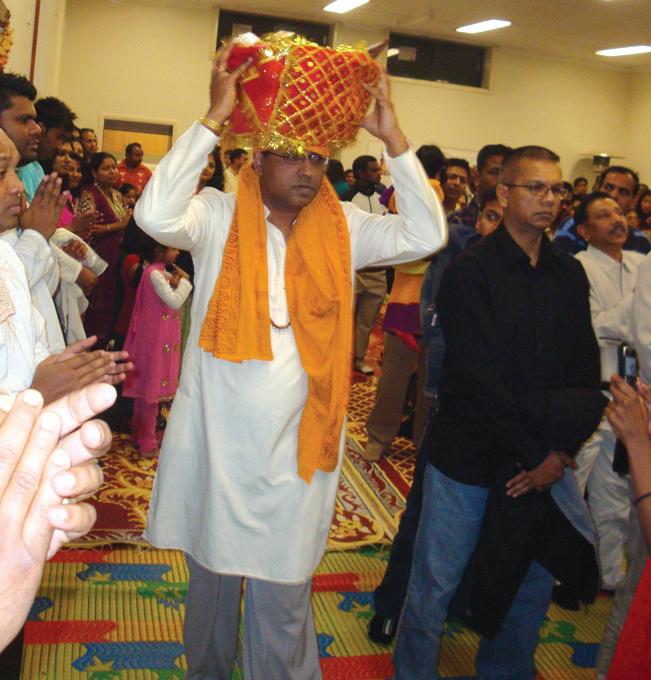

The celebrations over the preceding eight days were also well-attended with over 150200 people putting in an appearance each day, despite it being a working week. On the final day, celebrations began at around 7pm and concluded close to midnight.
The final celebration recounted the miraculous nature of Lord Krishna’s birth and included an enacting of the event, with the young baby Krishna being placed in a specially decorated crib, after his rescue from the clutches of his maternal uncle Kansa, by his father Vasudeva. Krishna Janmashtami is observed on the Ashtami tithi, the eighth day of the dark half or Krishna Paksha of the month of Shraavana in the Hindu calendar, when the Rohini Nakshatra is ascendant. The ritual is to fast on the seventh day (Saptami), which is followed by a night-long vigil commemorating Krishna’s birth.
Vishnu Sharma, a key organiser of the event stated that the Association and its members were very happy at the response to this year’s celebrations. “We had very enthusiastic devotees on each day of the celebrations, and on the last day it was good to see so many people and children come together to honour the birth of Lord Krishna,” he said.
The AHMA, founded in 1993, has been celebrating Janmashtami as an annual event since the past few years. This notfor-profit organisation aims at promoting social, cultural, spiritual and educational activities for the benefit of the community. Its Cultural Centre was the venue for the Janmashtami celebrations, and is a central location for members to celebrate their
cultural values and beliefs. The Centre is located at 1050 Richmond Road, Marsden Park NSW, and is open to worship for all.
The AHMA also conducts Hindi speaking classes, as well as Indian classical and Bollywood dancing classes at various venues. More details can be found at www.ahma. org.au
Sheryl Dixit
And the lucky winner is….
We are pleased to announce the winners of lucky draw held amongst the visitors to the Indian Link stand at the India Australia Friendship Fair 2010 on 15th August at Olympic Park.
And the lucky winner is Meher Kapadia, a resident of Penshurst, who gets to enjoy a beautiful viewing experience with the perfect family LG 32 inch HD LCD Television.

The prize was sponsored by Jack Chembirika (j.chembirika@cba.com.au), Mortgage Innovation Manager, an authorized representative of the Commonwealth Bank of Australia. Jack is specialized in meeting the home loan needs of the members of the Indian community here.
First time lucky in “lucky draw”, Meher says she did believe in lucky draws but had never won it till now. “Frankly, I had forgotten about entering into the draw on August 15th. It’s a great feeling to win. The TV has certainly been an upgrade to our TV viewing experience both in terms of size and features from my earlier 22 inch TV.”
Thanks to everyone who participated and congratulations to the winner. And for everyone else, don’t despair as we have many more campaigns coming up in future where you can try your luck.
Look out for updates at our website www.indianlink.com.au
You never know, you could be next!
28 <> SEPTEMBER (1) 2010 INDIAN LINK
COMMUNITYSCENE www.indianlink.com.au
Jack Chembirika with Indian Link lucky draw winner Meher Kapadia

SEPTEMBER (1) 2010 <> 29 NATIONAL EDITION
Racism and relationships
A powerful new play confronts the issue of racial prejudices among youth
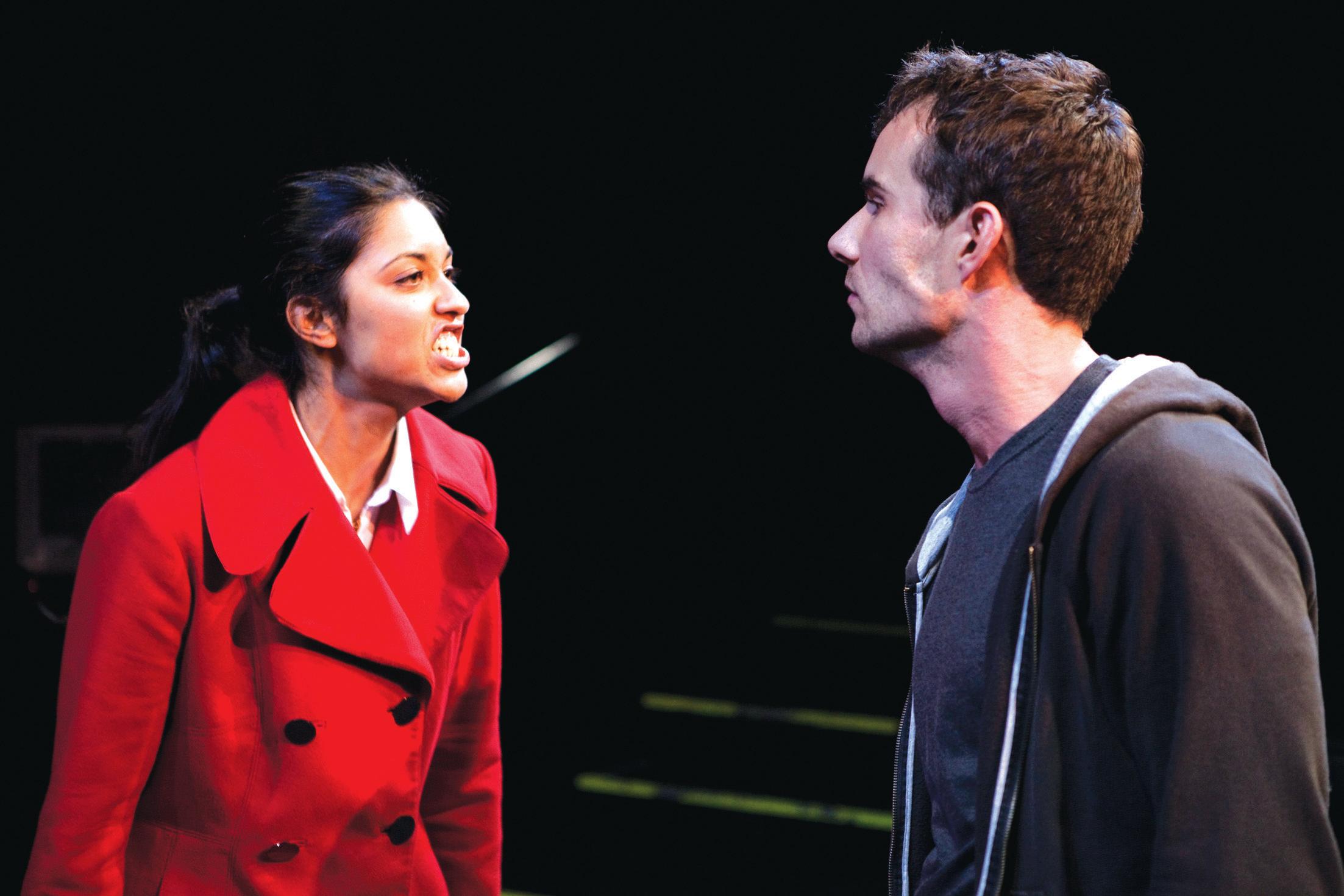 BY SHIVANGI AMBANI-GANDHI
BY SHIVANGI AMBANI-GANDHI

From its premier in the Royal Court Theatre in London in 2007 to its recent showing in a small studio space of the Australian Theatre for Young People (ATYP), the themes of racial tensions and prejudice in Alaska are just as potent in both cities. “While it’s specifically very British, it is an extremely relevant play for Australian audiences,” says director Janice Muller, before citing the example of recent racially-motivated attacks on Indian students in Australia.
Set in Britain, the play centres around four young employees working at a kiosk in a multiplex cinema. 24-year-old Frank (Matthew Hyde) has dropped out of university to avoid mingling with the Pakis. Mamta (Kristy Best) is an AngloAsian 19-year-old who has joined the team recently, is eager to make some friends and is especially attracted to Frank. Emma (Hannah Levien) shows a marked loyalty to her friends, but has some questionable morals. And Chris (Andre Jewson) is a hopeless romantic, and yet his first instinct is selfprotection.
From the moment Mamta enters the staff room, the audience knows the attitude this young woman is going to face at work. At first, assumed to be a customer, she is rudely told to get out of the staff room by Emma. Then the introductions don’t go to smoothly either: “What kind of name is that?” asks Emma. “It’s mine,” Mamta replies.
Despite the early hiccups, Mamta
seems to be making her way around her colleagues – Emma is on friendly terms, and while sorting stale Maltesers, even Mamta and Frank share a moment of bonding and attraction. Just when it looks like things could just end up all well, Mamta gets a promotion and she takes to bossing over her old colleagues, which unleashes the wild hysteria in Frank.
But there are no simple answers in this production, that is, there is no good vs. bad. While Frank has his obvious racist views about the Pakis, even Mamta resorts to racial stereotyping of “gypos” and is absolutely cold-hearted when her brother beats up Frank.
“Mamta’s cold-heartedness – that’s obviously who she is. She is also someone who wants to get on in life
no matter the cost and she is young, only 19, so she has a lot to learn,” says Muller.
While unravelling racial prejudices in young people, this production also heightens the loneliness and alienation faced by young people today.
“The play is very much about the need for connection and relationships, and how young people behave when starting to investigate who they are, what their identity is and, independent of their families and backgrounds, go about trying to connect with others,” adds Muller.

Alaska is critically, a play for young people, by young people. It was written by DC Moore as part
of the Royal Court’s Young Writers’ Programme in London. In Australia, it has been produced by the ATYP, which produces work and classes aimed at children right up to the age of 25.
“Obviously this play is not suitable for small children, but we thought older teenagers and young people in their early twenties would relate to the content and relationships portrayed in the play,” says Muller. She is also currently a mentor for the ATYP Fresh Ink programme.
In 2003, Muller received the VCA’s Keith & Elisabeth Murdoch Travelling
Fellowship which took her to work in Germany, Spain and India. “I lived for a couple of months in Mumbai where I worked with a local theatre company there called The Company Theatre. I just got involved watching their work, giving feedback and helping out where I could,” recollects Muller. “I am very fond of India, having travelled there previously and I have friends there too. I also met some very interesting writers and directors from India when I was attending the Royal Court residency in London in 2001, where I might add, I experienced racism first hand, while out and about with my Indian friends.”
INDIAN LINK STAGE www.indianlink.com.au
While unravelling racial prejudices in young people, this production also heightens the loneliness and alienation faced by young people today
Kristy Best as Mamta and Matthew Hyde as Frank in Alaska
Jadu hai nasha hai...
SANDIP HOR is captivated by the music of Shreya Ghoshal
I became a fan of Shreya Ghoshal after hearing her golden voice in the film Parineeta - the gentle number Piyu Bole simply captivated me. She is one of those talented singers who touch your mind afresh every time you hear her, no matter how many times you have heard her before.
Perhaps that was in the mind of the crowd who overruled the winter blitz and congregated at the Hills Centre in Castle Hill on 21 August, to be part of Shreya’s second live performance in Sydney, after that scintillating maiden show at the prestigious Opera House in 2008, where it was just veni, vidi, vici for her: she came, she saw and she conquered Shreya, as we know, has become a household name in the world of Bollywood music. She catapulted into fame in 2002, after her debut in the film Devdas where she sang the songs for the character Paro, portrayed by the legendary Aishwarya Rai. Her honeyed, silky voice that suits romantic sequences most appropriately soon mesmerised music lovers all over the country.
Born to a Bengali family, she grew up in Rawatbhata, a small town near Kota in Rajasthan where her father worked with the Bhabha Atomic Research Centre.
As a child, she participated in the Zee TV’s Sa Re Ga Ma song contest and drew the attention of famous music director Kalyanji who judged the competition. He persuaded her parents to move to Mumbai, so that Shreya’s talent could get much closer exposure to Bollywood. That was the right advice, because while competing second time for the Sa Re Ga Ma contest in the adults category, the famous film director Sanjay Leela Bhansali spotted her and gave her a break in his classic film Devdas. Her success here built the stairs for her rise to the top.

She is now only 26, but has already lent her voice in over hundred films, several of which have been box office hits, her songs being a contributing factor for that. Her phenomenal appearance in Bollywood happened at a time when the industry was pondering whether the legendary
Lata could ever be replaced - today there is no hesitation in any quarter to proclaim her the ‘melody queen’ of the new generation.
Thanks to the organisers, the program started on time, but unexpectedly. Three local artists came on first: they were good singers, for sure, but perhaps not the most fitting to open at a high profile soiree, particularly with a dazzling top performer like Shreya, where the audience undoubtedly arrives with a very high level of anticipation. Shivprasad Mallya, the male singer accompanying Sherya did his best to liven up the dampened spirit with a couple of high energy songs just before the star of the night came on stage. Even then the mood did not spring forth till Shreya, realising the droopiness, swang into action with that lilting hit Chini kum chini kum. And this sweetener introduced the desired momentum into the evening! After that, it was one hit after another in a simply fabulous playlist: Jadu hai nasha hai (Jism), Tujme rab dikhta hai, (Rab Ne Bana Di Jodi), Teri ore (Singh is King), Piyu bole (Pareenita), Thode badmash (Saawariya), Pal pal har pal (Lage Raho Munna Bhai), Yeh ishq hai (Jab We Met) and Tumi je aamar (Bhool Bhulaiyaa). That golden melodious voice, blended with tremendous control over the domain of music, testified superbly to her countless honours, including no less than four National Film Awards.
As the evening progressed she slowly captured the audience with the range of moods her songs rendered, from being sensuous to rocking, clapping and tapping.
I felt that the gap between her two halves, almost an hour, was too long: it served, sadly, to disconnect the audience
from the lingering melodic tempo that was stylised in the first half. Still, comedian Nitin Bhandarkar’s performance was enjoyable, particularly his impersonation of stars like Dev Anand, Amol Palekar, Manoj Kumar and Abhishek Bachchan.
Shreya’s second half presentation, starting with a bang, included smash hits like Barso re (Guru), Zoobi doobi (3 Idiots), Dhum taana (Om Shanti Om) and Salaam-e-Ishq (Salaam-eIshq). But when it unexpectedly ended up into a series of regional songs, I thought it loosened the pace and impetus of the glamorous evening. She soon ended the program with her evergreen song Dola re (Devdas), perhaps leaving many with the disappointment of not hearing from her, many more of their favourites.
Apart from her honeyed and silken voice, Shreya’s strength in capturing the audience, is her onstage manner: filled with modesty, friendliness and a down-to-earth quality, she presents herself as “one of yours” in a very humble way, and I think that quality makes her an exceptional performer, someone not only wonderful to hear, but charming to watch as well.
In this instance, she was no different. In between songs she ceaselessly engaged with the audience, prodding them to sing with her, making every effort to make the evening truly memorable.
Shreya Ghoshal was brought to Sydney by AusBan Media
Sandip Hor is a freelance columnist and a Member of the Foreign Correspondents Association (FCA), Australia and South Pacific

SEPTEMBER (1) 2010 <> 31 NATIONAL EDITION
STAGE www.indianlink.com.au
Her phenomenal appearance in Bollywood happened at a time when the industry was pondering whether the legendary Lata could ever be replacedtoday there is no hesitation in any quarter to proclaim her the ‘melody queen’ of the new generation
Photos: Rudrajit Mitra
Homage to Carnatic legends
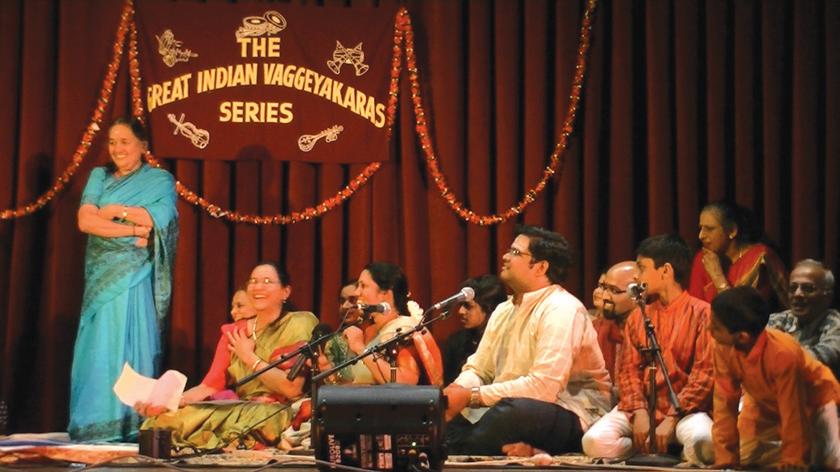
A distinguishing feature of Carnatic music is the availability of a lyric, or a composition, to render a raga. Many composers have enriched the treasure of such compositions and are called “vaaggeyakaras” – those who compose the verbal as well as the tonal-rhythmic structure of the song. Tyagaraja, Dixitar, Shyama Shastry and Purandara Dasa are but a few vaaggeyakaras who continue to keep us spellbound even after centuries. In Sydney’s Carnatic scene, the Great Indian Vaaggeyakara Series has been paying homage to such composers every year by choosing one of them and presenting their compositions. Fourteen composers have been considered during the past ten years.
This year, celebrations were held at the Homebush High School in Sydney on August 14 to mark the tenth anniversary of the program. Compositions of several of the vaaggeyakaras were presented. This took the form of group rendering, performance by individuals and small groups and an Anthakshari as well.

Some of the great compositions in Carnatik music were heard again – Mathe malaya dwaja pandya sanjathe, Rave himagiri kumari, Sarasi janabha sodari, Senthil andavan and Palukavademira
The senior singers paid their tribute with much reverence. But the youngsters born and brought up here in Australia, attracted everyone’s attraction on this occasion. One simply has to mention Rohini Prasad and Sudarshan’s effortless rendering of Palinchu Kamakshi, not an easy piece. Sudarshan went off to play with his brother after this! Indu Narendra, Tulasi Shankar, Poorvaja, Nithya Ramesh, Abhirami, Vaidehi, Bhoomika and Gayatri Chaganti were full of confidence and will surely be the new voices we shall all be proud of. Organisers Mrs. Radha Giridhar and Lakshmi Raman deserve our complements for keeping this activity going.
Tall tales in ten minutes
Ten plays, ten minutes each - most of them exploring the Indian-Australian identity. This was the structure of Abhinay School of Performing Arts’ latest event. On August 29 2010, Abhinay playwrights, some of them, first-timers, offered up their works for readings by actors from Short + Sweet, the largest ten-minute theatre festival in the world.
The range of themes captured in these ten short plays, is the success of this structure. The plays ranged from hilarious comedy with its fair share of sexual innuendo, to downright serious issues like racism. While one play delved on the consequences of a one-night-stand, another captured the young Indian’s contiuing battle against arranged marriages.


The scripts emerged from a playwrighting workshop with Alex Broun, Artistic Director of Short + Sweet, Australia and New Zealand, as well as a patron of Abhinay.
None of the actors participating in the readings had access to the script prior to the day of the event - bringing a powerful immediacy and vigour to the readings. Overrehearsed and over-polished productions can sometimes appear stale; these readings were fresh and raw.
While most plays were entertaining and thought-provking, of course there were a couple of duds. Some went over the time-limit of 10-minutes, requiring heavy editing, while others came well under the time limit, indicating a subject that needed further fleshing out. One of the plays was
overt propaganda for a well-known Indian meditation guru, while another play about coping with tragedy appeared to be an unfinished script.
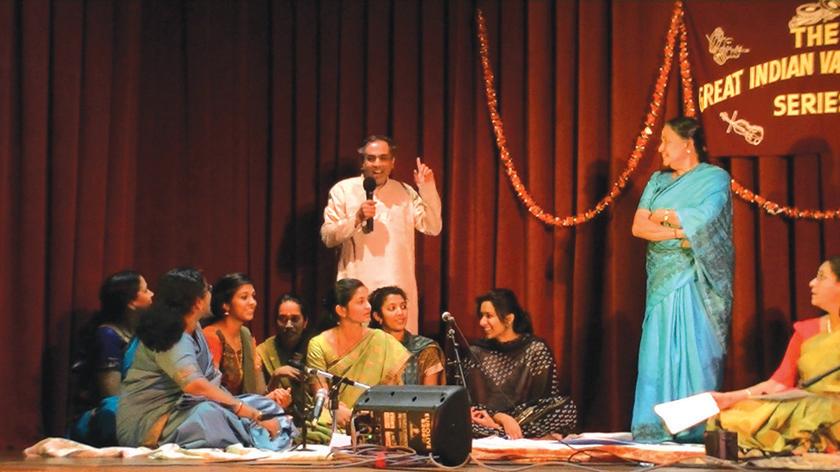
However, that is the importance of such stagings - to give the budding writers an opporunity to see their works come to life, while also giving audiences an opportunity to sample new talent.
The writers at this reading though, were playing for high stakes. Based on audience votes as well as judges’ decision, one of the plays would make it into the Top 100, while another would be selected for the Wild Cards section of Short + Sweet Sydney 2010. The winner selections were stand-out scripts and performances.
The winner into the top-100, Quarantine by Neena Badhwar and Vee Malnar, was a comic critique of Australia’s quarantine regulations that may seem rather too harsh to unsuspecting tourists, especially Indian mothers. Meanwhile, The Fallopian Channel by Kathryn Yuen, which as the title suggests was a comic imagination of the life of sperms, was selected into the Wild Cards Section.
This is an excellent effort by Abhinay to bring Indian talent and stories to the mainstream audience of Short + Sweet. And the writers have proved they are a valid voice, with entertaining, yet meaningful stories that need to be heard by Australians.
Shivangi Ambani-Gandhi
For more information, please visit www.abhinaya.com.au.
32 <> SEPTEMBER (1) 2010 INDIAN LINK STAGE www.indianlink.com.au
Sydney Srinivas Anthyakshari
Rohini Prasad and Sudarshan Ravi
Anthyakshari
A shot from the reading of Quarantine
A still from the reading of TheFallopianChannel
Breathing life into world music
Tabla player Yama Sarshar collaborates with other percussionists to create a new band
 BY FARRHA KHAN
BY FARRHA KHAN
On a beautiful yet chilly August night, the percussion band Nafas performed their first concert together as part of Blacktown Arts Centre’s Echo Music series. Headed by talented local, Yama Sarshar, Nafas showcased their first collaborative piece Rhythms of Life on Saturday, 22nd of August.
Nafas, which translates to ‘breath’ in the Farsi language, brings together different musical styles and instruments from Afghan and North Indian traditions as well as Mongolian, Western, African and even South American sounds.

Walking into the Blacktown Arts Centre, I wasn’t too sure what to expect. The audience filed in and filled the seats. The instruments were all set up on stage and Maria Mitar, the Performing Arts Development Officer at the Blacktown Arts Centre, came on to introduce Nafas. As she left the stage, the musicians didn’t enter the stage. What were they waiting for?
Nafas, which translates to ‘breath’ in the Farsi language, brings together different musical styles and instruments from Afghan and North Indian traditions as well as Mongolian, Western, African and even South American sounds
My interest peaked when young Ali Sarshar walked onto the stage and stood in front of his harmonium. Why? Because he didn’t play a thing.
The audience was silent save for a few murmurs of confusion and slight unease. The stage only produced the sounds of young Ali’s quiet breathing. And then he began to play, rhythmic and constant, they way we all breathe. I was intrigued, hooked yet waiting for something to happen.
The moment the second performer, a Mongolian singer and Horse Fiddle player, Bukhchukuun Ganburged, came on stage, I realised the significance and irony of the name ‘Nafas’. The moment he began to sing, accompanied by Ali’s ever present and rhythmic harmonium, I was breath-taken. He was singing deeply and playing his Horse Fiddle. I realised he was singing two different pitches at the same time. He was a throat singer, something I had never seen nor heard of before.
Next came Yama Sarshar with his tabla and dholak. Then Chris Field on his Western drums set and then Philippe Lincy with a whole array of drums and other percussion instruments from Africa and South America.
And then began an amazing live communication between the performers and their instruments. As they played a competition of rhythmic capabilities between the different instruments to creating a building symphony, I was moved by the sounds they were creating. I was laughing, tapping my feet, bopping my head and even participating through clapping or singing along. The music had become alive and was interacting with the audience, not only the musicians.
Talking to Yama Sarshar after the performance, I was able to gain more insight into the background and future of Nafas. Yama explained that Maria Mitar, having worked with him previously, approached him 3 months ago for the commission of new work.
“This was the first thing that came to my mind,” Yama said. “Having different percussionists and different musicians from all over the world and combining it into one”.
Yama had performed with Philippe and Chris before, and after he approached them with his idea, they soon came on board for this project as well. Richard Petkovic, the Music Director of this project, discovered Bukhchukuun Ganburged performing in Newtown.
“Richard saw him and said ‘Hey! What are you doing? Come with me!’ and got him involved,” Yama described with a laugh.
Rehearsing for two weeks before the concert, almost every day between 5 to 6 hours, Yama explained that it was “lucky the chemistry between us was there.”
“What we were trying to achieve was showing the start of life, and then continuing, working our
necessarily in such a collaborative manner. Yama explained this was something he was very excited about. This project symbolized a varied world music collaboration. “We had never worked together like this before,” Yama said.
The Indian community in Sydney already knows Yama and Ali and their sitar player dad Sarshar, quite well.

Yama is an Afghan born in Australia who has been learning tabla from a very young age, first with his father then in India with renowned tabla masters Ustad Alla Raka, Ustad Zakir Hussain and Fazal Qureshi.

Learning tabla, Yama explained how he wanted to keep experimenting with the instrument and learning new ways of creating music. “It’s all about experimenting. I want to get other musicians from other countries with other instruments involved as well in the future.”
Nafas has already begun recording their music and will be performing next at the Parramasala festival and the Sydney Festival. “My vision of this whole project is not just to keep it in Australia, but taking it to an international level,” Yama said. “Create something contemporary that all types of people can hear. Something new.”
Needless to say, the small debut performance at the Blacktown Arts Centre was a very successful night.
“It wasn’t just Indians, or Afghans or Africans. It was a mixed crowd and everyone was touched by the music. Everyone felt it.”
Everyone’s response was definitely positive that night. The fact that people were moved by this project and the music they had created together made Yama feel like “I have accomplished what I’m trying to do here”.
Yama’s last few words to me were: “Music and art - these things are life.” After their performance, I couldn’t agree more.
STAGE www.indianlink.com.au
Fifteen years young: AHIA’s Senior Citizens’ Forum

There are fresh challenges for members of our community who move here from India in their senior years. But there are special avenues that help them settle in
BY VIMLA LUTHRA
Australia and India have vastly different social and cultural values. Migrating here in one’s old age can be quite hard – it takes a much longer time to settle down. Little plants replanted grow easily, but big old trees mostly wither and finally die.
When I moved here in 1994, I could not meet a single soul from among the humanity around me, of my own age and background, who I could meet and greet and talk to in my own language. A social vacuum constantly reminded me of my loneliness.
In March 1995, came a boon from the blue. Bindu Kalra, Nalna Sajde and Anju Maini visited me at my home. They informed me that Dr Rakesh Sachdeva was starting a Senior Citizens’ Forum as a sub-branch of Australia Hindi Indians Association (AHIA) and asked me if I would like to join. I would love to, I replied readily, but how would I get there and back? Don’t worry, they said, we’ll take the responsibility of transporting you.
are still driving me to the monthly meetings.

I remember clearly that first meeting, held in a community centre in Castle Hill. There were a small bunch of people, many of who I was meeting for the first time. There was Rakesh Sachdeva, myself, Mr and Mrs Gambhir Sr, Mr and Mrs Gambhir Jr, Mr and Mrs Gakhar, Ishwari and her husband Vimal. And Mrs Dhir. To this day, I can’t forget Mrs Dhir, who came in a wheelchair from her nursing home. She wept constantly.
We introduced ourselves and learnt about each other. Bindu, Nalna, Rani and Anju, also present, served us snacks and drinks lovingly. At the end, we eagerly set a date for the next meeting.
The news spread rapidly and by the end of the month, there were enough interested Seniors for us to move to Parramatta Library. Members were happy to meet like-minded people and spend a few hours with the new friends.
Soon, people’s talents began to come to the fore and we began to have songs and poems, small talks and plenty of information. Mr Gambhir helped organise these little ‘cultural programs’, with Rakesh Sachdeva supervising. Soon we had people from various organisations invited to talk to us about issues that confront us – old age issues of physical and mental health, community care programs, etc. The entertainment programs took on wider scope, with picnics and cruises and music shows with leading Sydney entertainers. Bingo was introduced for our pleasure, as well as movie shows.
Amongst our members, we unearthed rich talent – we had poets and singers, writers and speakers, debaters and dancers! Like old gems, hidden for so long, they are all showing their true colours now and shining brightly.
We have now been meeting at Westmead
for years.
The first Senior Citizens Forum in the Indian community here, it has grown, in fifteen years, from a tiny seedling into a large banyan tree – under the shade of which some 150 members relax. It has also forged the way for many other such clubs to spring up in different parts of the city.

The monthly magazine News and Views is praiseworthy. Thanks to it, we are rediscovering the values of our old life, and are always thrilled to see each others’ faces in it, glowing with warmth and happiness.
No doubt, running the Seniors Forum is colossus work. It is truly the result of the never-stopping efforts of its executive members Dr Sachdeva, Mr Bajaj. Mr Tilak Kalra, Mr Yash Bhasin, Mr Rajendra Channa and others. Each of them manage different portfolios to run the movement effectively. Members are ferried to and from railway stations. A sumptuous tea is served every meeting.
Of course, behind every successful man, there is a woman. Each of these executive members is supported whole heartedly by their better halves. Sarita, Raj, Bindu, Nalna, Rani, Subhashini, Charanbir are all like Annapurnas serving tea ever smilingly.
Seniors in the Indian community keenly look forward to the second Saturday of each month. From every direction, they come to participate in an afternoon of fun.
I wish to thank the organisers, all of who have brought sunshine, warmth and happiness in our lives. Even the government has lauded their efforts: the NSW Government has awarded Dr Rakesh Sachdeva and Dr Yash Bhasin with Achievement Awards, and the Australian Government has recognized Dr Tilak Kalra, Santram Bajaj, Raj Bajaj, Sarita Sachdeva and Bindu Kalra for their selfless service to Senior Citizens.
INDIAN LINK
SENIORS www.indianlink.com.au
Seniors celebrate Independence Day
Long live India… best wishes to the land of India. These were the feelings at the Independence day celebrations organised by the Indian Seniors’ Group, Hornsby (ISGH). Most of the members of the group had seen pre-independence times, and it was incredible to see the excitement in the group during the celebrations. It showed that the Indian-origin people, whichever part of the world they live in, are always attached to their motherland and culture.
The ISGH may well be a seniors’ group, but the participation in the celebratiosn this time round attracted people of all ages, from 4 to 84. Children presented various programs for the entertainment of the seniors, and young men and women were busy in the service of the elders. It was indeed heartening to see the devotion of the youngsters towards our seniors as valued members of the community. And as a result on this occasion, even the oldest members participated with enthusiasm.
The program was organised by 84-year-old president Mrs Mira Raheja with great gusto. She welcomed the guests on the occasion and told the agenda for the day to all present. Chief Guest on the occasion was the Consul General of India Amit Dasgupta. Other dignitaries present were Judy Hopwood (MP, Hornsby shire), Nick Berman (Mayor, Hornsby council), Aruna Chandrala (President UIA) and Nihal Agar (President Hindu Council of Australia).


The event began quite appropriately with a song and dance performance on the number Vande Matram, by the students of AIBBV Hindi School, Thornleigh. Everyone in the audience, including the non-Indians attending, clapped with enthusiasm. A highlight of the cultural program was surely the dance by the littlies Ananya (4 years), Juhi (8), Shahad (4) and Venouse (4) from Afghanistan.
Chief Guest Amit Dasgupta spoke about the meaning of independence in the words of Mahatma Gandhi who said the true independence will be achieved only when no individual sleeps with an empty stomach, everyone is properly clothed, and has a roof over their head. Mr. Dasgupta also distributed gifts and certificates to the performing children.
Abbas Raza Alvi, the Director of Vidya Bhawan Sydney, and a famous poet, recited


some of his poetry. His philosophical poem The kites, went down particularly well. Another invited poet was Om Krishan Rahat, who also engaged the audience, just like he does every time he presents his works.
Nick Berman and Judy Hopwood, in their speeches, showed their commitment to help the seniors group in terms of resources, like a community bus for various activities of the group etc. ISGH has received tremendous support for the Hornsby Council for its activities, allowing it to grow to the level it has in recent months. Ms. Hopwood had announced that this will be her last term in State Parliament, and to show their gratitude the group presented a certificate and a shawl
to her, for which Aruna Chandrala did the honours.

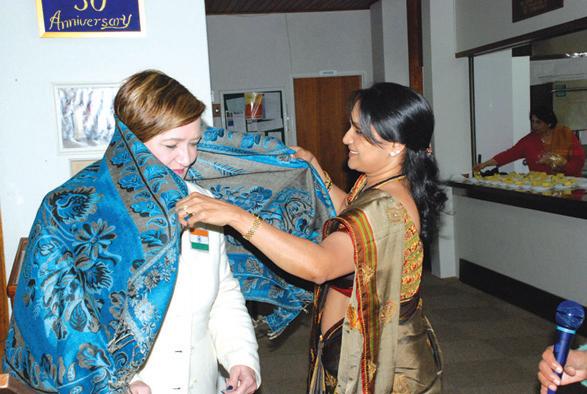
Nihal Agar explained the role of Hindu Council of Australia in our society and gave the audience an insight into their Ekal Vidalaya program, through which a number of schools have been opened in the tribal areas of India with a vision that every child should get basic education. It is indeed a noble cause and anyone can contribute to the program by a very minimal monthly donation of one dollar.
The ISGH also honoured on this occasion Vinod Rajput, a well-known singer in Sydney’s Indian community and a valued member of the ISGH. He was honoured
for his contribution for the fund raising musical program for the group. He was presented with a certificate and a muffler by the Mayor Mr. Nick Berman. Mr. Rajput sang the national anthem of Australia and India on the occasion. He was accompanied by a number of group members led by Sharda Sharma. A patriotic song was also sung by popular female singer Shobha Ingleshwar. Aruna Chandrala (President, UIA), Raj Natarajan (former President, UIA) and Vish Vishwanathan (President, Federation of Australian Inc) also addressed the gathering

The function was supported by Travel Hut.
Kishore Singhal
SEPTEMBER (1) 2010 <> 35 NATIONAL EDITION
SENIORS
www.indianlink.com.au
Removalist 0413 709 731 Parkus Technologies Pty Ltd Suite 33, 2 O’Connell Street, Parramatta, NSW - 2150 Office: + + 61 2 96332003 : Mobile : 0413 502 252 Email: info@parkus.com.au Visit us @ www.parkus.com.au
Budget
Abbas Alvi
Mira Raheja
Judy Hopwood CG Amit Dasgupta with kids Aruna Chandrala with Judy Hopwood
Vinod Rajput leads the choir
Casual journalists
So you have a passion for writing….
Indian Link Newspaper is seeking reporters in your city, to cover Indian community events, as well as India-related events in the mainstream.
Having been successfully operating in Sydney for the past 17 and Melbourne for the past 10 years, Indian Link has now established a presence in Brisbane, Adelaide and Perth.
We would like YOU to be part of our exciting growth! Appropriate remunerations paid. Contact
info@indianlink.com.au

Open 7 days

36 <> SEPTEMBER (1) 2010 INDIAN LINK

SEPTEMBER (1) 2010 <> 37 NATIONAL EDITION
Rajni comes to App Store

A Sydney fan of southern superstar Rajnikanth launches a new iPhone game. USHA RAMANUJAM ARVIND
For game geeks hitherto preoccupied with puzzles and poker, the gravity defying dishum dishum, ‘namma thalapathi’ ishtyle could well be the new kid on the block as Rajni mania hits Appletown.


Rated 12+, Rajnikanth for iPhone is Sydney based FX trader Chaitanya Kolluri’s maiden offering on the hotly contested app scene. Currently supported on iPhone 3Gs, iPhone 4 and iPad hardware platforms, it is a 2D side scrolling, arcade action game, where the player dons the mantle of the adhiraddi action hero and battles through 15 challenging levels.
Each level has a different setting and new kind of enemy. Cultural references to blockbusters like Padayyappa, Muthu, Chandramukhi and the upcoming Endhiran have been built into it.
The script (in Chandamama fairytale style, according to Kolluri) is set in the ancient empire of Vijayanagaram, where its troubled king Chandrahaas loses his powers. An old sadhu enlists the services of the megastar to salvage the nation.
“While I have always enjoyed playing on PS3 and Xbox, iPhone App development is a very recent hobby of mine”, the investment banker and self confessed game console junkie told Indian Link
An ardent devotee of the iconic southern superstar, Kolluri decided to combine the two entertainment genres to plug the void, in what is clearly a niche market.
“The App Store had very few applications that culturally related to Indian audience and the more popular apps were games. So I hit upon the plan of creating something unique that was entertaining and sat comfortably between these parameters”, he said.

The script (in Chandamama fairytale style, according to Kolluri) is set in the ancient empire of Vijayanagaram, where its troubled king Chandrahaas loses his powers. An old sadhu enlists the services of the megastar to salvage the nation
As a die-hard fan of Rajnikanth, an app to showcase his unmatched style, cool image, and screen aura, was an instant fit for my ambition, he explained.
The app, which was released on 25 August, has been eight months in the making. From visuals to soundtrack, platforms to programming, the talented developer carefully researched, conceived and executed it all.
An app with entertaining Rajni dialogues was Kolluri’s initial plan. He therefore created a stylish caricature using PowerPoint and placed it on an app interface.
“It was then I realised that I was capable of drawing animation cells with better than average skill. I kept at it for a few weekends seeking honest feedback from friends and family. They were stunned by the detailed stylisation and facial expression,” he revealed.
Soon what started as hobby, became a controlling passion and inanimate images weren’t quite enough. Banking on Rajni’s huge repertoire, Kolluri was able to capture his inimitable style and movements through visuals.
“After watching a fight scene from Padayyappa, I became interested in making a full fledged action game.”
Executing his grand schemes proved a logistically daunting task though, he admitted.
“I didn’t know Objective C programming and lacked the resources. The goal seemed more suitable to small game production houses with several developers, each focusing on a key aspect of the game. Even the people who praised my initial art didn’t quite understand what I aimed to achieve. After all, I’m an amateur and it was
very challenging on an alien platform”. Extensive research and networking finally led him to all the right resources. And Kolluri soon launched www. avvesome.com, a micro studio group and developer brand name under which his Apps are available at the App Store.
From there on, it was a relentless task of bringing it all together. The movie enthusiast couldn’t be more delighted with the outcome.
“I have had loads of fun over the last eight months developing it and even more playing it daily. I really hope people like it”, says the game junkie.
With the superstar’s Endhiran (Robot) slated for global release in mid September, the action packed thriller Rajnikanth for iPhone is a dedication and tribute to his icon.
And quite like his thalaivar, Kolluri hopes to capture a global following.
Watch the trailer at www.youtube.com watch?v=yWpm3lubHWg
Check out the new app at http://itunes.apple.com/us/app/rajnikanth

38 <> SEPTEMBER (1) 2010 INDIAN LINK
FEATURE www.indianlink.com.au
App developer Chaitanya Kolluri
Interest Rates to go down?
By Navjeet Singh Matta (Director, Gain Home Loans and a full member of MFAA)

Dear Friends
Welcome to another edition of the monthly article which outlines major happenings in finance, property and home loan market. After 6 interest rates increases in nine months, RBA (Reserve Bank of Australia) have not increased the rates in the last 3 months. It has been a good time for both property market and also for current mortgage owners. After the property market went through a boom in 2009, we saw a little slow down in the early part of this year. Although the rates are still lower than the long-term average of the RBA’s target rate, they were higher than last year when first home buyers dominated the property market. Most of the first home buyers took the plunge to buy their own property for one major reason and that was to get out of the rental cycle. They realised that the mortgage repayment was a little higher than the rental they were paying and it made good sense to buy property than to keep on renting. All the circumstances were in their favour; the rates were at record level low, the banks had easy lending policies and on top of that the government was giving them extra first home grant. Currently, the things are brighter for investors as the first home buyers are tied down not only with a bit higher interest rates but also banks tightening lending policies making them ineligible for home loans. After the halt in the increase of rates some economists are predicting that the rates may remain stable for a few months and then might start increasing when the economic recovery takes place globally. We can’t ignore the fact that Australian economy is so much dependent on other global economies; therefore until there is stability in US and European economies, there is a little chance that the rates will go up.
Is it time to opt for fixed rate on your mortgage?
The answer to this question will depend on your own situation than anything else. Let’s face it, fixed rates are
not for everybody. Fixed rate market operates totally different to variable rates; it completely depends on the demand for fixed rates. In the last few days most of the lenders have cut down on fixed rates irrespective of the fact that there has been no cut on the variable rates, the major reason being that many people do not want them now as their variable rates have not gone up. I should bring up this fact that the difference between the fixed and the variable rates have gone down considerably.
Currently you can get a 3 year fixed for as low as 6.99% compared to a variable rate of 6.86% (CBA for a loan amount of $250K under their professional package).
This fixed rate was sitting at 7.69% only a few weeks ago. If you do not want to take too much risk with your repayments and are happy to pay a bit more than the repayments what you are paying now, you can opt for fixed rates now.
Contact us on 02 9676 3417 if you want to discuss this further; we can help you choose the right mix and product. One thing I have noticed in the last few years, 95% of people have benefitted by staying at the variable rates, the major reason being the sudden drop in the variable rates last year when the rates dropped as much as 4% leaving people who had opted for fixed mortgage at a higher rate, in loss. Fixed mortgage also comes with
some conditions such as you are not only allowed to make a few thousand dollars in extra repayments and also no re-draw is available on the extra repayments made. There are a few lenders who will allow these, but then you need a good mortgage broker to search for the right product.
Do you have the right home loan?

Times have certainly changed. The four major banks have become un-challenged: after the global financial crisis most of the small and private lenders closed their shops as they were unable to fund the loans. This gave a never-seen advantage to the major banks. They started increasing rates without RBA increasing rates, their service levels have dropped, and to top it all, they are still declaring billions of dollars of profits. Why? The only reason is that the customer (which is you) has nowhere else to go. That does not mean that there are no alternatives. If you do the research (or let us do it for you), you could find a better deal amongst the major lenders, or even amongst the smaller ones like ING and Suncor. One should always check alternatives. Call a professional mortgage broker today who can potentially help you save thousands of dollars by offering you a better product than you have. These few minutes can help you achieve your financial goals and make you debt free sooner than you think. You are free to call me six days a week on 02 9676-3417 or visit our web-site www.gainhomeloans.com.au for details. Our services are absolutely free.
More finance and property news next month. Take care!
Disclaimer: Any advice given in this article does not take into account the personal needs and objectives or financial situation of the reader. The reader should consider the appropriateness of this and seek professional advice before making a decision whether to acquire or continue the products and services mentioned.
SEPTEMBER (1) 2010 <> 39 NATIONAL EDITION
ADVERTISEMENT www.indianlink.com.au
General PractitionerCentral Coast, New South Wales

DWS or AON Doctors wanted
• Earn 60% of gross billings
• Established practice with nurse support
• Only 1.5 hours north of central Sydney
The Practice
You will work alongside 2 other GPs and have the support of a registered nurse, a practice manager and three receptionists. On-site pathology is available, as well as a visiting podiatrist. Located only 1.5 hrs from Sydney and 1 hr from Newcastle. Work in a friendly team and enjoy being near beautiful beaches!
Tel: Premella Shah on 43293695 0400146448 or email pshah@cirruscomms.com.au


Starry Starry Night
Imagine being homeless, displaced and with nothing; no home, no food, no dignity, sleeping under the stars day in and day out, with no opportunities for the basic human rights and dignity as started under the United Nations Charter on Human Rights. The romance of sleeping under a moon lit starry night would soon wear off as the reality of the situation and desperation becomes real. The objective of this fundraising charity is to provide food and shelter for he dispossessed people of Sri Lanka who, through civil war have lost everything. In particular the charity will focus on education the children who have lost any opportunities they would otherwise have had to an education. WE are currently planning to build a bakehouse and common kitchen in affected areas. WE can cure physical diseases with medicines but the only cure for loneliness, despair and hopelessness is love. There are many in the world who are dying for a piece of bread but there are many more dying for a little love.
Mother Teresa
40 <> SEPTEMBER (1) 2010 INDIAN LINK
Dengue cases on the rise in New Delhi, total at total 1,370 Dengue cases continue to rise unabated in the national capital with 75 new cases of the vector-borne disease reported recently, taking the number of those infected to 1,370 so far.
A Municipal Corporation of Delhi (MCD) official said that while 1,349 cases were from the city, 21 cases were from outside. Three people have succumbed to the vector borne disease so far in the city.
He said the central and south zones have been the worst affected with reports of 201 and 224 cases, respectively.
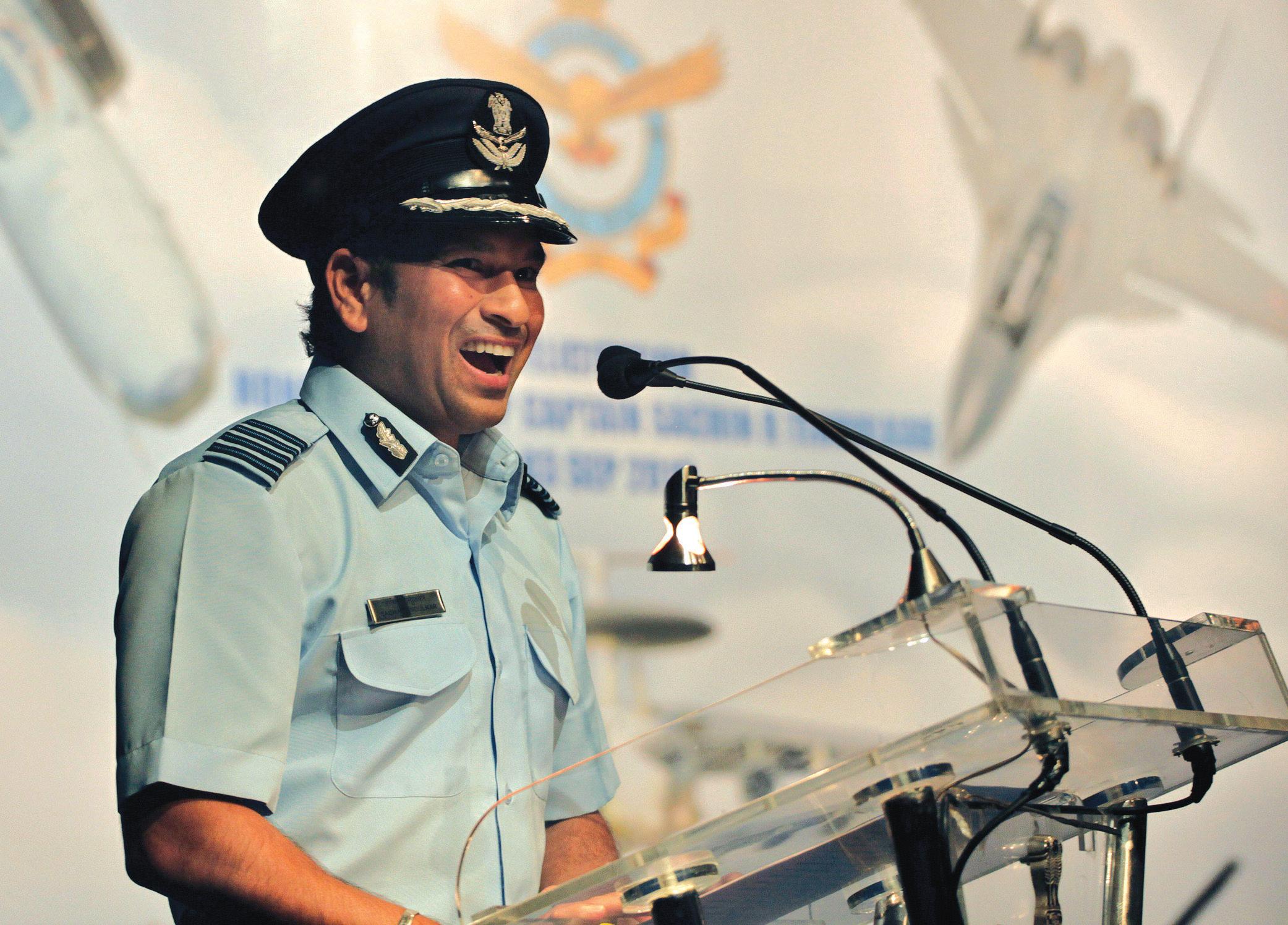
The indefinite strike by over 1,500 mosquito-breeding checkers could hamper anti-dengue operations and fogging measures in the capital.
The capital has been reporting an average of 70 dengue cases reported daily over the past few days.
Delhi reported 548 cases of dengue in 2007, 1,312 in 2008 and 1,153 in 2009.
Municipal Corporation of Delhi’s (MCD) chief medical officer N.K. Yadav said, “We only take into account the cases tested for dengue using the Elisa test. Private hospitals generally don’t conduct this test as it is expensive, so we will not take their cases into account.”
Dengue is transmitted by the bite of the aedes mosquito. High fever for 4-5 days is usually accompanied by severe headache, pain in eyes, muscle and joint pain and rashes. After the fever goes away, the blood platelet counts start dipping, which is the most dangerous phase of the disease and requires monitoring.
The dengue situation in the national capital seems alarmingly similar to the 2006 outbreak, when 3,366 cases of the deadly fever were reported along with 36 deaths, doctors said.
Officials of the National Vector Borne Disease Control Programme (NVBDCP), which monitors and prevents vector borne diseases in the country, accepted that the number of dengue cases was alarmingly high in Delhi.
“There is a dengue outbreak in the city.
Dengue cases will be under-reported as they (health agencies) take only confirmed cases which tested positive using the NS-1 antigen test. A total 33 government hospitals and other private hospitals are continuously checking the patients,” A.C. Dhariwal, director, NVBDCP said.
In 2006, when dengue outbreak was declared in the city, just 19 cases were reported from Delhi till Aug 27, he said.
Ringing the alarm bell, doctors from private hospitals said dengue cases this season have increased manifold as compared to the last three years.
“As compared to 2006, this year the incidence of this vector borne disease will be more, as even after the cases are being under-reported the total is 741. If we conduct proper surveys, the figure will touch thousands,” a doctor of a south Delhi private hospital said.
He added that in September the number of dengue cases may increase manifold.
New format unveiled for IPL, to be played with 10 teams in two groups
The Indian cricket board has unveiled a new format for the next season of the Indian Premier League (IPL), with the 10 teams split into two groups and the cap on team spending increased to $9 million.
The fourth season of the IPL will have 10 teams after the addition of two new teams. There will be 74 matches in total, compared to 60 earlier this year.
The format needed to be changed after
There will be 70 league matches and four play off matches with each team having the same number of matches (14 in total - 7 home and 7 away) as in the previous IPL editions, the Board of Control for Cricket in India (BCCI) said in a statement after the meeting of the IPL Governing Council.
There will be one league table with teams divided into two groups of five teams each.
Each team would play the other four teams in its group twice (home and away), four of the five teams in the other group once (home or away) and one of the five teams in the other group twice (home and away).
The groups will be decided by a random draw, and similarly, which team will play the other from the other group twice or once will also be decided by a random draw.
This ensures all franchises will have the same number of matches at home as in the previous editions.
Teams are allowed to retain four players in their squads from the last event -- a maximum of three Indians and two foreigners.
The cap for each team to spend on the players at the auction was raised to $9 million from the $7 million.
The number of overseas players in the squad will be 10 with no more that four in the team.
Uncapped Indian players will now be getting Rs.1 million per annum if the player has not played or first played Ranji Trophy (first class or List A) in the 2009-10 or 201011 seasons.
It will be Rs.2 million per annum if the player has played Ranji Trophy (First class or List A) in the 2006-07, 2007-08 or 2008-09 seasons and Rs.3 million if the player first played Ranji Trophy (First class or List A) in the 2005-06 or earlier seasons.
As for the retention of players, up to four players per franchise may be signed for retention of which only up to three shall be Indian players and the squad size has been restricted to 30.
The board said it will manage all player contracts directly.
“All player contracts will now be managed
by BCCI and signed by BCCI along with the franchise and the player. A new player registration and contract management process will be detailed soon. No player contracts can be signed until then. Player regulation for 2011 season will be circulated soon to all franchisees which will detail the player contract, registration and signing process,” BCCI secretary N. Srinivasan said
in a statement. Also, the catchment areas have been revised and this will be now aligned according to the association instead of a states. Pune can pick its team from the Maharashtra and Vidarbha Cricket Associations while Kochi has been alloted the Kerala and Madhya Pradesh associations.
Continued on page 42

SEPTEMBER (1) 2010 <> 41 NATIONAL EDITION
AN INDIAN FIRST: Indian cricket player Sachin Tendulkar smiles as he speaks after receiving the honorary rank of Group Captain of the Indian Air Force in New Delhi, India
Photo: AP the inclusion of two new franchises -- Pune Warriors and Kochi.
Data from Chandrayaan moon mission to go public
Voluminous scientific data, including rare images of the moon, from India’s maiden lunar mission Chandrayaan-1 will be made public by the year-end.
“People will have free access to the huge data obtained from our first moon mission on a web portal that will be launched by this year-end,” a senior scientist of the Indian Space Research Organisation (ISRO) said.
“The data has been split into two seasons, with the first dealing from November 2008 to February 2009 and the second from March to August 2009. The first season data will be archived by year-end and the second by mid-2011,” said ISRO’s space application centre director B. Gopala Krishna.
A total of 26 gigabytes of data and images will be uploaded after archiving the first season.
The archives will include chemical and mineral mapping, high resolution threedimensional mapping and topographical features.
The state-run ISRO launched the 514 kg mooncraft onboard the polar satellite launch vehicle Oct 22, 2008 from its spaceport Sriharikota in Andhra Pradesh, about 80 km northeast of Chennai.
The Rs.3.9-billion Chandrayaan was the first mooncraft to have confirmed the presence of water on the moon.
After a 10-month rendezvous with the earth’s only natural satellite, the mission was terminated Aug 30, 2009 when the space agency’s Deep Space Network (DSN) at Bylalu, about 40 km from here, lost radio contact with Chandrayaan after computers onboard became non-functional.
“Though the dedicated portal will have a catalogue of the data, specific information will be made available for students and scholars pursuing research in space exploration,” Krishna said.
Indian space scientists are currently reviewing the voluminous data, including about 70,000 images relayed to DSN by the 10 scientific instruments Chandrayaan carried to the lunar orbit, about 100 km from the moon’s surface and over 400,000 km from the earth.
“Our scientists from various planetary groups are beginning to peer review the data from 10 of the 11 payloads. The same will be made accessible to the public as the lock-in period for the principal investigators of the mission to analyse will end by December,” Krishna said.
Of the 11 instruments, five were Indian and six were from the US and Europe.
ISRO scientists have used the planetary data system, developed by the USbased National Aeronautics and Space Administration (NASA) for preservation
and utilisation of the archived information.
“We are also in the process of generating a topographical atlas and a mineralogical atlas of the moon from the data,” Krishna noted.
Detailed mapping of moon’s mineralogy and topography will pave way for further research possibilities.
“We will prepare an atlas of the moon with latitude, longitude, colours of areas, ice water, minerals and terrain from the sheets of topography in the data,” Krishna added.
Chandrayaan accomplished 95 percent of its scientific and technological objectives before its mission was called off prematurely. It had been programmed to orbit the moon for nearly two years.
India test fires BrahMos cruise missile
In a first in the military world, the BrahMos cruise missile being jointly developed by India and Russia achieved a supersonic dive after being fired from a defence base in
Orissa as part of the trials to fine-tune its capabilities.
“The missile flew in the designated complex trajectory conducting large manoeuvres and steep dive. This is the first time in the world that a supersonic dive has been realised by a cruise missile,” said BrahMos Aerospace spokesperson Praveen Pathak.
The Indian armed forces termed it a “perfectly precise flight”, he added.
The 290-km range BrahMos missile, which can travel 2.8 times the speed of sound, was tested for the army from the Integrated Test Range of Chandipur in here, some 230 km from Orissa capial Bhubaneswar, director of the test range S.P. Dash said.
“The launch met all mission requirements. It was a 100 percent fantastic launch,” Dash said.
Defence Minister A.K. Antony congratulated the armed forces and the defence scientists associated with the project
for the “success”.
The launch was conducted in the presence of Director General of Artillery Lt. Gen. Vinod Nayanar, BrahMos Aerospace CEO and MD A.S. Pillai, scientists from the Defence Research and Developments Organisation, industry representatives and officers from different units of the army.
The sophisticated cruise missile has already been inducted into the Indian army and the navy. The Block-II version capabilities to hit precisely a small target in a cluster of larger targets were demonstrated from Pokhran recently.
“This new capability has made it even more lethal,” Pathak said in a statement.
The BrahMos missile is a two-stage vehicle that has a solid propellant booster and a liquid propellant ramjet system. It can carry conventional warheads up to 300 kg for a range of 290 km.
The cruise missile is capable of being launched from multiple platforms based on land, ships, submarines and aircraft, and currently the focus in on for the development of its air-launched and submarine-launched versions.
India and Russia are jointly designing the BrahMos missile, named after the Brahmaputra (India) and Moskva (Russia)
A regiment of the BrahMos-I variant, consisting of 67 missiles, five mobile autonomous launchers on 12x12 Tatra vehicles and two mobile command posts, among other equipment, is already operational with the army.
Delhi sends home
200 beggars
Commonwealth Games host city Delhi has sent back to their respective states as many as 200 beggars.
Social Welfare Minister Mangat Ram Singhal has said that these beggars had served their prison sentences. Efforts were on to detain another 600 beggars before the October Games.
He said that he had asked for a weekly report on the drive against begging.
The Indian capital is reportedly home to over 60,000 beggars, and getting them off the streets is proving to be a cat and mouse game for the authorities.
The Tahirpur beggars home, with a capacity for 1,200, is under renovation. Toilets are being readied for more beggars as the drive is intensified.
The anti-begging drive is focussed in areas such as the New Delhi railway station, Connaught Place, India Gate and Khan

The Bombay Prevention of Begging Act, 1959, allows police to detain anyone found begging on the streets.
Orissa coaches tribal students to compete in competititve tests
Orissa, which has the second highest tribal population in the country, will start hightech coaching progammes from October exclusively for its tribal students to help them compete in tough competitive examinations.
The state government plans to enroll about 1,000-1,500 students of Class 10 and 11 from 19 state-run tribal schools located in the interior areas for the programme. Sanjeev K. Chadha, director of the state Scheduled Caste and Scheduled Tribe Welfare Department, said tribal students who are not enrolled in tribal schools would also be given the training later.
“Two special classrooms would be set up in government-run higher secondary tribal schools as most of the schools are primarily residential. The schools will be equipped with computers, projectors and liquid crystal
Continued on page 44

42 <> SEPTEMBER (1) 2010 INDIAN LINK
Continued from page 41
DRESSED IN MILLIONS: Bollywood actress Malaika Arora poses wearing an Orra bustier during a fashion show in New Delhi. The bustier is crafted from over 500 carats of Belgian diamonds and is priced at one million euros
Photo: AP


SEPTEMBER (1) 2010 <> 43 NATIONAL EDITION
display (LCD) boards,” Chadha said.
Students will be provided around 300 hours of coaching by high-quality teachers and instructors, physically or through online and video conferencing. The programme will cost about Rs.3 crore every year, Chadha said, adding that the coaching sessions will include in-depth coverage of all the concepts of physics, chemistry and mathematics.
The project will help students to look beyond industrial training institutes and encourage them to appear in competitive examinations.
The students would be prepared for examinations like the All India Engineering Entrance Examination, (AIEEE), Orissa Joint Entrance Examination (OJEE) and the Indian Institute of Technology-Joint Entrance Examination (IIT-JEE), he said.
“We have already issued a tender to find out a good engineering coaching institute that would provide us the study material. We are likely to finalise this within the next few days,” he said.
“Since the Classes 10 and 11 are located mostly in interior areas and primarily residential, satellite technology will be used to train the students,” said Chadha.
Orissa has the second biggest tribal population in the country. The state has a population of over 36 million, of which more than eight million are tribals, according to the 2001 census. The Scheduled Tribe population is 22.13 percent of the state’s total population.
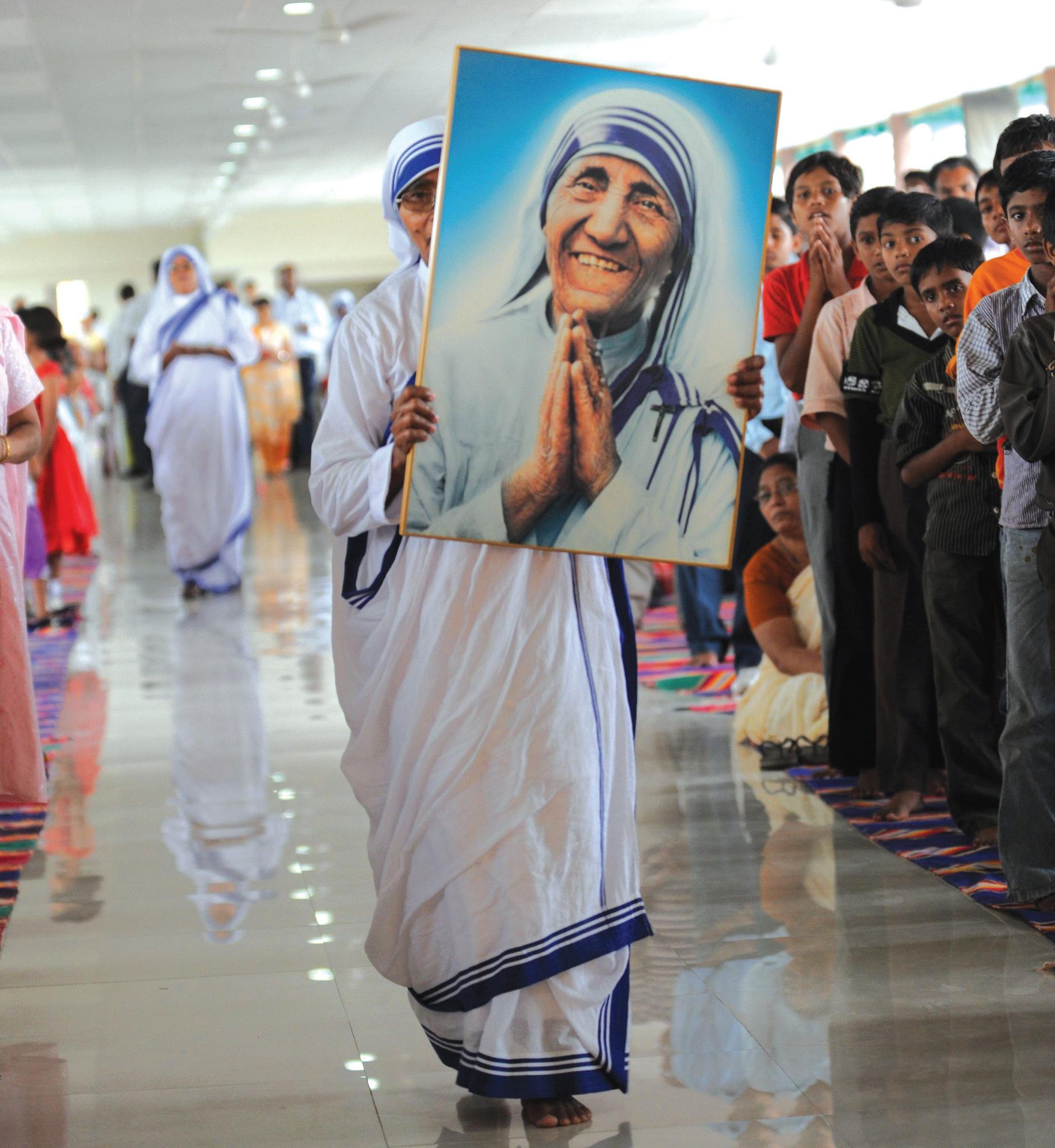
The percentage of literacy among the Scheduled Tribes is 37.37 against the general literacy level of 63.8 percent . When it comes to functional literacy, the percentage is even lower.
The SC/ST Welfare Department will identify students who have the necessary academic background and basic ideas of Class 10-level physics, chemistry and mathematics, he said.
The department will assess the instructors for each school, a minimum of one instructor each for physics, chemistry and mathematics, he said.
The instructors will be assessed for their ability to facilitate classroom coaching and clear the doubts of students on the subjects, he said.
Security measures at CWG venues by Sep 15
Delhi Police will take over all the Commonwealth Games venues by September 15 and initiate security measures to ensure an incident-free sporting event.
“There will be full-fledged security measures in all Games venues by Sep 15. The security check in Commonwealth Games village will be done shortly, a specific date cannot be divulged,” Commonwealth Games Security and Planning Joint Commissioner J.K. Sharma said.
“Even though there is no specific threat to the Games, the security measures were to showcase that we are alert and well prepared for the mega sporting events,” he said.
He said once the security personnel take over the Games venues, they will completely sanitise and seal them after a detailed check.
“Delhi Police, the nodal agency for
Games security, will conduct various drills, including anti-sabotage checks, once they take over possession of the venues,” Sharma said.
Delhi Police spokesperson Rajan Bhagat said, “We have not decided a specific date when the Delhi Police will take up the Games venues, but we are planning to take the security measures shortly.” The Commonwealth Games are slated for Oct 3-14.
Indian toilet model to be used in Afghanistan
Low-cost lavatory technique, developed by an Indian NGO, will be adopted by the US Army to build public toilets in Afghanistan, a senior US military official has said.
The US troops will build at least 40 toilet complexes linked with biogas generation plants in Kandahar as a part of the reconstruction process in the country.
The technical know-how of the model designed by Sulabh International would also be shared with the Afghan government so that it can be used in other parts of the country, said Maj. Edward T. Mears at the engineering wing of the US Army in Afghanistan.
“I would like to share these designs with the Kabul ministry and Afghanistan Ministry of Energy and Water. I would like to know
specifically about volume of the digesters and factors for expected biogas generation,” the official wrote in a letter to Sulabh.
Sulabh has already built five community toilets in Kabul as a part of reconstruction projects funded by India.
Bindeshwar Pathak, founder of the Sulabh, has vowed to provide all assistance required to build more such toilets that are “economically sustainable as they are based on pay-and-use system”.
“The system is not only useful for sanitation but also generate bio-fuel which is considered one of the vital non-conventional energy sources,” Pathak said.
Quota for poor kids in private schools mandatory: Sibal
Reserving 25 percent of seats for children of poor families in private schools would be mandatory and its violation would be punishable, Human Resource Development Minister Kapil Sibal has said.
“We will not budge an inch from this mandatory provision in the Right to Free and Compulsory Education (RTE) Act 2009, as we want to give opportunity to all poor children to study in private schools,” Sibal said.
The government enforced the RTE Act April 1, 2010 to ensure free and compulsory

education to all children between six and 14 years, including those below poverty line.
Though several private schools expressed concerns over the quota, failure to implement the provision in the next three years will be punishable once the amendment bill to the Act is passed by lawmakers in Parliament.
“If private schools do not comply with the provision, they will not be allowed to function, as it will be difficult to achieve the goal of inclusive education otherwise,” Sibal said on the margins of a function in Bangalore.
The national commission for protection of child rights has been mandated to monitor the implementation of the act, while a special division will undertake the task.
“All private schools will have to apply for recognition, failing which they will be penalised up to Rs.100,000. If they still continue to function without paying penalty, they will be liable to pay Rs.10,000 per day as fine,” Sibal said.
The commission will also set up a toll free helpline to register complaints against schools violating the provisions of the RTE Act.
To push elementary education to higher standards, Sibal said his ministry laid out plans to create “neighbourhood schools” where the school will mostly be managed by the residents (75 percent of the managing
44 <> SEPTEMBER (1) 2010 INDIAN LINK
REMEMBERING THE SAINT: A nun from the Missionaries of Charity walks carrying a photo of Mother Teresa during a tribute offering ceremony for Mother Teresa at St. Xavier’s College Auditorium in Ahmedabad on September 5, 2010, on Teresa’s death anniversary.
Photo: AP
Continued from page 42
committee) of which 50 percent will be the mothers of the children.

“This way, we can reach out to children from lower economic status, minority groups, migrating and streets and bring them to schools thus fulfilling our goal of ensuring education to all,” Sibal added.
Sibal was in this tech hub to deliver the Vithal Chandavarkar memorial lecture at the Indian Institute of Science (IISc).
Chandavarkar was an industrialist, who served as Mayor of Bombay (now Mumbai) and also vice-chancellor of the University of Mumbai.
India needs adequate precautions for China: PM
Amid discordant notes in India’s ties with China, Prime Minister Manmohan Singh has said that India has to take “adequate precautions” but can’t give up on peaceful resolution of issues with China.
Relations between the two Asian powers, the prime minister stressed, continued to be a mix of competition and cooperation.
The effort should be to create a milieu in which there can be peaceful competition, he said during an interaction with senior journalists in New Delhi.
Manmohan Singh was responding to queries on the state of India-China relations after Beijing denied visa to a senior Indian Army general on grounds that his command included Jammu and Kashmir.
Manmohan Singh, on his part, pointed out that he had worked with Chinese President Hu Jintao and Prime Minister Wen Jiabao closely.
The prime minister, whose first year in office saw the finalization of guiding principles and political parameters to resolve the boundary question, has always advocated that there was enough room for a rising India and a rising China in the Asian hemisphere.
Manmohan Singh’s comments came amid a difficult phase in India-China relations marred by sharp differences over a host of issues, including Beijing’s practice of issuing stapled visas to residents of Jammu and Kashmir.
The prime minister also made a strong pitch for the need to continue efforts to improve relations with Pakistan despite the July 15 foreign minister-level talks that ended in vitiating the atmosphere further.
“There are always mishaps,” in IndiaPakistan ties, the prime minister said while stressing that it was his sincere belief that India had to engage Pakistan regardless of the complexity of the set up in that country. He, however, added that he was also sensitive to the Indian public opinion after the Mumbai terror carnage.
Engagement and dialogue were the only way forward in Indo-Pak ties, he said, adding he hoped that Pakistan’s Foreign Minister Shah Mahmood Qureshi would accept Indian External Affairs Minister S.M. Krishna’s invitation to visit India.
Kingfisher, British Airways enter code-sharing aggrement
Kingfisher Airlines has entered into a code sharing arrangement with British Airways (BA) under which both the carriers will use each other’s flight network to and from India, Sri Lanka, Britain and Europe from Sep 15.
A code sharing agreement allows one airline to use another’s flight code on its own ticket, thus allowing its passengers to travel on the other airline’s flights. Such a move helps carriers to expand their network without actually incurring costs of deploying its own fleet.
“The codeshare with British Airways will mean that our guests from India will now be able to fly seamlessly to nine new European cities,” said Vijay Mallya, chairman and chief
executive, Kingfisher Airlines.
According to the airline, its code will be placed on nine BA routes from Heathrow to the British region and continental Europe, while BA’s code will be placed on 11 domestic Indian routes and one route to Sri Lanka operated by Kingfisher Airlines.
This is the first time that BA has entered into a code sharing agreement with an Indian airline.
Neetu Chandra denies matchfixing allegations
Bollywood actress Neetu Chandra has denied having any links with Pakistani bowler Mohammad Asif, embroiled in the latest match-fixing controversy that has hit the cricket world.
“Personally, Neetu does not know Mohammad Asif or any Pakistani cricketer for that matter. Her name is being unceremoniously dragged into the matchfixing debate with baseless allegations,” Neetu’s publicist Dale Bhagwagar said in a press statement.
“Neetu didn’t even know how Asif looked like. Within minutes of this controversy breaking out, I met her and showed her his picture from the internet on my BlackBerry,” her publicist Bhagwagar said.
“Neetu glanced at it and almost jumped from her chair, joking, ‘Oh, he’s too dark’. She also doesn’t know or understand how her cell number has featured on such a scandalous list. If it indeed has, it could well be a conspiracy.”
The actress has featured in films like Traffic Signal and Garam Masala
Her alleged involvement in match-fixing came out when Interpol and Scotland Yard handed over the mobile details of Asif to the Pakistan Cricket Board for investigation.
The document was prepared by Scotland Yard and Interpol on the basis of Pakistani
actress Veena Malik’s information and it contains the call details of Asif made in 2009. But it has been leaked.
Reports stated that in the document, the only mobile phone number from Mumbai belonged to actress Neetu Chandra and that she could be involved in the match-fixing scandal.
It was further reported, according to the document, that the actress had made two phone calls and exchanged SMS with the controversial cricketer, discussing sensitive cricket issues and deals.
Neetu was one of the few privileged Bollywood celebrities to run with the Commonwealth Games torch in her hometown, Patna. Apart from being a regular basketball player, the actress is a black belt in Taekwondo, having participated in various martial arts tournaments at the district, national, as well as international levels. However, she is not a cricket fan, Bhagwagar said.
The match-fixing controversy started when British tabloid The News of the World reported that Pakistani cricketers were allegedly involved in deliberately underperforming in the Lord’s Test that England won by an innings to wrap up the series 3-1.
Based on a sting operation conducted by The News of the World, the Metropolitan Police arrested London-based property tycoon Mazhar Majeed, who allegedly lured Pakistani fast bowlers Mohammad Amir and Mohammad Asif to deliver three blatant noballs at the agreed moment of the game by the daily’s undercover reporter. Reports also suggested that Pakistan captain Salman Butt and wicketkeeper Kamran Akmal were also involved.
IANS
SEPTEMBER (1) 2010 <> 45 NATIONAL EDITION
He didn’t tell
Daddy Allsorts
My father my hero



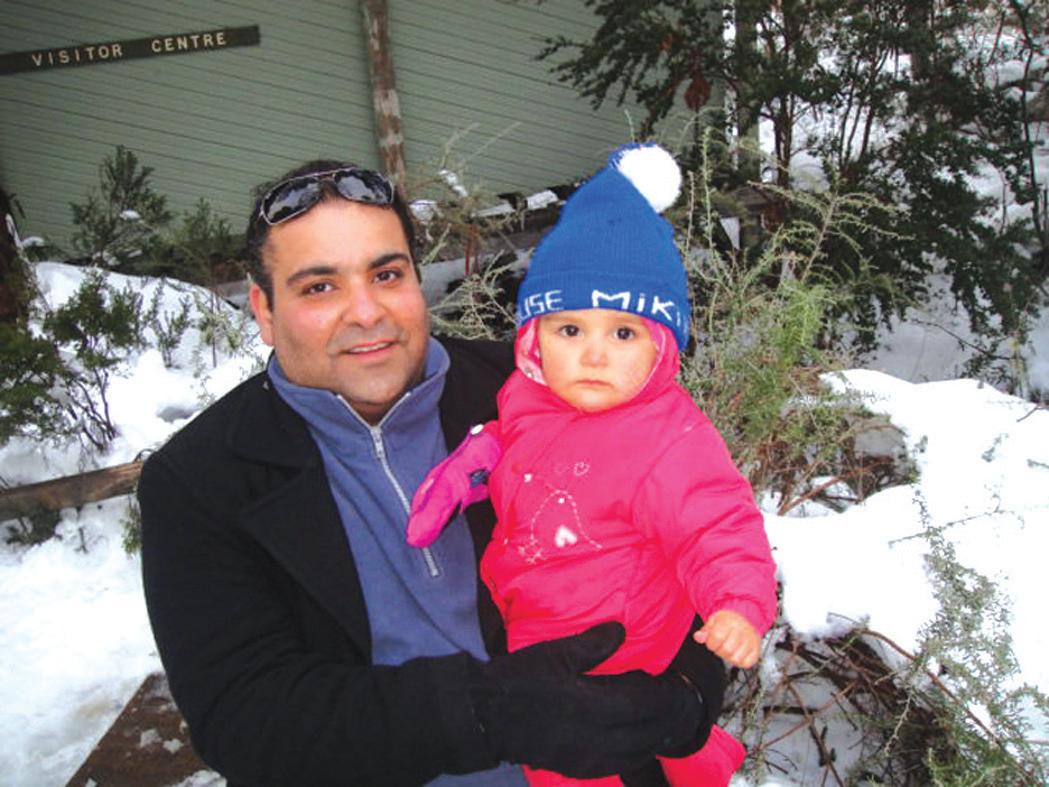
It is admirable for a man to take his son fishing, but there is a special place in heaven for the father who takes his daughter shopping.
John Sinor

46 <> SEPTEMBER (1) 2010 FATHER’SDAYSPECIAL
By the time a man realizes that maybe his father was right, he usually has a son who thinks he’s wrong.
Charles Wadworth
me how to live; he lived, and let me watch him do it.
Clarence Budington Kelland
Nobody ever asks a father how he manages to combine marriage and a career.
Sam Ewing
Aninda Banerji with sons Nikhil and Kiran Sandeep with daughter Ananya
Arvind Jabbal with Asha
Vikrant and Udit Thakur
When a father gives to his son, both laugh; when a son gives to his father, both cry.





When I was a boy of fourteen, my father was so ignorant I could hardly stand to have the old man around. But when I got to be twenty-one, I was astonished at how much he had learned in seven years.
 Mark Twain
Mark Twain
Dads are stone skimmers, mud wallowers, water wallopers, ceiling swoopers, shoulder gallopers, upsy-downsy, overand-through, round-andabout whoosers. Dads are smugglers and secret sharers.
Helen Thomson
SEPTEMBER (1) 2010 <> 47 NATIONAL EDITION
<> 47
Jewish Proverb
(Left) Joban with dad Amritraj and (right) Sabir with dad Jasraj
Pawan Luthra with Devna
Yuvika and Rehan with their dad Navin Gera
Ashish Sharma with newborn daughter Avani
www.indianlink.com.au
Preeti Jabbal with Ranbir Singh
Nitin Verma and son Raghav
Indian writer Anjum Hasan, whose books are set in hilly Shillong, was a guest at this year’s Melbourne Writers’ Festival

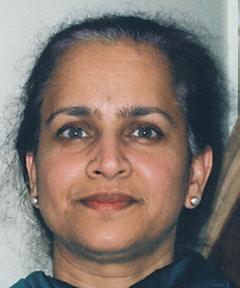 BY CHITRA SUDARSHAN
BY CHITRA SUDARSHAN
Authors from the subcontinent are not always well represented at the Melbourne Writers’ Festival – so it was with the usual sense of resignation that I scoured the Writers’ list for some familiar names in the field of Indo-Anglia. Lo and behold – there were two writers from India: one an established literary essayist and novelist, Pankaj Mishra, and the other a less wellknown, but on the way to becoming a celebrated - poet, critic and writer in India and abroad, Anjum Hasan. The third name was that of a Sydney Professor of Neuropsychiatry, Perminder Sachdev who grew up in the foothills of the Himalayas and later studied in Delhi. We have reviewed Mishra’s books in this column a couple of times in the past, so our attention must turn to Anjum Hasan, who is on two panels at the MWF, and has published two novels, a book of verse and short stories. (Professor Sachdev, who was educated at the All India Institute of Medical Sciences, has published many papers over the years, but his new book, The Yipping Tiger and Other Tales from the Psychiatric Clinic is his first foray into general
writing, and consists of experiences from his neuropsychiatric practice. He discussed – with other panel members at the festival–whether neuroscience negates the concept of free will. Yipping Tiger will certainly appeal to a niche readership.)
Back to Anjum Hasan. A few English language writers from India’s north-east such as Mitra Phuken, Temsula Ao (both of whose writings we have reviewed here before) and Siddharth Deb, have cut a swathe in the world of Indo Anglia. Hasan’s is a new voice that has joined this small but growing group. She was born in Shillong of parents who were academics from UP who settled down in Shillong in the early 1970s to pursue their careers. Hasan showed promise at a young age, winning the Outlook-Picador non-fiction contest and the Indian Review of Books award, followed by a book of verse published by the Sahitya Akademi in 2006. Her first novel Lunatic in My Head was brought out by Penguin India in 2007, and came to be shortlisted soon for the Crossword Book Award. Hasan has been living in Bangalore for the past several years, and she is the Books Editor for The Caravan Hasan’s first novel Lunatic is located in Shillong, Hasan’s birthplace, and in it we feel the racial tensions running just below the surface and breaking out, not infrequently, into violence against the dhakar or ‘outsiders’– or ‘permanent guests’ of the majority Khasi hills-people who are the
‘insiders’ in the town. The effects of migration on a tightly knit society in India’s north-east is brought out, and what emerges are Hasan’s love for the place as well as a lingering desire to be ‘accepted’ by the locals. Hasan does it by telling the story of the interwoven lives of three protagonists who live in this town in the 1990s: Firdaus is the ‘outsider’ who teaches at the Loreto Convent and is four years into her PhD; Aman Moondy is a local who is preparing to take the IAS exams - again - although his first love is music and he is involved in a band whose members imagine themselves to be Pink Floyd; and Sophie Das is a child who is quite confused about her identity from the Ladybird books she reads!
Hasan’s second novel - a kind of sequel - Neti, Neti, came out in 2009 (Roli Books) and was long-listed for the Man Asian Literary Prize. This is the story of Sophie Das of the earlier novel, a girl who has grown up in small town Shillong, but now goes to work in an outsourcing industry in cosmopolitan Bangalore. It traces Sophie’s sense of disillusionment with life in the big city, and her attempts at navigating the maze
Bringing India’s north-east into the mainstream India captured in a billion shades
The Indian Consul General in Sydney Amit Dasgupta has done it again, second year in a row.
He has just released a new book, India for a Billion Reasons (Wisdom Tree). It is not however, a work of fiction like his previous releases In the Land of the Blue Jasmine (Star) and Indian By Choice (Wisdom Tree). You could call it a coffee table book - but with a difference - that captures the country in all its colourful glory, chronicling its culture, heritage, plurality, ethos and its multidimensional progress.
The book is a compilation of essays interspersed with lavish and evocative photographs contributed by writers like Atri Bhattacharya, Anita Ratnam, Anjum Katyal, Meenakshi Shedde, Harpal Singh Bedi, Rohan Mukherjee, Bibek Debroy, Tarun Basu, L.K. Sharma and several others on socio-cultural aspects of India. It provides a wonderful feel of the quintessential “Indian identity”, in terms of its qualities of hospitality, music, art, craft, cinema, dance, literature, food, sports, politics, economy, press, and the transition from tradition to modernity.


Coming at a time when there has been a dramatic surge of interest in India, …Billion Reasons is driven primarily by the prediction that by 2040 it would become the third largest economy after the US and China.
“While across the globe major economies struggled with low growth rates and continued predictions of sluggish economic performance, the Indian economy defied all expectations and consistently clocked eight percent growth with credible forecasts that a 10 percent growth rate was well within reach,” says Dasgupta.
“Indian companies moved on to make Western acquisition and bit by bit, the image of India underwent a positive change.”
He attributes the “newfound” interest in India “to Thomas Friedman’s bestselling book The World is Flat and his popular television series, To Catch a Predator A small section on opinion snippets by celebrities on “what India means to me” brings to the fore the spirit of proud nationalism that forms the moral mosaic of this culturally diverse land. For writer and socialite Shobhaa De, the author of Superstar India, “The idea of Indianness is strangely poignant... it conjures up feelings that are frequently contradictory. Most of us ‘feel’ Indian... even if our outward lives send another image”.
Author-commentator and MP Shashi Tharoor describes India as “colours of paradise”.
“When I think of India, I think of steaming breakfast idlis, pungent coconut chutneys, and lissom women in saris,” he says in the book.
Dasgupta’s first book Indian by Choice is a unique graphic novel about Mandeep - a young Indian born in the US who has a penchant for all things American, including baseball, hot-dogs and blondes. Mandy, as he would rather be called, reluctantly visits India to attend a family wedding despite being horrified at the prospect of spending a month in his native country. Worse, he is forced to delay his departure. And yet, by the end of his stay, he manages to find a connection - and a very uplifting one at that - with the land of his ancestors.
of city life. Hasan herself has been living in Bangalore for a few years, and she is able draw on her own knowledge of the city’s offices, pubs, call centres, night life and the noveau riche suburbs. A murder too close for comfort sends Sophie back to her parents and her hometown, but all is not well there with her father and her mother each chasing their separate dreams. She must pull herself from the brink and find a way to move forward.
Both Anjum Hasan’s novels are a kind of insight into the minds and the worlds of both the ‘insider’ and the ‘outsider’, of the soul wrenching effects of both the small town and the big city. That they are written in a style of quiet elegance simply adds to their attraction.
48 <> SEPTEMBER (1) 2010 INDIAN LINK
BOOKS
www.indianlink.com.au
The Consul General of India (Sydney) Amit Dasgupta with a memento of his second book


SEPTEMBER (1) 2010 <> 49 NATIONAL EDITION
Not a time for denial and self-denigration
are at play here.
BY NOEL G DE SOUZA
India’s Independence Day celebrations should be an occasion for celebrating the country’s achievements and not for lament and selfdenigration. Yet that is exactly the impression one gets from three special articles in the prestigious The Times of India. These articles create the impression that India has gone backwards since Independence.
That is not the message which the leaders of the USA, Britain, France and Portugal have conveyed in recent times. Their visits to India have included tributes about India’s progress. They have been promoting economic and scientific ties with India as it emerges as one of the world’s leading powers.
Do some Indians revel in self-denigration?
That was justifiable at the time of India’s independence because India then had a lot of ground to make up to catch up with the developed world. The penchant for selfdenigration apparently still prevails.
One Times of India article by Amit Bhattacharya is entitled Food Fight: When will we get freedom from hunger? This well-meaning article intends to highlight the case for better food availability. The article, however, relies heavily on UN figures. Stating that “numbers speak for themselves”, it quotes that 27% are undernourished, 43% underweight and that 70% under-5 children are anaemic. This unquestioning and uncritical quoting from foreign reports such as by the United Nations World Food Program is what Indians need to eschew. The article accepts the dubious ranking by the Global Hunger Index 2009 and the Millennium Development Goals (2010) which say that hunger has increased from 20% to 21% from the years 2000-2002 to 2005-2007.
It is one thing for UN agencies to survey health and nutrition in small North European countries with small homogeneous populations. It is entirely different to estimate health and nutrition in India with over a billion people and a high degree of diversity. The figures are at best guesstimates. Cannot Indian writers living in India see the situation for themselves and critically evaluate and question foreign reports? Has it been considered that North European countries, unlike India, have ageing populations, small population growth, high-energy consumption and high carbon emissions? With regard to anaemia, has it been considered that thalassemia, an iron deficient genetic disease, is widespread in South Asia as it is in southern Europe (such as in Italy) and the Middle East? Genetic factors
Rather than lament, it would be more appropriate to consider the enormous progress that India has achieved with regard to food production since Independence despite its population tripling since then. Has India forgotten the extremely serious periods of food shortage that took place during the British Raj such as the infamous Bengal famine?
Rather, India’s food problems lie elsewhere.

As S. Viswanathan writes in The Hindu (Fighting Hunger: Role of Media and Judiciary), there is a clamour in India for adequate food storages and all public food distribution system. The Supreme Court is scheduled to hear a petition that large quantities of food are being wasted because of inadequate storage facilities.

Again, the article The Hollow Language Of Women’s Empowerment by Nandita Sengupta relies on quotes from academics which paint a sorry picture of Indian women. India, unlike several neighbouring countries, gives freedom of expression to its women and does not threaten its women writers. Indian women occupy high positions; universities have good female enrolment, and women freely act in movies. None of this appears in the article.
In another piece, A Million Mutinies Now, Subodh Varma laments separatist tendencies, the clamour for new states, caste politics and lack of freedom for young people to choose their marriage partners. That there are demands for smaller states is not per se unacceptable as smaller units are better governable. That India as one nation is accepted, for the most part, is to be applauded. On the other hand, The Hindustan Times gives the opposite story providing hope and optimism.
Acknowledging that social security programs initiated by the Indian government to eradicate poverty are often frustrated by corruption and mismanagement, it points out that reforms are afoot to use technology and talent on a scale never seen before anywhere in the world. The name of this project Imagining India comes from the title of the book by former Infosys CEO Nandan Nilekani.

In The Silent Glow of Innovation, Vivek Wadhwa points out that whilst in 2004, India produced 17,000 Masters and 900 PhDs in engineering, in 2007 India’s top five IT companies produced 120,000 engineers. President Obama repeatedly cautions Americans that India and China are forging ahead in producing scientists compared to the USA.
As Samar Halarnkar says in How We’re Creating The New, New India, “Despite the limitations imposed by the country’s weak infrastructure and antiquated education system, India has rapidly evolved into a global knowledge and innovation hub.”
This is not the time for self-denigration but rather for celebration.
50 <> SEPTEMBER (1) 2010 INDIAN LINK
OPINION
Indian commentators must learn to critically evaluate, rather than accept Western analyses as the gospel truth
Rather than lament, it would be more appropriate to consider the enormous progress that India has achieved since Independence despite its population tripling since then
www.indianlink.com.au
Population fears
BY TANVEER AHMED
My family has always voted Labor during Federal elections. It is not unlike supporting a football team, in that there is often little regard to actual performance or a scrutiny of the actual policies offered, but an emotional attachment and bond. This bond was cultivated from our act of migration in the 1980s, which was seen by them, just like many other immigrants, as a direct result of the policies implemented by the Hawke government. In their minds, Labor is the party for immigrants seeking to start a new life in Australia.
In contrast, the combination of the White Australia policy which was initially begun by the conservative Menzies government and the hardline asylum seeker policy implemented by the Howard government, has tainted the Liberals with a racist tinge. The infamous Howard line about asylum seekers, “We will decide who comes to this country and under what circumstances…” has tarnished Australia in the eyes of many, both locally and internationally.
But the reality is more complex.
The debate about what is being termed “sustainable population” became a major topic during the most recent Federal election. Both parties were competing over who would be seen as more hardline on blocking asylum seekers from entering Australia.
BIRYANI AND PARANTHA WEEKENDS

…Beat the chill, come in for hot paranthas and biryani
VEGETARIAN PARATHAS
Poodina Paratha
VEGETARIAN BIRYANI
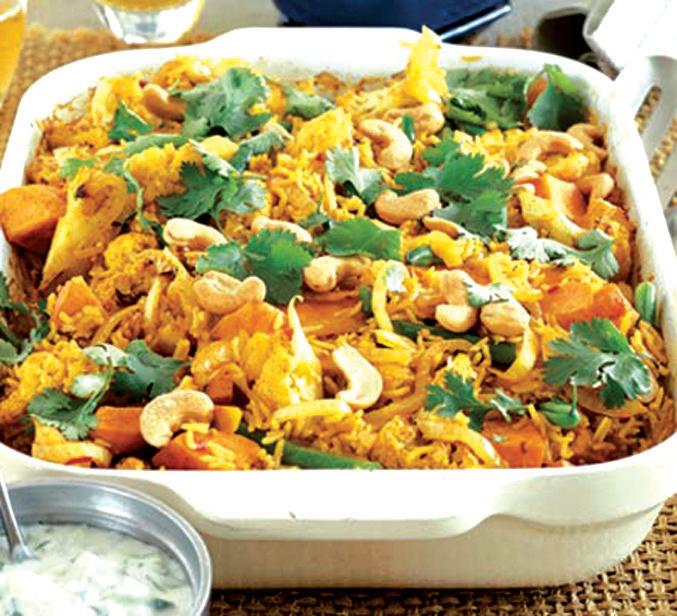
Mixed vegetable
labour market, as anyone who has visited a service station, a Coles or Woolworths or caught a taxi, would notice.
As a result, the ALP was essentially outflanked on immigration on the Right by the Coalition, and outflanked on the Left by the Greens on the environment. In attempting to maintain a centrist position, many voters deserted them.
The history of the ALP suggests it is not naturally the party of immigration. From the very first act of Federation, the unions conspired to exclude Asians of Chinese descent and Melanesian workers from competing with their members. Australia was founded on an act of racism. But then, as it is now, the discrimination was as much about economics as it was about race.
Now the ALP will find it difficult negotiating a growing “unholy alliance” between environmentalists on the Left who support a dwindling intake of migrants on the basis that the unique geography of Australia cannot support a population over 30 million people, as well as those on the Right who are reluctant on the basis of social cohesion and an excessive racial diversity that they see as too far detached from our Anglo-British roots.
Australia recorded the highest percentage increase in immigration numbers during the Howard years, particularly skilled migration and those on temporary working visas. This is particularly relevant to the South Asian community because a large number of IT workers have benefitted from this policy.
...many non-white immigrants, often for the very first time, didn’t vote Labor (this election), opting instead for either the Greens or Independents
When voters in key swing seats such as those in western Sydney were quizzed about what made them vote for the Coalition, many said they wanted an end to what they perceived as illegal immigration. The Coalition’s simplistic but effective war cry of “Stop the Debt. Stop the Boats” was clearly successful in delivering a hardline message.
This was also the election when many non-white immigrants, often for the very first time, didn’t vote Labor, opting instead for either the Greens or Independents. A number of acquaintances of mine from a South Asian background voted for the Coalition, citing their policies with regard to international students and visa requirements, a feature that the ALP is likely to restrict.
The segments within the Liberal Party that are most aligned towards business are also pro-immigration. They cite the need to help fill skill shortages and, although business leaders wouldn’t like to admit it, keep wages low in the lower end of the labour market. International students now fill large segments of the bottom end of the
Rudd essentially continued this trend and his pronouncement of wanting a “Big Australia” has been widely publicised. But the direction has abruptly turned with Gillard’s ascension and a number of insiders have suggested to me that the caretaker PM has little interest and familiarity with foreign policy matters.
The issue of asylum seekers is really a symbolic issue and doesn’t necessarily reflect the stance of the parties to the issue of immigration, more broadly. Television images of boats turning up on our shores resonate with some visceral fears of working class and rural Australians in particular. Many of them feel insecure by their suburbs being transformed in the past decade by growing numbers of non-white immigrants.
Australia is currently in the midst of a potentially transforming period in its stance on immigration, one driven primarily by emotional factors. It is one that may have damaging implications for the South Asian community.
Tanveer Ahmed is a psychiatrist at Sydney’s Northside West Clinic. He is also an opinion columnist for The Sydney Morning Herald

Methi Paneer Paratha
Palak Paratha
Aloo Paratha
Methi aloo Paratha
Oriental style stir fry
paratha
Mushroom
and pea paratha
Stuffed vegetable and cheese Paratha
Paneer Paratha
Methi Paratha
Mooli Paratha
Gobi Paratha
Garlic stuffed mali
Paratha
Masala rajhama Paratha
Mattar Paratha
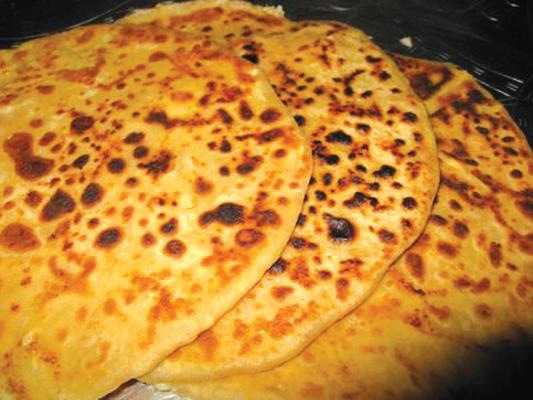
EXCLUSIVE FOR SOME
Nashe Ka Paratha
NON-VEGETARIAN PARATHAS

Keema Paratha
Chicken Paratha
Egg Paratha
DESSERT PARATHAS
Shakkar Paratha
Chinni Paratha
Kaju ki Biryani
Soya Nuggets-Mushroom
Egg Plant (Baingan) Plus More
NON VEGATARIAN BIRYANI
Hydrabadi Mutton
Lucknowi Chicken
Kashmiri
Afgani
Fish
All these and our normal menu, all weekend at
SEPTEMBER (1) 2010 <> 51 NATIONAL EDITION
The recent Federal elections have opened a can of worms in relation to immigration issues, which can well impact resident migrants too
Dr
OPINION www.indianlink.com.au
139 STEPHEN STREET BLACKTOWN PHONE: 9671 7820
Quantity Service
Quality
Special Attractions:
* Chariot Pulling, FireWorks & Vahana Processions!
* Bhajans, Chanting & Prayers by Community Groups!
* Open-Air Cultural Events (Dancing, Singing etc)

52 <> SEPTEMBER (1) 2010 INDIAN LINK
See www.svtsydney.org for more details or Call 1300 626 663
* Free Lunch (Annadhanam) by Community Kitchen everyday! * Divine Ceremony & Dazzling Decorations! * Free Bus Service from Suburbs to & from Temple, everyday! - from Liverpool via Wattlegrove/Holsworthy & back - from Wentworthville via Westmead/Parramatta & back - from Homebush via Strathfield/Hurstville & back - frequent shuttles from Helensburgh Rly.Stn to Temple & back
Do it for Dad!
Being a dad today is a demanding job, requiring one to maintain a fine balance between family and career, writes SHERYL
DIXIT
It’s post-bath, pre-bedtime at home, and my sons and I are sitting together in their bedroom reading a book as we wind down for the night. Just a few more minutes for their prayers and story, I think, and I’ll be free to put my feet up after another rushed day….
Just then, there’s a surreptitious knock on the door. A frisson of fear and delight runs through their little frames and they look at the door in thrilled anticipation. Instinctively they move together, crouching behind the bed and whispering to each other, “Quiet, quiet, don’t make a noise!” The knock sounds again, this time louder and more determined. They’re taut, poised and ready. The door opens and their dad bursts in. Their screams of delight momentarily deafen me, as they yell, “Kissing dinosaur’s here, kissing dinosaur’s here!” and in contradiction, fling themselves on him. Right, dad’s here, I say with a sigh, aware that my practical routine has fled out of the door as soon as it opened. The next fifteen minutes are a riotous exuberance of noise as they all scream, wrestle, roll on the floor, shout, jump and giggle through their greetings. The next twenty minutes are a medley of playing silly games, discussing school and pre-school activities and exchanging what seem to be important bits of information, like who got on the ‘sad face’ at school and why.
I don’t find anything particularly funny in my son running around buck nude with his underwear on his head, but my husband finds it hilarious
Fathers are special and children, in their own way, make sure they know exactly how special. From the little baby girl confidently swooping down the slide into the arms of her dad, to the embarrassed teenager accepting a bear hug from his proud dad on scoring a goal at soccer, there’s that special bond between dads and their kids which is quite exclusively, their own individual domain. It’s that deeper level of understanding which mums can’t quite achieve, and in honesty, we are quite happy to not even try. I don’t find anything particularly funny in my son running around buck nude with his underwear on his head, but my husband finds it hilarious. I’m not impressed by the sound and aroma of my little boys’ propensity to pass wind, but their dad looks amazed a second before he collapses with mirth. I’m concerned when one of my boys falls off his bike or is attacked by a persistent magpie, but my husband? Yes, he’s the guy who looks like he needs to go to the bathroom urgently, but really, it’s only his face contorting as he tries to figure out if the situation’s amusing or irritating.

Perhaps it’s our eccentric family, but most of the boys’ antics seem side-splittingly funny when their dad is around. Even I seem to relocate my sense of humour, and tend to see the funny side of splashes through mud, torn clothes, children stuck up trees, grazed knees and
mispronounced words. And somehow, when their dad is around, the boys seem to be more independent and selfreliant than they ever are through the day with me.
“I’m so tired, please get me a glass of water,” is a command that I reluctantly obey, telling myself to empathise with my five-year-old’s stressful day at kindergarten. But his dad’s retort is, “Get it yourself!” and the little blighter will sigh dramatically and get off his butt to fetch the water himself.
I must admit to a dash of envy at this masterful attitude which absolutely doesn’t work when I try it. Threats, corruption and finally bribery are the things that work with me, and I wonder yet again at this masculine undercurrent of understanding that is way more effective than all my seemingly ridiculous attempts at letting them know who’s boss.
The easiest thing, when dealing with the upheaval of our nightly routine, would be to cut out the exuberance with reminders of bedtime and school the next morning. However, the nature of my husband’s job demands that he work late hours and the boys are lucky if they see him before their bedtime even three days a week. And that’s why I keep reminding myself that the routine doesn’t really matter, as long as they’re spending time together and enjoying themselves. Working late isn’t uncommon in this day and age, when dads have to be much more than 9-to-5 family men; they have to carry around their dreaded Blackberrys and constantly keep in communicado with their workmates, clients, bosses… whoever! At least we’re fortunate, especially when I think of other dads who work shifts or away from home
HAIRDRESSING
Enrol Now Certificate III $9750.00
We also offer Certificate IV
Diploma of salon management
OTHER COURSES Certificate IV and Diploma in Business
Reg By VETAB& CRICOS
Ph 98214332
Onshore students welcome No agent
during the week, all the while missing their families and with just occasional weekends to share in all the little joys that only our children can give us.
For dads, a hectic and demanding work schedule during the week also means personal sacrifices which, while not as important as being with one’s children, are forsaken because they simply don’t have the time. For instance, they can’t fit in an exercise schedule into their busy lives, they don’t have the time to indulge in a hobby and probably the one thing that helps them relax is sitting in front of the TV with a drink, preferably alcoholic. But while this lifestyle seems to be an evil born out of necessity, as one gets older it takes its toll and eventually, it’s the family that is the main victim. Some dads I know are content to watch their kids play sport from the sidelines, simply because they don’t have the energy to actively participate. Others find themselves increasingly short-tempered, irritable and critical, particularly at the antics of their teenage children. And this is despite their youthful lifestyle having been way more riotous than their kids could even ever imagine!
For dads, it’s a Catch-22 situation. Excelling at their jobs helps build a career, personal confidence and also helps provide material comforts for the family. But in the bargain, they lose out on spending consistent quality time with their kids. In today’s world it’s rare to find that perfect work-family balance, but there’s no doubt that they do try their best.
So pardon me for nagging, but slow down, dads, and take time out for yourselves and your kids. Keep in good health, eat well, imbibe alcohol in moderation and if you smoke, kick the habit – unless you’d like your kids to emulate you in this worthless and expensive activity! Kick around a ball with them, or simply challenge them to a game on the Wii. Join them when walking the dog. Call them for a chat, even if it’s to subtly probe about a new girlfriend or talk to your grandkids. As a dad, it’s your prerogative to be a part of their life and I firmly believe that these encounters will make lasting memories. There’s nothing quite as reassuring as those moments spent together as a family, and if your children can recount happy times with you to their kids, well, you can be sure they’ll make as great a parent as you.
Shop for lease/sale
in Rooty Hill, size 145 squares, 2 street access, 145 square meters and separate back part is 130 square meters, close to M7 and M4, newly renovated, has a cool room, would be suitable for all kind of business example news agency, warehouse, manufacturing bread, supermarket, take away food etc, priced at $350 per week.
First to see it will lease it out.
Sale price - $350,000
Please call
Rob on 0424 860 691 or Joe on 9721 1611
A great opportunity to start a business.
SEPTEMBER (1) 2010 <> 53 NATIONAL EDITION
FATHER’SDAYSPECIAL www.indianlink.com.au
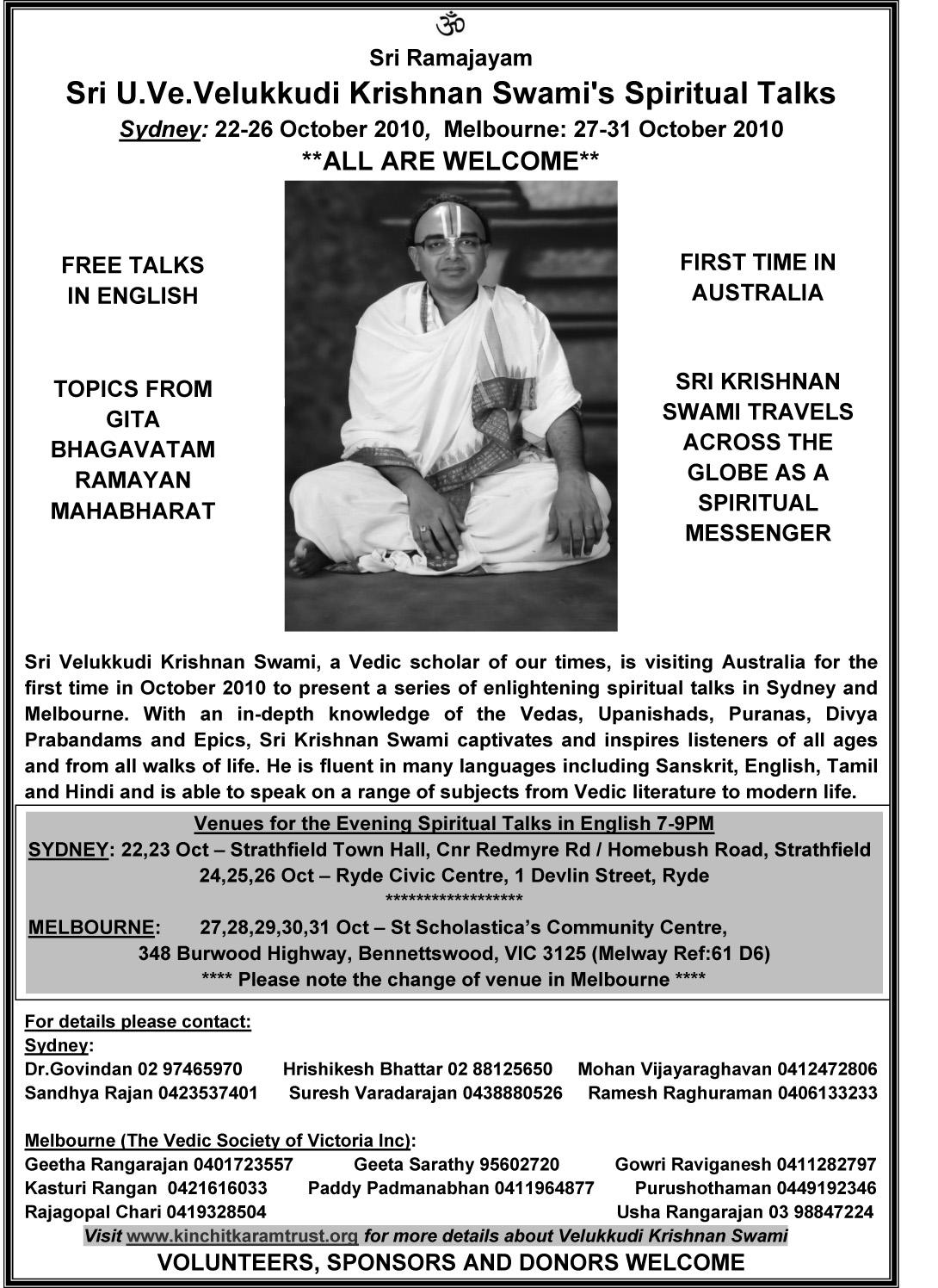


54 <> SEPTEMBER (1) 2010 INDIAN LINK



The City of Wonders
By SANDIP HOR

Simultaneously noble and squalid, the 300-year-old city of Kolkata, once called ‘Calcutta’, was built on the banks of the Hooghly. Now unhurriedly sloughing of its old skin under a Communist-led government, Kolkata has been awarded with many sobriquets, each portraying a distinct feature of its physical environment, lifestyle or ambience, all destined to create a unique appeal for visitors to experience.
City of Clubs
When English dwellers in Kolkata increased, it was inevitable that they would try and find a place of their own to play sport and socialise in the same way they would have done at home. That gave rise to the idea of clubs and the first to be established, not just within the city but in the entire subcontinent, was the Calcutta Cricket and Football Club, built in 1792. Next followed the Calcutta Racquet Club in 1793, the oldest squash club in the world that still exists at the same location where it opened its doors two centuries ago. The Bengal Club, which is compared to the esteemed Oriental Club in London, was the first social one to emerge on the scene in 1827. Many more followed – clubs for golf, tennis, swimming, rowing and the list went on with several local additions coming later. Thus was Kolkata dubbed the “City of Clubs”. Today these clubs are the playground for the elite, and their style, tradition and etiquette may not be found anywhere else in the world.
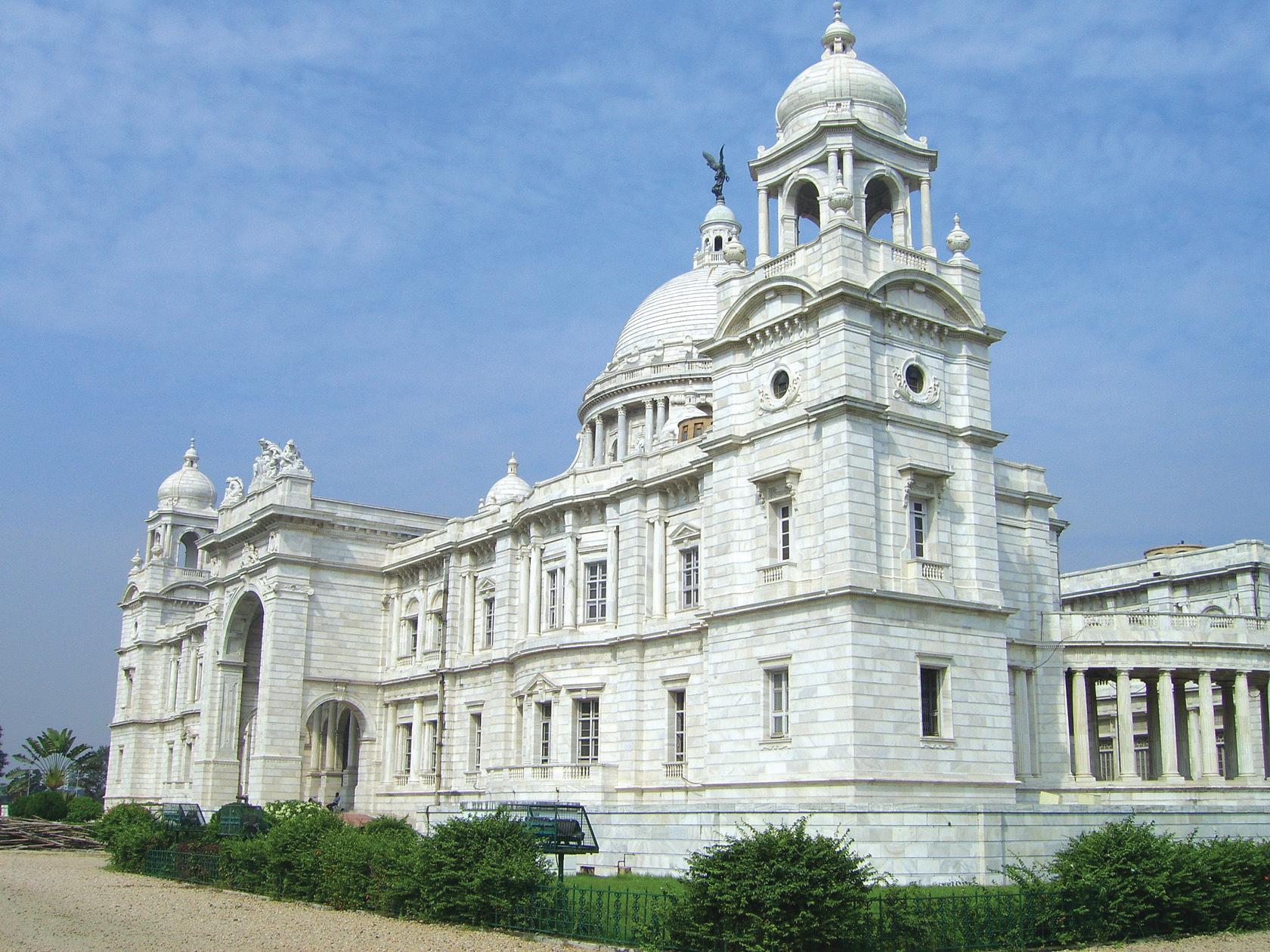

City of Art and Culture
The 19th century Bengali Renaissance movement introduced a great cultural awakening that has, over the years, made this city the cultural capital of India and since then, it is often referred as the “City of Art and Culture”. Hardly anyone can deny this; the city has bred Nobel Prize winning poet Rabindranath Tagore, spoken of Oscarwinning film director Satyajit Roy, hosted the nation’s largest book fair, and still sells countess copies of Vikram Seth, Amitav Ghosh, Rana Dasgupta and Jhumpa Lahiri, all of who have enduring links with Kolkata. It showcases dance, music, art exhibitions and theatres at various venues located in every nook and corner of the city on a daily basis.
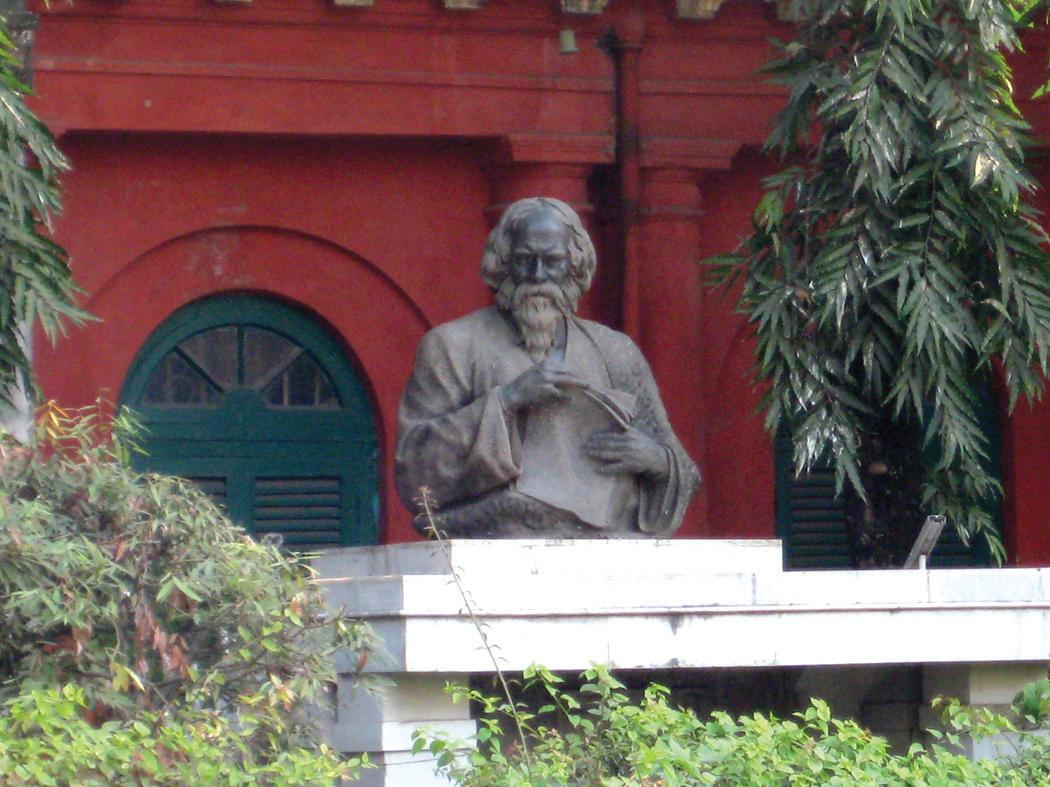
City of the Raj
After being picked by Englishman Job Charnock in 1686, the British developed this obscure coastal settlement with such urban sophistication, it was almost like London with stately buildings, wide boulevards, gothic churches and formal gardens. It became the second city of Queen Victoria’s empire and remained the capital of British India till 1911, gaining repute as the “City of the Raj”. Eminent novelist Emily Eden fell so deeply in love with Calcutta during her stay in the 19th century, that she pronounced it as the finest place in the world and most generously bestowed her name to the city’s world-famous cricket ground, Eden Garden.
After six decades of independence, the legacy of the empire has faded, but the ensemble of quality colonial architecture and lifestyle still survives. Embellished with cricket, cocktails, curries and cakes, Kolkata is still identified as a place of near pilgrimage to admirers of the Raj who reminisce about the remnants of this imperial viceroyalty. They meander in the Esplanade, a bustling quarter surrounded by colonial architecture, stroll along the riverside Strand, glimpse British-made red edifices such as the expansive Writers’ Building - now the headquarters of the West Bengal government - and relish art and history inside the Victoria Memorial, a structure that looks like the Taj Mahal. They frequent one of several grand old gentlemen’s clubs for a gin and tonic, back horses at the race track or play a soothing round of Golf at the Royal Calcutta Golf Club, India’s equivalent of Scotland’s St Andrews.
City of Processions
Kolkata became the “City of Processions” in the 20th century during the Freedom Movement when thousands of men and women marched along its streets in defiance of British rule. The parade still continues after six decades of independence, but for different reasons which could be anything from protesting against a government decision, to celebrating India’s win in cricket against Australia, to immersing the Goddess Durga into the holy waters of the Hooghly after the four days of Durga Puja celebrations. It has become a part of Kolkata’s life, and you have to be unlucky if you do not encounter at least one procession during a visit to the city.

56 <> SEPTEMBER (1) 2010 INDIAN LINK
INDIADIARY
Kolkata has unique features that have earned it many distinct soubriquets
Majestic Victoria Memorial
An old British club
City of Palaces
During the British Raj, a number of impressive palaces graced the city as homes of viceroys, regal imperialists and Bengali Rajas and zamindars (landowners), earning Kolkata her title of “City of Palaces”. Many of them are now in decrepit conditions and are gradually making space for new generation dwellings, but a few still survive for visitors to glimpse and testify to their glory. Like the Raj Bhaban, current home of the State Governor which was built in 1803 on 27 acres of land on the lines of Kedleston Hall in Derbyshire, and which was the viceroy’s home. The National Library, an Italian Renaissance-styled grand edifice, was built in 1836 as the residence of the British Administrator. The Marble Palace built by Raja Rajendra Mullic around the same time as his family home is another notable structure.
City of Bazaars
Kolkata was founded as a trading place and required the establishment of several markets and bazaars to deal with a variety of merchandise. This led to its being christened as the “City of Bazaars”, with some early suburbs like Burrabaazar, Bowbaazar and Shyambaazar deriving their names from this notion. Today glittering shopping malls add their glamour; however it is those vibrant street bazaars that offer visitors a high-energy and buoyant experience for which Kolkata is famous. Some of the best examples can be found in the early morning flower auction market, located by the riverside just under the city’s landmark Howrah Bridge where the quantum of blossoms and zing of countless traders will prepare you for a truly effervescent day. There is the Dudh Mandi where daily auctioning of giga litres of milk still fascinate; the College Street second-hand book market said to be the world’s largest - where finding an out-of-print edition of a literary masterpiece can still overwhelm a collector, and the Raat Bazaar, a midnight-to-dawn street market selling second-hand clothing where the carnival-type atmosphere even in those hours can surprise and refresh. Last is the city’s favourite New Market, though built in 1865, where if you cannot find something, then it has yet to be created!
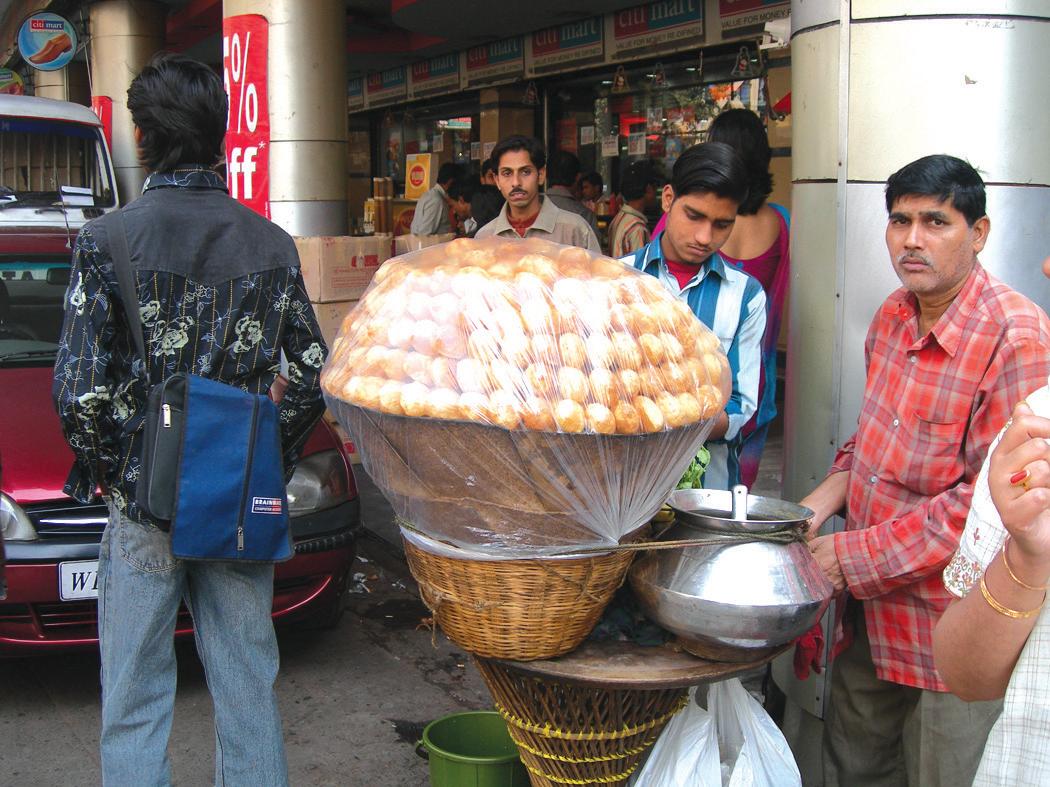
City of Dreadful Night
Not all the names given to Kolkata are flattering. Kipling called it the “City of Dreadful Night” and wrote of its unspeakable poverty when he visited during a dreadful famine that hit Bengal in the 1940s.
While poverty certainly remains in your face, the daily festival of human existence in this city of 15 million today is something that still captures visitors and makes them fall in love with Kolkata. Round the clock, something jaunty is being played on its buzzing streets, making one humanly feel that life is not dull, but full of excitement. It’s said you can touch life in Kolkata and perhaps that legend locked the English in the city for three centuries. Perhaps it inspired a Macedonian Catholic nun Agnes Gonxha Bojaxhiu to make Kolkata her home and become Mother Teresa. It has enticed literary intellectuals Allen Ginsberg and Gunter Grass to repeat visits, touched Steve Waugh to associate himself with Udayan, a home for the unfortunate, and enthused novelist Dominique Lapierre to name it “City of Joy”, the one sobriquet which all Kolkatans proudly hold close to their warm hearts.
Travel notebook
Kolkata


GETTING THERE
Fly Singapore Airlines (www.singaporeair.com) from Sydney, Melbourne, Brisbane, Adelaide and Perth to Kolkata via Singapore.
GETTING AROUND
No shortage of public transport, from yellow Ambassador taxis, buses, trams, three wheelers, hand-pulled rickshaws to an efficient underground train system
ACCOMMODATION
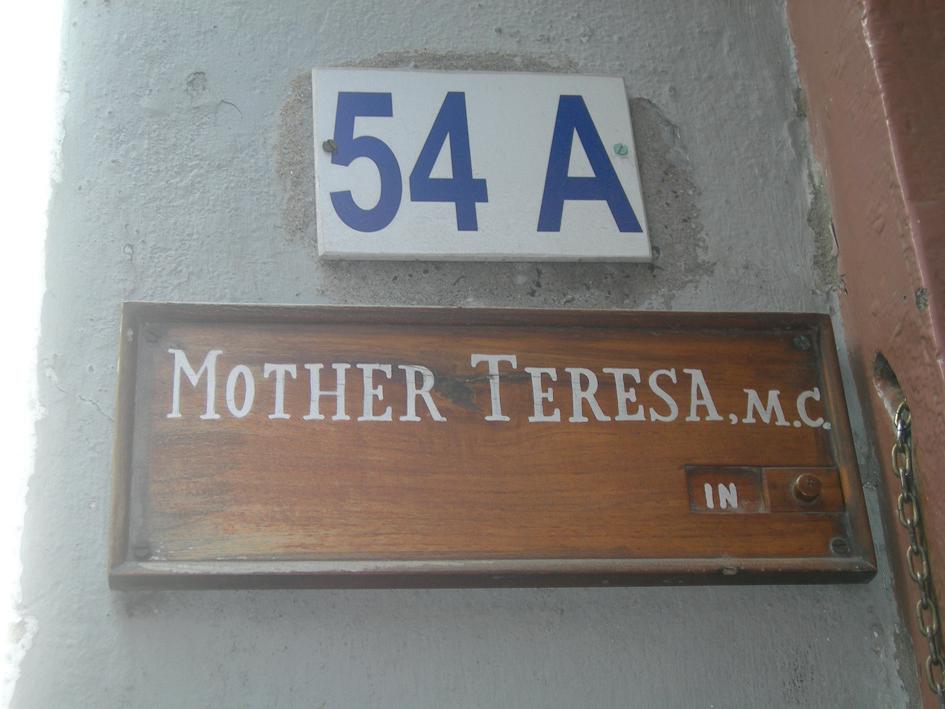
Located in the city’s greenest precinct within close proximity of key tourist attractions is the Taj Bengal Hotel (www.tajhotels.com). It is very reminiscent of the British Raj, epitomises a blend of legendary traditions and contemporary conveniences to make your Kolkata visit memorable. Don’t miss out dining at two of their top restaurants, Sonargaon for Indian cuisine and Chinoiserie for Chinese.
LOCAL SIGHTSEEING
Victoria Memorial, Zoological Garden, National Library, Indian Museum, Tagore’s Ancestral House at Jorasako, Marble Palace, Kali Temple, St Pauls Cathedral, Nakhoda Mosque and Mother Teresa Home
CURRENCY
Rupee is the local currency, with 1 AUD = Rs 40 Visa Australian Nationals require a visa to enter India
MORE INFORMATION
Check www.incredibleindia.org
SEPTEMBER (1) 2010 <> 57 NATIONAL EDITION www.indianlink.com.au
It has become a part of Kolkata’s life, and you have to be unlucky if you do not encounter at least one procession during a visit to the city
Raj Bhavan Gate


58 <> SEPTEMBER (1) 2010 INDIAN LINK


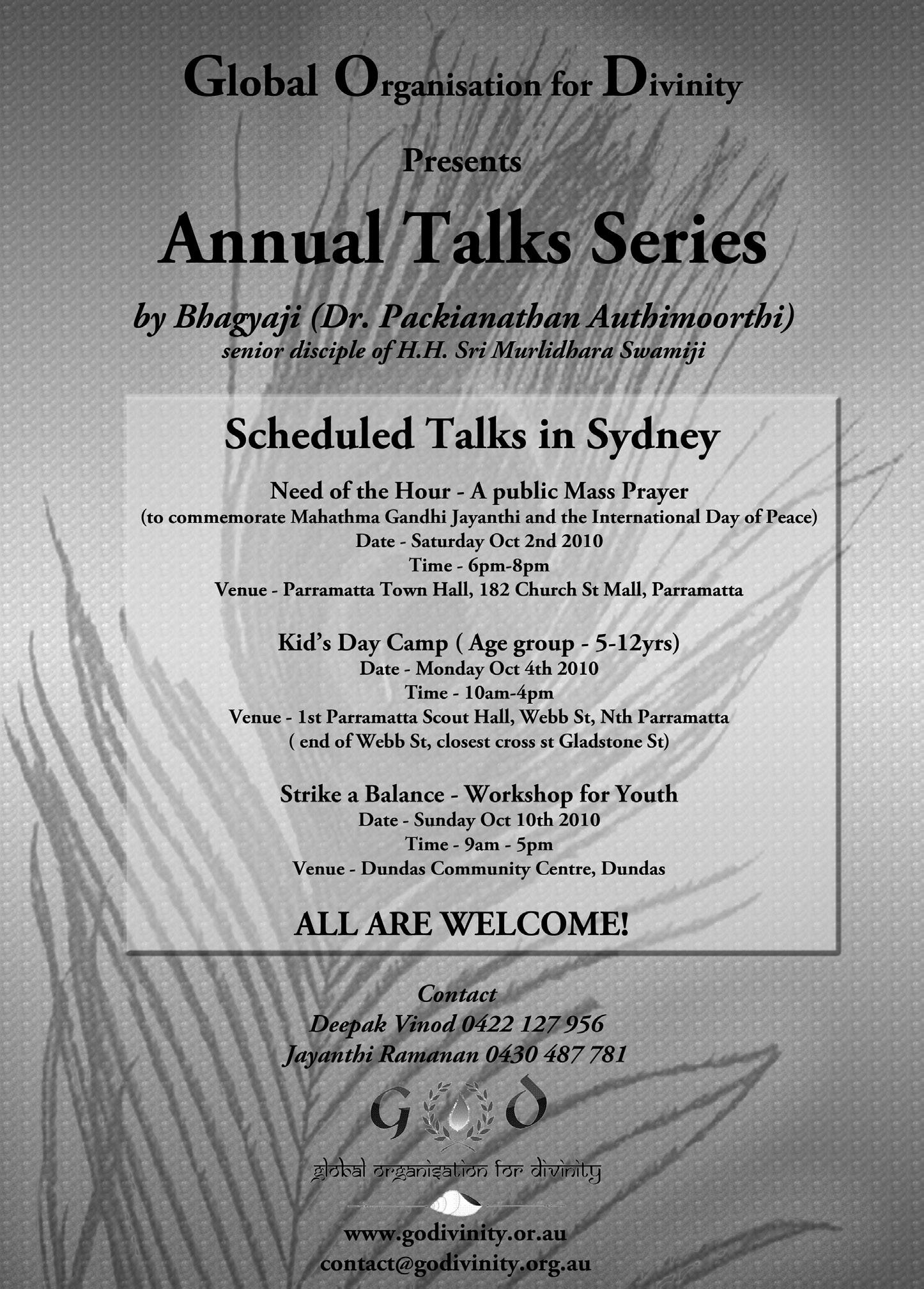

SEPTEMBER (1) 2010 <> 59


60 <> SEPTEMBER (1) 2010 INDIAN LINK
Finding Fundays

Long ago, there used to be a day in the week when life seemed lazy, uncomplicated and rejuvenating
best. Or worst!
BY MADHUCHANDA DAS

Can you remember, from many manic summers ago perhaps, waking up to a day of the week when the clock simply stopped and time stood frozen? Well, I certainly do! I wasn’t dragged out of bed by the horror of a shrill alarm clock, but rubbed my eyes gleefully open when Baba drew the blinds to invite the golden sun into my room. A clear sky promised a day of undiluted fun and endless possibilities, as the divine fragrance of Ma’s lit incense sticks extended a pious significance to that ambience. On that one day of the week, Ma’s frantic morning anthem of “Get up, get going!” was replaced by Anup Jalota’s bhajans calling the shots. I was deluged by the fragrant aroma of luchis (Bengali for puris) simmering lightly in a sea of warm oil, dying to be pricked open and devoured with succulent aloo dum
I would be at my creative best, etching intricate toothpaste designs on the bathroom mirror while wondering why it had been invented for teeth. That was the only day when the newspaper had a coloured edition, and its eye-catching spread would blow my senses away. Baba would goad me to read the serious stuff - the editorials and blah blah to buttress my language skills, but my heart lay in the tinsel town gossip, horoscopes, cricket and crosswords. And Ma would nag at the bright yellow designs in aloo dum oil etched across the glossy paper. Poor soul, she could manage to lay her hands on it only in the late afternoon, after it had been caressed by every hand in the family, all of whom had contributed to its crumpled
The lilting strains of Doordarshan’s signature tune wafting across from the neighbours’ home would make me dash towards our idiot box, which then ruled the roost. And there I remained fixated till eternity, oblivious of the world around me. This magic box faithfully delivered one fantasy after another, from Rangoli to Ramayan to regional cinema.
Intermittently, I was shaken out of my spellbinding stupor by Ma’s nimble fingers working their oily magic on my scalp or her fuming over getting the house tidy to welcome Baba’s first cousin’s second daughter’s husband’s friend who was invited for lunch.
Then there was Baba who demanded if he had any proprietary rights whatsoever over the goggle box (aka the TV- there was no Google in those days, you see!) to watch some sane news from around the country and the world. I only grudgingly consented after making a deal – to be allowed for a play with the building kids. Baba, the world’s simplest, most straight-forward soul, gladly gave in, but as I rushed down to freedom I could faintly hear Ma’s furious outburst on my grand escape.
Whether it was lagori, cricket, kho kho or badminton, or endless walks around the buildings, that was paradise and life was a dream.
Glorious food ruled the roost on that day. Baba’s impeccable eye for picking the choicest fare in the subzi mandi and Masterchef Ma’s culinary deftness made a magical jugalbandi which never failed to rise to the occasion. Their efforts triumphantly culminated into a lip-smacking feast that the day signified. My tongue and tummy tickled and teemed with myriad onslaughts of sweet, sour, tangy and peppery and there was a delectable gastronomic pleasure in licking my fingers after digging them deep into that elaborate spread.
I tossed and turned through the mandatory afternoon siesta which was Ma’s command, and as the house was engulfed by a hovering quietness, my
hands itched to try the card trick that Guest Uncle had demonstrated post-lunch.
Evening snacks tasted even scrunchier with friends over to watch the Hindi film on telly. Well, you see, not everybody owned the grand EC TV that proudly ruled our lounge room. All rested and replenished, the week ahead seemed beckoning as I dexterously organised my school satchel.
It’s strange, but at the core of it all, there was a pronounced profundity to the seeming shallowness of plain, absolute chilling out. No secret formulas and no sacrosanct commandments were needed to add magic to life. No talents to hone, no competitions to flaunt, no parties to throw or seminars to attend, no malls to visit, no supermarkets to rush into and no virtual gizmos to dabble with. Just simple, out and out reflection, rejuvenation, rapport and reciprocity in the habitual humdrum of ordinary middle class living.
Now, there are talents to hone, competitions to flaunt, parties to throw, seminars to attend, malls to visit, supermarkets to rush into and virtual gizmos to dabble with
And now, as I die to steal a glance at Indian Link - my favourite magazine - on that very day of the week many summers later, the numerous chores to conduct and the countless errands to run continue to tick surreptitiously in some dreary corner of the mind, waiting to manifest into a whizzing torpedo of itineraries and agendas, of promises to keep and words to honour, of quality time to chalk out and quantifiable love to shower. Sadly, I remain incapable of affording the luxury called time to stand and stare, with the extraordinary demands of an extracting era looming large upon me. I just hope and pray that one of these days I’m able to reserve a teeny weeny bit of it to relive those unmatched, unique and unparallel good old days when something called Sundays existed.
SEPTEMBER (1) 2010 <> 61 NATIONAL EDITION
LIFESTYLE
www.indianlink.com.au
Taking time to smell the flowers
GREYSTANES
WENTWORTHVILLE AUCTION
TICKS ALL BOXES FOR A GROWING FAMILY 59 Essington St
5 Bedrooms plus study, huge open plan lounge and dining, separate lounge and rumpus room, modern kitchen with gas appliances, 3 bathrooms, ducted aircon, tiled downstairs, carpeted upstairs and double lock up garage with internal access. In the heart of Wentworthville, walking distance to schools, shops an station, when size really does matter, call now for an appointment. Don’t cheat yourself out of this!
Open For Inspection: Saturdays 2:30pm to 3:00pm
Auction: Saturday 18 Sept 2010 at 3:00pm On Site
Laing & Simmons Wentworthville 9688 4000
Contact Jim Malamas 0433 622 145
GIRRAWEEN AUCTION
AUSTRALIAN COLONIAL DESIGN 69 Gilba Rd

living areas, latest bathroom & kitchen, large north facing balcony, video security and garage. Ideal for the first home buyer or investor. Laing
This home would suite a buyer looking for something with uniqueness & individuality. Features include 3 bedrooms, separate lounge with combustion fire, country style kitchen, 2 modern bathrooms, reverse cycle air conditioning, large decked patio & well manicured gardens, double remote LUG & Electric gates including loft area featuring separate entertainment room. Previously rented for $530p/w. Also ideal for home business (S.T.C.A.) This one of a kind home is waiting for someone special to snatch it up. All set on a large corner block of 708sqm approx. Open For Inspection: Saturday 11:30-12pm

Auction: Saturday 18 September 2010 onsite at 12pm
Laing & Simmons Wentworthville 96884000








Contact Leanne Ollerenshaw 0414 790 887 or Alan Fowler 0413 057 699
SOUTH WENTWORTHVILLE $589,950



BRAND NEW DUPLEX
Stop Looking - This duplex has the lot, features include four large bedrooms, two bathrooms, three toilets, separate study, huge ultra modern kitchen with double ovens, gas cook top, ducted air conditioning, large backyards, remote lock up garage all close to schools, shops and transport.
Laing & Simmons Wentworthville 9688 4000 Contact Leanne
MERRYLANDS $359,950

BLUE RIBBON LOCATION
19/53 Manchester St
Spacious interior & a great location makes this unit an excellent first home or investment. Just moments to Merrylands CBD this unit offers 2 bedrooms both with built ins, modern kitchen & bathroom, open plan living & dining, north balcony, internal laundry, plenty of cupboard storage space, lock up garage & within walking distance to all amenities.
Laing & Simmons Wentworthville 9688 4000 Contact Jim Malamas
Caeser stone top kitchen with gas cooking, high ceiling, air conditioning, huge covered balcony and more. Set in a well maintained security block with walk to hospital, shops and station. Ideal for first home or investor.
Laing & Simmons Wentworthville 9688 4000 Contact Alan Fowler
sleep out with separate lounge, huge covered entertaining area, situated only minutes walk to shops and station. Not to be missed!
Open For Inspection: Saturdays 10:30am to 11:00am
Auction: Saturday 18 Sept 2010 at 11:00am On Site
Laing & Simmons Wentworthville 96884000 Contact Alan Fowler 0413 057 699 or Leanne Ollerenshaw 0414 790 887

PEMULWUY $319,950

SOUTH WENTWORTHVILLE
$399,950
This brick veneer, 4 year old home features 2 bedrooms plus study, large modern kitchen with gas cook top, modern bathroom, enclosed sunroom, ducted air conditioning throughout, lounge and dine, remote lock up garage all set on a 300sqm block. This home would suit villa buyers, investors or simply a good way to get into the market.
LEVEL BLOCK
One of the last few blocks of land available in this prestigious Lakewood estate, 367sqm corner block with north east aspect. Estate features lakeside environment, tennis courts, cycle and walk ways and more situated in quiet street close to shopping centre, fantastic opportunity to build your dream home.
Laing & Simmons Wentworthville 9688 4000 Contact Alan Fowler

Laing & Simmons Wentworthville 9688 4000 Contact Leanne Ollerenshaw

62 <> SEPTEMBER (1) 2010 INDIAN LINK WENTWORTHVILLE AUCTION SHORT WALK TO TRAINS 15 Stapleton St This 3 bedroom aluminium clad house is set on a large 872sqm block. Features polished floors boards, neat kitchen and bathroom, lounge & dine area with air conditioning, separate office area, lock up garage & carport. Don’t miss out on this beauty! Open For Inspection: Saturday 1:30-2:00pm Auction: Saturday 25 September 2010 on site at 2:00pm Laing & Simmons Wentworthville 96884000 Contact Leanne Ollerenshaw 0414 790 887 or Alan Fowler 0413 057 699 CONSTITUTION HILL $329,950 WELL PRESENTED TWO BEDROOM VILLA Well presented two bedroom villa with floating timber floors, spacious living areas, modern bathroom & kitchen with dishwasher, second toilet, built in wardrobe, air conditioning, paved low maintenance courtyard, garage, all in a well maintained complex & ideal for the first home buyer. A must to inspect! Laing & Simmons Wentworthville 9688 4000 Contact Alan Fowler WENTWORTHVILLE AUCTION 695SQM BLOCK 19 Fulton Avenue Set in a quiet residential street within walking distance to station, shops and Westmead hospitals, this property is a must to inspect. Features 3 Spacious bedrooms, separate lounge and dine, bright ultra modern bathroom, modern kitchen, ducted air-conditioning, garage, outdoor covered entertaining area. Ideal for investor with potential for duplex, subject to council approval or build your dream home! Open For Inspection: Saturdays 12:30pm to 1:00pm Auction: Saturday 18 Sept 2010 at 1:00pm On Site Laing & Simmons Wentworthville 96884000 Contact Alan Fowler 0413 057 699 or Leanne Ollerenshaw 0414 790 887 WESTMEAD $379,950 AS NEW Only 3 years old this top floor unit is located in a popular block within walking distance to shops & station features 2 large bedrooms, main with ensuite, open spacious
Wentworthville 9688 4000 Contact Jim Malamas
& Simmons
$539,950
HOME
property is presented in excellent condition featuring 4 bedrooms all with built ins, ducted air conditioning through out, automatic shutters, modern bathroom,
timber kitchen, large tiled dining, separate lounge room, lock up garage converted into potential granny flat, good size yard, covered area with jacuzzi great for entertaining all located close to all amenities. Laing & Simmons Wentworthville 9688 4000 Contact Jim Malamas
AUCTION 18 METER FORNTAGE 50 Veron Street Huge
FANTASTIC FAMILY
The
modern
WENTWORTHVILLE
potential in this well maintained home, ideal for the first home buyer, investor or developer. Wide frontage with 695sqm block, 2 bedroom home with separate lounge and dine, modern kitchen with gas cooking, modern bathroom, sunroom, garage converted to
AS NEW Only 18 months young
2nd floor unit features 2 large bedrooms
built-ins
ensuite to main, spacious living area,
WESTMEAD $389,950
this immaculate
with
and
fantastic
Ollerenshaw NORTH PARRAMATTA $379,950 INVESTORS TAKE NOTE Ideal for the investor or first home buyer with fantastic returns and still plenty of deprecation. Situated opposite Ritchie Benaud Reserve and only 3 ½ years of age this 2nd floor unit offers 2 large bedrooms, ensuite to main, floating timber floors, spacious lounge & dining room, ultra modern kitchen with gas cooking, 2 balconies, a secure lock up car space and more. Situated close to transport & shops. Not to be missed. Laing & Simmons Wentworthville 9688 4000 Michael Cuskelly GREYSTANES $599,950 PICTURE PERFECT Attractive 3 bedroom plus office/study brick veneer home, perfect for a family wanting spacious open plan living. Beautifully presented, quality features through out including formal & informal living options, ultra modern kitchen with quality stainless steel appliances, modern bathroom and ensuite to main, ducted air conditioning, low maintenance yard with undercover BBQ entertaining area with Japanese pond feature & double LUG. You’ll find all the expected comforts plus more, a true life getaway with views of the mountain reserve from you sparkling in ground swimming pool area, great for those summer times. Close to school, shops and transport. Laing & Simmons Wentworthville 9688 4000 Contact Jim Malamas WESTMEAD $369,950 ROOM TO MOVE Not to be missed! Extra large north facing top floor 2 bedroom unit with combined lounge & dining, modern kitchen and bathroom, 2nd toilet, gas cooking & heating, 2 balconies, freshly painted throughout, new carpet, alarm system and more. Set in a well maintained security block only minutes walk to station and hospitals. Laing & Simmons Wentworthville 9688 4000 Contact Alan Fowler SILVERWATER $389,950 SMALL COMPLEX Spacious 3 bedroom townhouse, with built-ins in all rooms, separate lounge and dine, modern bathroom and kitchen with gas cooking, extra toilet downstairs, large garage with internal access, private courtyard, close to transport. Ideal for first homebuyer or investor Laing & Simmons Wentworthville 9688 4000 Contact Alan Fowler MERRYLANDS $349,950 QUIET LOCATION Fantastic townhouse, freshly painted throughout in a great location, features 3 bedrooms, spacious living area, separate dine area, modern bathroom & kitchen with gas cooking, lock up garage, large private courtyard, close to transport. A MUST TO INSPECT! Laing & Simmons Wentworthville 9688 4000 Michael Cuskelly


NATIONAL EDITION Sydney, Canberra Melbourne For details call 18000 15 8 47 One paper FIVE EDITIONS
Iron deficiency anemia
BY GEETA KHURANA

Iron-deficiency anemia is the most common type of anemia. The term “anemia” usually refers to a condition in which your blood has a lower than normal number of red blood cells. Red blood cells carry oxygen and remove carbon dioxide (a waste product) from your body. Anemia can also occur if your red blood cells don’t contain enough hemoglobin.
Hemoglobin is an iron-rich protein that helps carry oxygen to your body. Iron-deficiency anemia usually develops over time if your body doesn’t have enough iron to build healthy red blood cells. Without enough iron, your body starts using the iron it has stored. Soon, the stored iron gets used up. After the stored iron is gone, your body makes fewer red blood cells. The red blood cells it does make will have less hemoglobin than normal.
Causes
Iron deficiency could be because of many non nutritional reasons such as genetic disorders, bleeding ulcers or hemorrhoids, gastrointestinal bleeding caused by aspirin or related drugs, frequent blood donations, colon cancer etc, but it can also be caused by lack of dietary iron especially in vegetarians. Women are especially prone to iron deficiency because of repeated blood loss during menstruation.
Pregnancy also places extra iron demands on women since iron is needed to support the added blood volume, the growth of the fetus and blood loss during childbirth.
Symptoms
Fatigue, lethargy, weakness, poor concentration, and impaired immune function. Another peculiar symptom of anemia called pica is the desire to eat unusual things such as ice, clay, cardboard, paint or starch. Advanced anemia may also result in lightheadedness, headaches, ringing in the ears (tinnitus), irritability, pale skin, unpleasant sensations in the legs with an uncontrollable urge to move them (restless legs syndrome).
Sources of iron
Iron occurs in two forms in foods, heme and nonheme. Heme iron is found only in foods derived from the flesh of animals, such as meats, poultry and fish. Heme iron is so well absorbed that it contributes significant iron to the body. On average, heme iron is about 23% bioavailable. “Bioavailable” in this situation means that the iron can successfully make its way from the food into our bloodstream. This 23% number for heme iron, however, is only an average. In practice, the amount of heme iron we absorb is highly variable. Food cooking methods and presence of calcium have a significant impact on bioavailability of heme iron.

Nonheme iron is found in both plant and animal foods. The rates of absorption of nonheme iron are lower than heme iron. Moreover, sources of nonheme iron often contain phytates, which bind to iron and carry it through the digestive tract unabsorbed.
* Liver extracts from beef (bovine) are a rich natural source of many vitamins and minerals, including iron. Liver extracts provide the most absorbable form of iron - heme iron - and other nutrients critical in building blood, including vitamin B12 and folic acid. Liver extracts can contain as much as 3 - 4 mg of heme iron per gram.
* Other red meats including beef, pork and lamb.
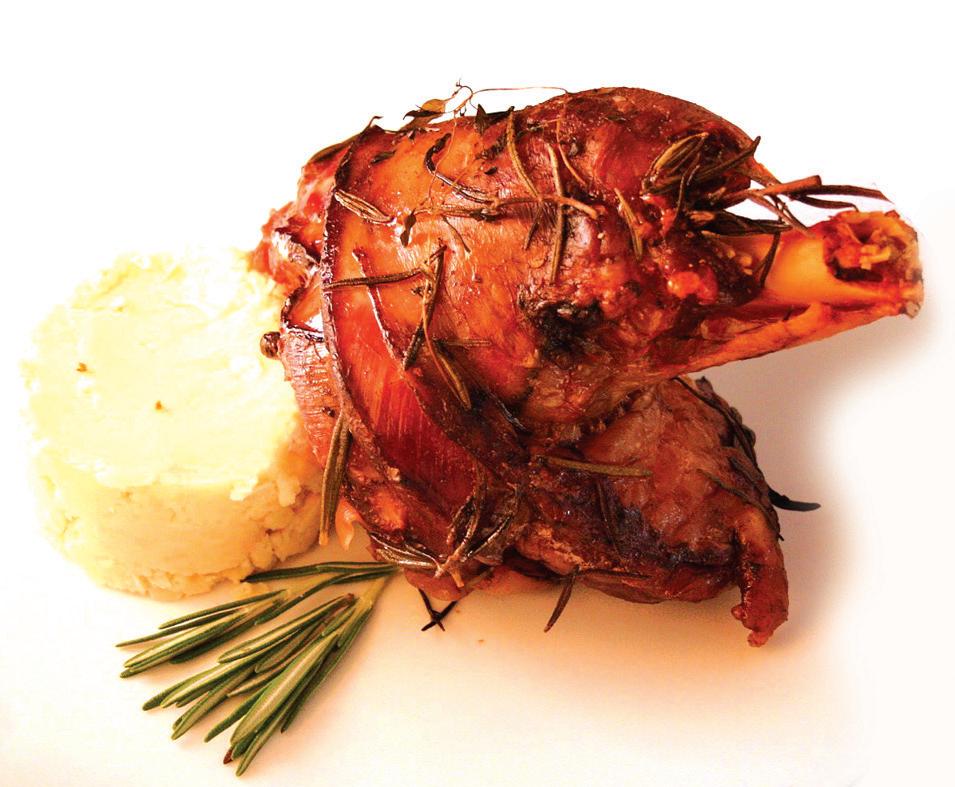
* Seafood such as oysters, clams, tuna, salmon, shell fish, sardines and shrimp, etc

* Chicken and turkey
* Egg yolk
* Green leafy vegetables such as spinach, mustard, mint, coriander, bok choy.
* Other vegetables such as including broccoli, Swiss chard, asparagus, parsley, watercress, Brussels sprouts.
* Whole wheat bread, wheat germ and oats.
* Some breakfast cereals, pastas, breads, and grains are enriched with iron. But you need to check the labels for these.
* Nuts and dried fruits are also considered to have good amounts of iron especially raisins, apricots, dates and prunes.
* Dried beans, molasses and tofu.
Iron absorption enhancers
* Acidic foods (such as tomato sauce) cooked in an iron pan can leech iron into the food and thus also be a source of dietary iron.
* Vitamin C increases the absorption of iron. Having a glass of orange juice with a vegetarian meal helps to enhance the absorption of iron.
* Vitamin C foods such as oranges, cantaloupe, strawberries, Kiwi fruit, red capsicum, grapefruit, etc.
* Tomatoes, tomato juice and peppers.
Meat, fish and poultry contain not only the highly bioavailable heme iron, but also a factor called MFP factor that promotes the absorption of nonheme iron from other foods eaten with them. Therefore, addition of meat in the diet along with vegetarian foods enhances the absorption of iron from vegetarian foods.
Iron absorption inhibitors
* Black tea contains tannins that strongly inhibit the absorption of non-heme iron. In fact, this iron-blocking effect is so effective that drinking black tea can help treat hemochromatosis, a disease of iron overload. Consequently, people who are iron deficient should avoid drinking black tea.
* Fibre is another dietary component that can reduce the absorption of iron from foods. Foods high in bran fibre can reduce the absorption of iron from foods consumed at the same meal by half. Therefore, it makes sense for people needing to take iron supplements to avoid doing so at mealtime if the meal contains significant amounts of fibre.
* Numerous kinds of phenolic compounds in beverages such as tea and coffee, herbal teas, cocoa and red wine form insoluble complexes with iron and may exist as an “iron-tannin” complex and thus inhibit iron absorption. Therefore, it is advisable to wait an hour after a meal to drink tea.
* Coffee interferes with the absorption of iron. However, moderate intake of coffee may not adversely affect risk of irondeficiency anemia when the diet contains adequate amounts of iron and vitamin C.
* Phosphates found in carbonated soft drinks can also decrease iron absorption.
* Soy is normally an important part of vegetarian meals as a high quality protein and is an excellent source of the healthpromoting phytochemical, genestein. However, most forms of soy (soy flour, soy protein isolate, and tofu processed with calcium sulfate) reduce the absorption of non-heme iron. The inhibitory effect can be largely eliminated by using fermented soy-based products such as soy sauce, (tempeh, natto, miso), iron fortified soy products.
* Oxalates, found in spinach and chocolate, may also decrease iron absorption by forming complexes with the mineral that cannot be absorbed through the digestive tract.
64 <> SEPTEMBER (1) 2010 INDIAN LINK
HEALTH
www.indianlink.com.au
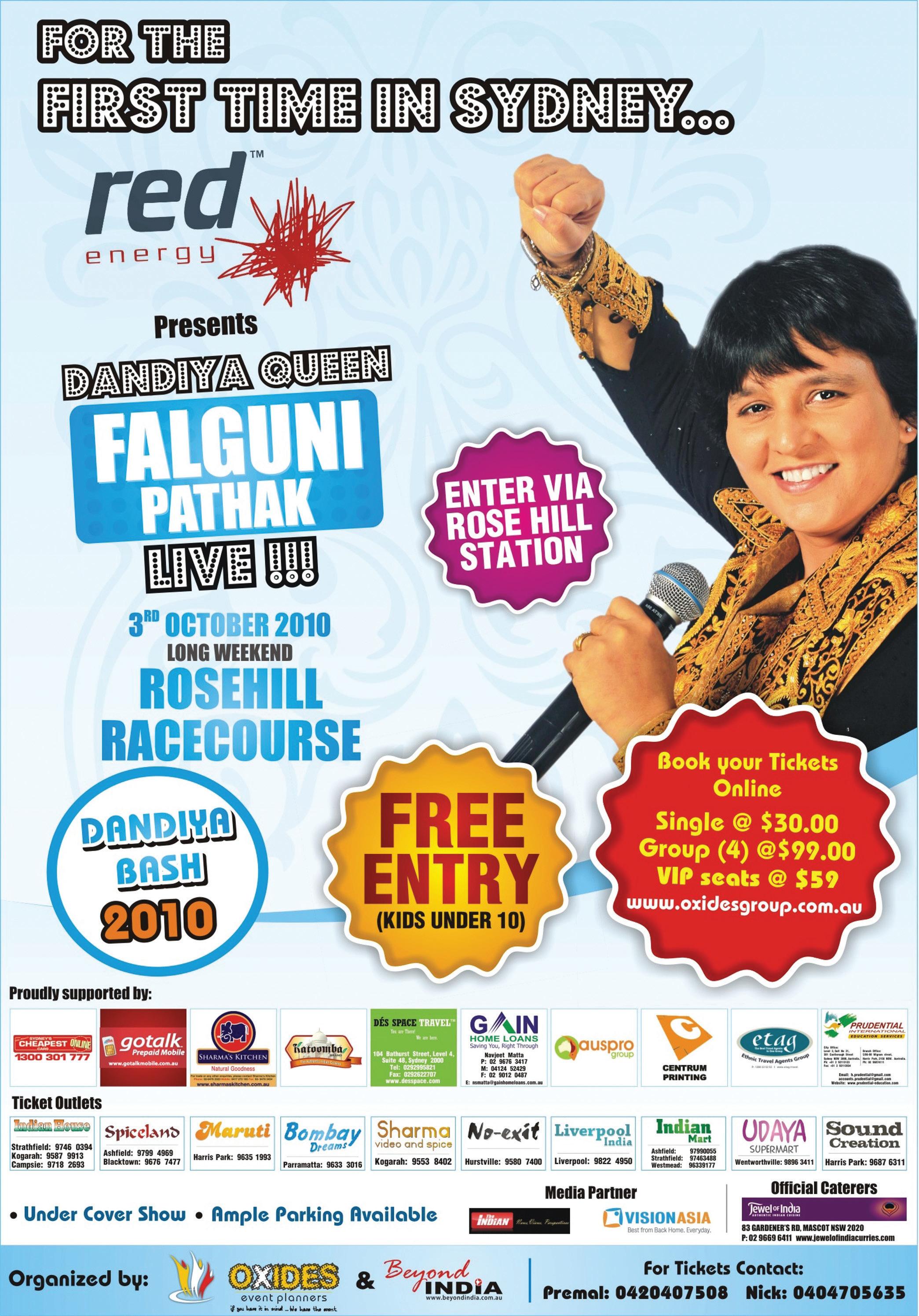
SEPTEMBER (1) 2010 <> 65 NATIONAL EDITION

66 <> SEPTEMBER (1) 2010 INDIAN LINK

SEPTEMBER (1) 2010 <> 67 NATIONAL EDITION




68 <> SEPTEMBER (1) 2010 INDIAN LINK Ladies! Are you ready to bare it all on the beach? Get your face, body & bikini ready with this amazing package: $148 of value You pay only $98 You’ll get these amazing treatments: • Leg wax valued at $20 • Full arms & Underarm wax valued at $20 • Bikini wax valued at $28 • 15 minute back massage valued at $15 • 10 minute shoulder massage valued at $15 • Facial valued at $45 • Delicious refreshments valued at $5 • All this for only $98 • You SAVE $50!!! BUT…..ONLY available for the first 17 Bookings! So book your appointment right now. You’ll be delighted, or it’s FREE!** “Tell us on same day if you are not delighted and we’ll redo your service for free” CALL NOW 02 9747 3575 Jolie Hair by Professionals 7/181 Burwood road, Burwood, 2134 www.joliesalon.com.au I always get excellent customer service, girls are great at Jolie’s and lookafter me very well. I highly recommend to everyone…Anna

SEPTEMBER (1) 2010 <> 69 NATIONAL EDITION
Brunei Just brilliant
 By THOMAS E KING
By THOMAS E KING
When historian Antonio Pigafetta, a senior crew member with Ferdinand Magellan during his first circumnavigation of the world, stood on a forested riverbank overlooking Kampong Ayer nearly 500 years ago, he proclaimed that the vast water village spread out before him was the Venice of the East. If Magellan and his men could return to the same spot in Bandar Seri Begawan, the tongue-twisting capital of Negara Brunei Darussalam, today they would still find homes of wood resting on riverwashed stilts.
A visit to the world’s largest water village, I discovered earlier this year, is indeed an eyeopening experience. Some 3000 dwellings have been built on sturdy pilings pounded into the Brunei River. These are home to about 20,000 people - about a third of the capital’s population - who live in mostly all-wood structures. Rustic though they may be they nonetheless benefit from basic services like running water and electricity. Most also have large and luxurious living areas accented with air conditioning, plasma televisions, internet access and colourful furnishings. That’s on the inside.
Some 3000 dwellings have been built on sturdy pilings pounded into the Brunei River. These are home to about 20,000 people
On the outside some residents take pride in home ownership and have painted their residences in bright colours and fronted them with boxes of blooming flowers. Others have left the forces of nature to ‘decorate’ the bare timbers.
While appearances widely differ, virtually everything nowadays is built on concrete stilt foundations and interconnected by a maze of timber paths and trestles. The walkways link homes with schools - complete with sports grounds - shops, medical clinics, police posts, mosques and restaurants. Virtually everything that can be found in the capital city opposite the water village is available … except an airport. As speed boats - locally known as water taxis - ‘fly’ passengers between the city jetty and the water village opposite or between various communities settled along the river bank, I reckon they didn’t need one!
Though Kampong Ayer was first seen by Europeans in 1521, the water village is much older than that with the first settlement of Brunei Malays on Borneo Island recorded between the second and four centuries. Chinese Buddhists and Hindus from India
followed. There’s solid evidence that Bruneian merchants were bartering with Chinese traders as early as the 6th century. (Early historians refer to Brunei as being “45 sailing days away from China”.) By the 15th century Kampong Ayer was an important commercial centre of Borneo.
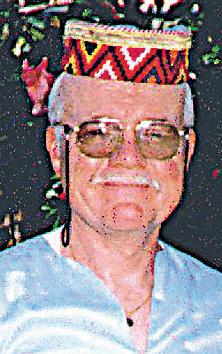
Situated on the north central coast of the island of Borneo - Asia’s largest islandbetween the Malaysian states of Sarawak to the west and Sabah to the east and north of the Indonesia province of Kalimantan, Brunei continues to be an economic powerhouse producing one commodity much in demand by the entire world. The tiny nation is an oil industry giant and one of the world’s largest exporters of liquefied natural gas.
In the 21st century, foreign and guest workers are the mainstay of the Bruneian labour force. Topping the list are skilled and semi skilled tradesmen coming from Malaysia. There is a sizeable Indian community however, as I encountered Indian tailors, barbers and, of course, cooks along Jalan Sultan, one of the main streets in the central city.
Several mornings I feasted on idli and dosa prepared by cooks who weren’t too busy to tell me about their life back in Chennai many years ago. The price was only a little more than I would have paid in the South Indian city but the taste was just as good.
Elsewhere when I went shopping for shoes, a female cashier took my Brunei Dollars (on par with Singapore Dollars) and thanked me in English spoken with a Filipino accent. I also encountered Chinese shopkeepers who spoke to fellow employees in various dialects but to visitors in English.
Brunei is both opulent and old fashioned. I had seen the latter during a leisurely stroll around Kampong Ayer as well as when I browsed through some of the older musty shops in the central city. For opulence I didn’t even have to look outside the CBD.
The most spectacular mosque is not built on stilts in the Brunei River though the glittering dome of the Sultan Omar Ali Saifuddien Mosque can be seen from many places in Kampong Ayer. Constructed in 1958, this striking sanctuary set in an artificial lagoon is located in the heart of the tidy but tiny capital on the northern side of the river.
Brunei is a devout - yet tolerant - Islamic country with much of the nation’s devotion centred on this very impressive gold tile domed mosque. Built of white Italian marble and dark granite, adorned with an interior mosaic made up of 3.3 million pieces of Venetian tiles and further graced with stained glass windows brought in from England, luxurious carpets flown in from Saudi Arabia and Belgium and massive chandeliers that shine like the sun,

70 <> SEPTEMBER (1) 2010 INDIAN LINK TRAVEL
With an impressive history and royal dynasty that dates back centuries, this exotic country combines old world charm with modern luxury
1 2
1. The Sultan Omar Ali Saifuddien Mosque is especially spectacular as the day’s last sun beams illuminate its golden dome
2. It’s smiles all around in Kampong Ayer whenever visitors come to be awed by the world’s largest water village

3. The Sultan of Brunei’s amazing residence can be photographed from vantage points along the winding river

4. Dedicated to the coronation of His Majesty, the Royal Regalia Museum contains ceremonial crowns and the royal chariot river

5. Speed boats called water taxis convey locals and visitors across the Brunei River to the mazelike Kampong Ayer

Photos: Thomas E. King
this place of quiet contemplation open to all is perhaps the most beautiful mosque I have ever seen. As I walked around the architectural masterpiece the dazzling combination of light, shadow, colour and shade made it appear as if it was from another world.
The mosque is named after the father of the current sovereign. Today, His Majesty Sultan Haji Hassanal Bolkiah Mu’izzadin Waddaulah ruler of one of the world’s oldest continuous royal dynasties. (His regal lineage can, in fact, be traced back to the 14th century.)
While many of the earlier sultans lived in Kampong Ayer, His Majesty, two wives and their children spend time in a 1788-room palatial palace perched on a hill overlooking the serene Brunei River. Rumoured to cost around US$350 million (A$388 million), the Istana Nurul Iman has a banquet hall seating up to 4000 guests. The general public can view selected portions of the palace and meet with His Majesty but only during Hari Raya Aidilfitri, the end of the fasting month of

The world’s largest residential palace, the planet’s biggest water village and an architecturally inspiring building are not the only stand-out attractions located in one of Asia’s smallest countries. Bandar Seri Begawan has yet another world-class enticement.
The Brunei Museum is a further mustsee lure because it superbly encapsulates the history and culture of the only sultanate in eastern Asia. While there are galleries devoted to the indigenous people of the area, a gem in this jewel of a museum is the astonishing collection of jewellery, ceramics, silverwork and weaponry gathered from across the Islamic world. This outstanding museum along with the numerous other unique attractions of the country I saw proved beyond doubt that Negara Brunei Darussalam (the abode of Peace) truly is a “Kingdom of Unexpected Treasures”.
Travel notebook
Brunei
FLIGHTS
Singapore Airlines has nearly 100 flights a week from five Australia cities - Sydney, Melbourne, Brisbane, Adelaide and Perth - to Singapore with convenient connections on five days a week to Bandar Seri Begawan. (SIA has four flights a day between Sydney and Singapore with the second A380 service commencing on October 31.) Call Singapore Airlines on 13 10 11. See www.singaporeair.com.au.
ACCOMMODATION
Located about 20 minutes outside the capital, the Empire Hotel & Country Club offers affordable gold-clad opulence with 423 lavish rooms and a mega infinity pool overlooking the South China Sea. The resort also features a signature Jack Nicklaus designed golf course. E-mail: res@theempirehotel. com. See www.theempirehotel.com
TRAVEL
Sunshine Borneo Tours can organise transfers and city tours as well as excursions to the superb Ulu Temburong National Park. See www.sunshineborneo. com
EXCURSION
Apart from its regal heritage, Brunei is an acknowledged ecotourism destination. The 50,000ha Ulu Temburong National Park abounds in wildlife including rare species like Sun bears and clouded leopards. The park is only accessible by water taxi. It’s an hour’s ride on the Brunei River from the capital to Bangar followed by a half hour coach ride to Batang Duri, the embarkation point for the cruise on the Temburong River. Sophisticated accommodation is available which enables visitors to undertake early morning and late evening escorted jungle walks through the pristine rainforest.
TIPS
Roving taxis are sparse but they are available on call from your hotel or near the bus terminus in the central city. Always negotiate the fare.
Avis and Hertz both have rental desks at the airport for those wanting to pilot their own self drive explorations.
INFORMATION:
Until a planned marketing representative office of the Brunei Tourism Board is set up in Australia log on to www.tourismbrunei.com
SEPTEMBER (1) 2010 <> 71 NATIONAL EDITION www.indianlink.com.au
3 4 5

72 <> SEPTEMBER (1) 2010 INDIAN LINK
“We always make our travel arrangements through Ram World Travel for its excellent service and best price!”
ONE STOP SHOP FOR:


* Competitive international airfares to all parts of the world

*Special airfares to Indian sub-continent
*Package and tailor made tours to India and Nepal
*Holiday packages to all parts of the world
*Round the World Airfares

*Hotel accommodation, car hire and guide services
*Travel Insurance
*DAILY DEPARTURE TOURS OF INDIA FROM: $975 P.P (ask for color brochure)
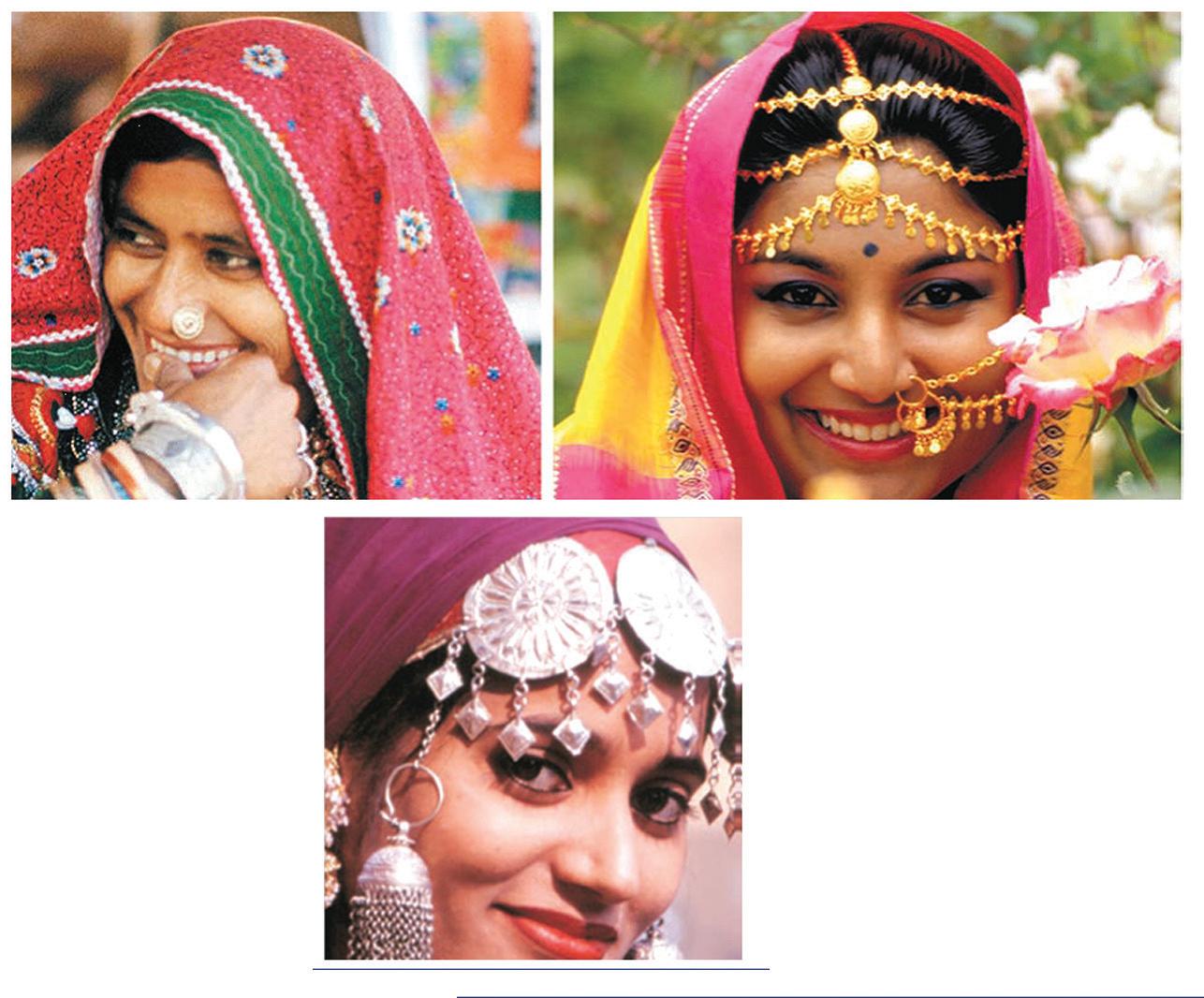

SEPTEMBER (1) 2010 <> 73 NATIONAL EDITION
York Street, Sydney, NSW 2000. Tel: (02) 9262 1661 Fax:(02) 9262 1217 Email: ram@ramworldtravel.com.au Web: www.ramworldtravel.com.au
5/32,
Finding real friends
A person can be highly popular on social networking sites, but how many real-time friends does one have?
 BY RITAM MITRA
BY RITAM MITRA


The rise of social networking phenomena in the past five years has been so unbelievably rapid, they are already making a movie about it. On August 26, the movie The Social Network was released here, exploring the amazing story of Mark Zuckerberg who, at 26 years of age, is the youngest billionaire in the world after starting up Facebook from his Harvard dorm room in February 2004. Fast forward to six years, and a staggering 9 million Australians are now on Facebook. MySpace may have dwindled in popularity over the past couple of years, but this is mainly due to the worldwide success of Facebook, while Bebo is generally favoured by the younger population. There seems to be an obsession amongst us to have a higher number of “friends” on these sites – admit it or not, you still get a little jolt of excitement when that really pretty girl in your class adds you as a “friend”, even though you’ve never talked to her. You still feel a sense of satisfaction knowing that you have more ‘friends’ than the guy everyone detests at work. Slowly but surely, the whole world is becoming more and
more connected each time you click that “confirm” button. But this raises a question: what impact does this have on our real-life interactions?
A study was conducted recently in the UK, surveying over 16,000 MySpace users between the ages of 14-21. 36% of respondents found it easier to talk to people online, while a whopping 72% said they felt “left out” and didn’t think they fit into any particular group outside a social networking site. Even more staggeringly, more than four-fifths (82%) of the respondents said they moved between four or more different groups of friends in order to find acceptance.
There is thus a rising concern over the impact of social networking sites on our interaction with reallife people, especially with respect to Gen Y. Will the younger generations end up remaining awkward and shy in real life, while finding solace in the comfort of their online identities? Or does the presence of social networking sites allow a less personal outlet for their feelings as they come to grips with the adult world, and soften the blow of the harsh interactions they deal with when
growing up in the real world?
Every one of us, including this writer, has been guilty at some point, of letting technology supersede our real life interactions. How often have you texted constantly, or spent time on the phone, or even changed your Facebook status while in the presence of mates? While it may be acceptable behaviour to us, have we ever considered that it is a pretext for telling our friends their company isn’t good enough?
Balance is the key; while online interactions allow us privacy, comfort, as well as the freedom to be anyone we want to be as an escape from today’s fast-paced world, online relationships can never replace real-life ones. As humans, we inherently search for connection, and although the internet provides us with an amazing adventure of possibilities, the connections we make with other people online have been and will forever be, superficial. We will always need to come back to the real world.
So by all means, go and watch The Social Network to gain a better grasp on the context in which the social networking phenomena arose. In the meantime, here is a challenge: it’s one that most of us will find impossible. It’s one that some of us may find difficult. But there will be only one or two of us that will be able to say with confidence that they can do it: Track down every “friend” you have on each and every one of your social networking accounts, and ask them out for a coffee, a drink, or meet up with them in any form that takes your fancy. So now, what’s your friend count?
RELATIONSHIPS www.indianlink.com.au
Will the younger generations end up remaining awkward and shy in real life, while finding solace in the comfort of their online identities?



SEPTEMBER (1) 2010 <> 75 NATIONAL EDITION
Rice is nice
A staple in most global cuisines, this nourishing grain lends itself to a variety of exciting recipes
BY CANDICE H
Prawn Pulao
350 gms fresh prawns
1 ½ cup washed basmati rice
1 large onion, finely chopped
1 large tomato, finely chopped
2 green chillies, chopped fine
1 pod garlic, chopped
1 tbsp grated ginger
½ cup fish/veg stock
½ tsp turmeric powder
½ tsp chilli powder (optional, for more spice)
4 cardamom pods
6-8 cloves
6-8 peppercorns
1-2 medium sticks cinnamon
1-2 medium size bay leaves
2 tbsp cooking oil
Wash, shell and de-vein prawns; coat lightly with turmeric powder and keep aside. Add oil to a deep-bottomed saucepan on medium heat. Add the cardamom pods, cloves, peppercorns, bay leaves, cinnamon sticks and fly until peppercorns pop. Next add the onion, chillies, garlic and ginger, and fry for about two minutes. Add tomato and fry on low flame for five minutes until the tomato is soft. Add prawns and fry for a minute. Add rice and fry for two minutes, until rice is completely coated with the mix. Next, add fish/veg stock and stir well. Finally, add enough water to cover the rice by about half an inch. Stir well once, then close the saucepan and cook on a low flame till the rice is done. Serve hot, garnished with chopped coriander.
Green Vegetable Rice
2 cups basmati rice, soak for ½ hr
1 bunch of coriander leaves
1 tsp cumin seeds
¼ tsp turmeric
1-inch piece ginger
3 pods of garlic
2 green chillies
3 cardamom
1-inch piece cinnamon
3 cloves
1 onion, finely cut
2 carrots cut into thick strips
15-20 green beans, cut into large pieces
8 medium sized cauliflower florets
¼ cabbage cut into thick cubes
½ cup green peas
4 cups water
2 tbsp oil
Salt to taste
Grind together the coriander, cumin, ginger, garlic and chillies, until they form a fine paste. Keep aside.
Heat oil in a pan, add cinnamon and cloves. Next add onions and fry till soft. Add the ground masala paste and fry well. Add the veggies and stir fry for two minutes. Finally, add the rice and water and bring to a boil. Lower the flame to simmer and cook covered until the rice is done. Serve hot with a tomato raita
Oven cooked lamb pulao
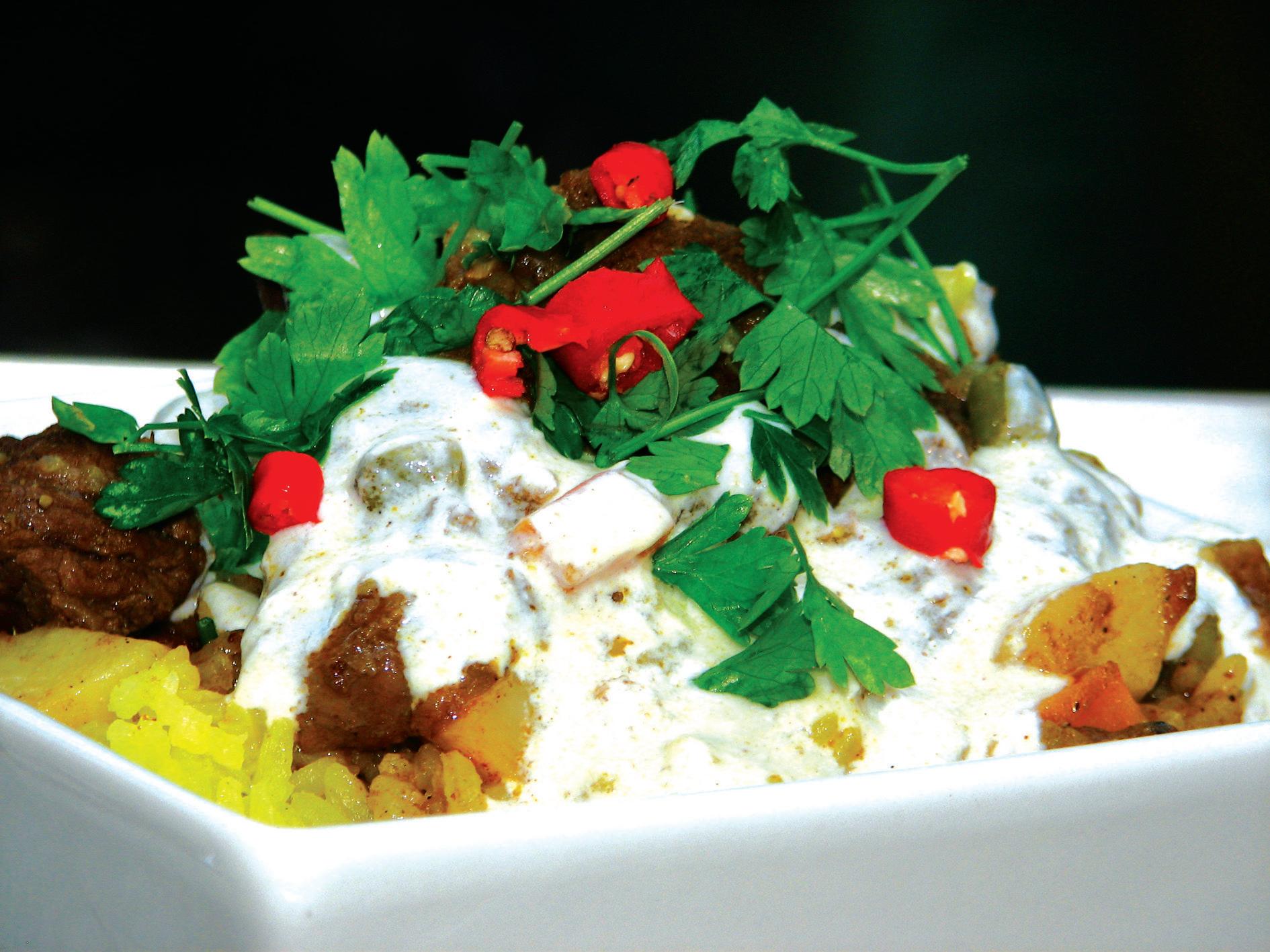
800 gm lamb (mutton or chicken can also be used)
2 cups basmati rice
2 large onions, finely sliced
300 gm peeled and chopped tomatoes
100 gm sultanas
1 tbsp ginger/garlic paste
2 cups water
2 tbsp ghee
Grind to a powder:
3 cardamom pods
1 tsp black peppercorns
1 bay leave
1 medium stick cinnamon
Sea salt
Pinch of mace
Pinch of nutmeg
2 tbsp whole coriander seeds
2 tbsp whole cumin seeds
Singapore Fried Rice
200 gms cooked rice
25 gms carrots cubed
25 gms cabbage cubed
1 tsp turmeric powder
3-4 spring onion greens finely chopped
Salt and pepper to taste
3 tbsp oil
1 tbsp chilly sauce
1 tbsp soy sauce
Heat the oil in a wok till hot. Add carrots, cabbage and cook for two minutes. Next, add salt, pepper, chilli sauce, soy sauce and turmeric and mix well, until the vegetables are fully coated with the sauces. Add the boiled rice and mix thoroughly, finally adding the spring onion greens. Stir for another
1 tbsp turmeric 5 cloves
2-4 dried red chillies
Wash the rice thoroughly and soak in water for about 2 hours. The rice must be soaked or it will not cook properly. Grind the peppercorns, whole coriander and cumin, cardamom, cloves, bay leaves, red chillies, sea salt, nutmeg and cinnamon together, to form a fragrant powder. Cut the meat into roughly even cubes, coating with salt and pepper. Keep aside. In a heavy bottomed saucepan with no plastic parts, heat the ghee and add onions and ginger/garlic paste and fry for about 5-7 minutes until the onions are soft and fragrant. Add the ground
minute, then take off the fire and serve hot.
Khara Pongal

1 cup moong dal
1 cup rice
3 to 3 ½ cups water
10-12 cashew nuts
1 tsp each cumin seeds and pepper powder
½ tsp turmeric powder
2 tbsp dessicated coconut
½ tbsp mustard seeds
2 green chopped chillies
5 curry leaves
2 tbsp oil
1 tbsp ghee
Wash the moong dal and rice, and roast in the pressure cooker with the ghee for
spice mix and cook for 2 minutes. Next, add the lamb and cook until the meat is well coated, stirring at frequent intervals. Add the tomatoes and cook for 2 minutes. Next, add the water and cook on high flame until the mixture is boiling. Drain the soaked rice and add to the mixture. Stir well. Heat oven to 180 degrees. Take the mixture off the stove, cover the top with double aluminium foil and cover with lid to seal as tightly as possible. Cook in the oven for about 40 minutes. (Can be cooked on very low heat on your gas stove too). When done, mix gently and serve hot, garnished with chopped mint and/or pan-fried almond slivers. Cucumber raita can accompany this dish.
about a minute. Add water, turmeric and salt, close the pressure cooker and cook on medium flame until three whistles. After the rice is done, heat the oil in a separate pan and fry the cashew nuts until golden brown. Keep aside. Next, add the mustard seeds and cumin seeds. When the mustard seeds start to crackle, add green chillies and curry leaves and fry for a few seconds. Next, add the dry coconut and pepper powder. Open the pressure cooker and add the rice and dal mixture to the pan. Stir thoroughly until the rice is fully mixed with the oil and spices. Lastly, add the cashew nuts and mix well. Serve hot, with a sprinkling of farsan or sev. (Note: this dish must be prepared and served immediately, before the mixture solidifies.)
76 <> SEPTEMBER (1) 2010 INDIAN LINK FOOD
www.indianlink.com.au








SEPTEMBER (1) 2010 <> 77 NATIONAL EDITION Indian Link Radio 24/7 Subscribe to Indian Link Radio for $9.95 each month. 24 hours, 7 days Indian Link Radio Minimum 12 months subcription, $50.00 refundable deposit One paper - five editions SYDNEY/CANBERRAMELBOURNE ADELAIDEPERTHBRISBANE/GOLDCOAST For details call






78 <> SEPTEMBER (1) 2010 INDIAN LINK TEMPLE OPENING HOURS: TUESDAY: 5 - 7.30 PM SATURDAY: 11 – 4 PM SUNDAY: 11 – 4 PM 11A, 7 HOYLE AV, CASTLE HILL 2154 www.ezyworldtravel.com *Conditions apply subject to availibility at the time of booking. INDIA FROM $1095* INCLUDING TAXES License No: 2TA07303 MOST COMPETITIVE PRICES, BETTER THEN THE REST
Masters, followers and truths
BY RANI JHALA
Five years ago Niki began her research on cults, religious organizations and spiritual heads, and their relevance to our present century. It took her over three years to travel the globe and interview hundreds and hundreds of people. She inked thousands of pages and punched millions of keys before she handed in her end product. By then her document had changed in subject matter and direction. She titled it Masters, Followers and Truths.
The day she handed in her project papers, Niki also said goodbye to blind faith or devotion to any man or woman who represented her God. As she had conducted case study after case study, she realised her truth lay in a different direction. It had not mattered which religion she looked at, there it was – abuse!
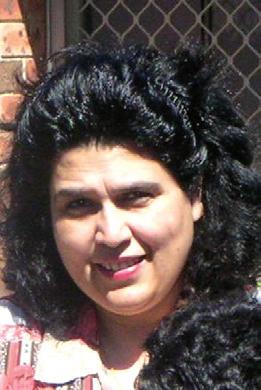
Caning was common, beatings even more so. Heartbroken, Niki learnt that even today, children are shackled until they learn their religious doctrines. Food was a reward for learning, instead of being the natural right of a child to nourishment. Infants were terrorised to enforce obedience. And most of all, sexual abuse of minors by religious heads was rampant in all faiths. Silence was either enforced by fear or bought with compensation.
The one common factor was that every religion punished with ostracism, those that dared to question
Niki remembered the first person she spoke to, and gave her the pseudo name of ‘Alpha’. Alpha was childless and desperate for a family. Seeking a spiritual solution she landed in a spiritualist centre reputed to be a haven for the unfulfilled. It beckoned the hopeful with promise of miracles and lured the seeker with serenity and peace. Only Alpha knew how the miracle was achieved. Drugged and raped she returned to fulfill her family’s expectations, and months later handed over her first born into the arms of her husband.
Each day she lived in fear and her trauma was misunderstood for ‘post natal depression’. When a year later a car accident took her husband and baby from her she wept in sorrow, but she also sighed with relief. It took her years to overcome the horror and now, as a release from that pain, she now runs a refuge for women in similar situations.
At that refuge Niki met two sisters. The elder had been raped by another ‘representative’. She had
evidence’. The price they paid for their courage was the shame they were made to suffer.
Beta was seven when the police rescued him from a farm. Twenty children were found shackled together in what was a regular form of punishment. If even one child made an error in reciting the verses of ‘the book’, all of them received the cane and then they were shackled together in a darkened room until they became phrase-perfect. Their parents had been refused temporary access to the children in the name of spiritual growth. It was lucky that one parent sensed something wrong and contacted the authorities.
Gamma was a child molested by a priest. He confirmed from his conversations with other children, that abuse of boys and girls both physically and sexually was still prevalent. Compensation mounted to heavy costs, and was paid for from donations collected. Gamma too received his monetary compensation, but still wonders how it will erase the horror of his suffering. Now an adult, he has given up on institutionalised religions.
In between Gamma and Niki’s last case, she met literally hundreds who had also suffered in the name
of religion – pinched ears for whispering prayers instead of proclaiming them loudly; scraped knees from hours of crawling in an attempt to compel obedience; shaved heads as an act of penance; scarred backs from the lash of ropes. Children with blackened eyes from the back hand of an angry priest; hundreds of pages repeating the words ‘I have sinned’ written in the hand of a five year old, and millions accepted in the form of donations. The one common factor was that every religion punished with ostracism, those that dared to question.
Niki’s last case study was Omega. Born into a spiritual family, he had been promised to the institution by his devout parents. From birth he attended prayers and was kept from associating with local children. By the age of nine he had mastered a quarter of the family’s holy book. Then as a teenager, he was drawn to music and excelled in it. But when the music commitments clashed with his religious obligations, he was told to give up music. For a while he continued to teach himself through books and tapes, until he was caught with them. That day he was asked to choose between his religion and his music. He left his little town and moved to the city where he lived with his aunt. He took with him his God, along with his talent in music.
As a child Niki had read books like Jane Eyre and Oliver Twist, and put them away as works of fiction. But here, amidst her notes and taped recordings, she was disheartened to admit that every form of abuse still existed and no country in the world was immune to its grip.
Niki ended her report with the following recommendation: ‘There should be no need for any ‘spiritual leader’ to be alone with their followers. Confessions can be heard in glassed cubicles; prayers can be taught in open rooms; healing can be done with people present; miracles can be performed in public view.’

At the end of her personal journey, Niki found that her own beliefs had remained unchanged. Her ‘God’ still resided in His exalted position; it is only the power of His representatives that had now come into question. Between Alpha (the beginning) and Omega (the end), Niki also found her truth –that her conscience was her only true guide. It is the friend who could show her right from wrong. It is an angel who would lead her on the true path. It is the contact between her and the divine. All any religion should ever ask of her, is to surrender to its silence and listen.

SEPTEMBER (1) 2010 <> 79 NATIONAL EDITION
FICTION www.indianlink.com.au
A seeker of truth discovers that representatives of religion have the power to use and abuse its divinity to fulfill their individually distorted needs
Her ‘God’ still resided in His exalted position; it is only the power of His representatives that had now come into question
Please call Mr Levy 1800 066 006
Australian business man expanding operations throughout India, seeks 5 key business partners to assist in the establishment of wellness centres

80 <> SEPTEMBER (1) 2010 INDIAN LINK Eid Mubarak $149 Installation Special
ARIES March 21–April 20
You seem to have been delaying a decision and now are likely to experience difficulties in a relationship due to interference and mental rifts. Tarot represents division, depression and separation. You are not passing through an easy time. You need to sort out your problems and not be let down by any delays. You should try to be strong and face life as it comes. Health and friendships might be affected.
TAURUS April 21–May 21
Tarot indicates that your circumstances are likely to improve. Your work situation is going to be congenial, yet at the same time new projects may take time to materialise, so watch out against being over anxious. You are likely to face an important decision linked to finances. In a relationship reading, Tarot signifies a decision regarding a new stage in a relationship that may require spending of some money.

GEMINI May 22–June 23
Tarot says you will receive positive news that will cheer you up. It is time to start a new project or travel, which takes you in a new direction. There could also be assistance from a young person or a faithful friend during a difficult time. You may receive news from people you seldom see. You may also have flashes of inspiration and creativity, which could bring you success. The card for you represents faithfulness, a postman, a messenger, a lover and stability.
CANCER June 23–July 22

Tarot indicates the inevitability of change. Certain events in your life may be unexpected, but it’s important that you remain optimistic. The changes at home or in relationships are likely to be for the best. You need to leave behind old beliefs and values which no longer support you and adopt a newer approach n life, in order to progress ahead. You will benefit by accepting the fact that old forms collapse and give way to new forms, for the better.
LEO July 23–August 23
The card drawn for you indicates nostalgia as well as change. You may feel nostalgic about your childhood. There is also a focus on a new environment and the adaptability linked to it all. You are able to progress due to your endeavours. Yet you may find life filled with habits and patterns. Perhaps it is time to procure new employment. You are likely to find yourself in a caring vocation, such as those related to children - teaching, nursing or counseling.
VIRGO August 24–September 22
You will achieve clarity on what you really desire, and inner strength to achieve the same. Domestic changes are likely to take place. You may find yourself thinking about moving on in life towards a new setting. You desire to explore new opportunities for fulfilment. Perhaps it all refers to a search for a deeper commitment within your present relationship. It could also mean spending time in meditation or in some sort of study.
LIBRA September 23 – October 23
This month your focus is going to be on negotiations. You will be required to make a choice between two alternatives. It is important that you come to terms with any emotional issue before taking a decision. It will be beneficial for you to face facts, understand the depth of the situation and then decide on your future line of action. All rifts would be resolved with a proper focus, leading to earning love and respect.
SCORPIO October 24–November 22
The present time is likely to bring with it challenges of a financial nature. It is important for you to be careful of any opportunities that come your way, so as not to miss any options for advancement. You may find your work to be uninteresting. You may feel lonely and low at this point of time. Tarot indicates spiritual emptiness as a biproduct of not being flexible or adaptable towards change. The lesson for you is to be open to change from within.
SAGITTARIUS November 23–December 21
There is a focus on strength in opposition. Suspension of events is indicated. This period of delay should be used productively to reassess the line of action in the future. Tarot advises you to finish incomplete projects in your life. You have perhaps been hurt by your partner or are yet to come to terms with your past relationships, and in turn are not able to commit yourself fully to the present one. Over caution is likely to hamper the growth of your relationship.



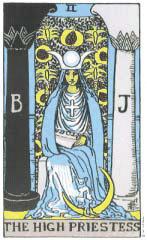






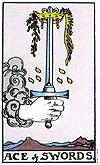

CAPRICORN December 22–January 19
Your focus is likely to be on matters related to family and relationships. You will encounter a friendly and loving person who is not only popular in company, but also clever in business and works with drive and enthusiasm. This person is likely to bring you success in business. You are advised to adopt such qualities yourself. You are likely to achieve success through inner-strength. Tarot suggests a good business proposal. Anything to do with property or security is well favoured.
AQUARIUS January 20–February 18
Tarot foresees focus on relationships. On a personal level it is a good time for romance and compatibility. Tarot indicates harmony, romance, peace, concord and prosperity. Gatherings will be happy and congenial. Monetary success is suggested. Purchase of property can be contemplated. Tarot indicates a quiet time spent with friends and family in a favourite place. It is a time when you are successful in feeling at home in a relatively new situation.
PISCES February 19–March 20
The card for you indicates that it is imperative that you spend some time to ponder on what is important at this point of time in your life. Prioritise things and rather than trying to do everything by yourself, delegate a few responsibilities to others in order to achieve better results. On a brighter note, you are likely to be good in handling money. It may prove beneficial for you to use home as your base for work.
SEPTEMBER (1) 2010 <> 81 NATIONAL EDITION
Tarot predictions for February 2010 Tarot ‘n’ You Tarot ‘n’ You Tarot predictions for September 2010 Tarot ‘n’ You Tarot ‘n’ You STARSFORETELL www.indianlink.com.au Liquor Business for Sale • Sydney Western Area • Weekly Turnover $18,000 + • Outstanding Opportunity • Great profit margin • High Density Residential Area • Ample Parking • 3+5+5 Years Lease • Asking $ 350,000+ STOCK Contact on 0403 493 824 Spice Shop for Sale in Toongabbie Goodwill . + Stock $ 65+80 K Pl. call on 0421456743 96883982
Matrimonials
SEEKING BRIDES
Gursikh male 25 years Physiotherapist, Australian citizen of Sydney, 6 feet, slim, healthy, happy life style of Khatri background but with an open mind seeks 20-24 years, good natured, healthy, honest match. Truthful replies only to greenkochia@gmail.com
Match for Punjabi Sarswat Brahmin male, March 1978 born, 5’6”, fair, handsome, fit build, Indian born, Australian educated, well settled here for 14 years. Blend of Indian and Western culture, working in reputed global company, good position . Family well settled in Chandigarh/ Canada, own properties. Prefer girl already in Australia, professionally qualified, caste no bar. ausmatrimony2010@hotmail.com
Australian citizen, Gujarati/Patel boy, age 29 years, divorced within 3 months of marriage, IT professional with permanent job, seeks Indian girl. Student/work visa holder welcome. Call Kesh/Sarla Patel (parents) on 02 9896-2248 / 0401 548 194 or e-mail patelkes@gmail.com
Australian citizen Aggarwal/ Punjabi Hindu boy, 5’8” tall 39 years old (looks 30), divorced, very good looking, pleasant personality, generous, eggetarian, very good in reputed job. Seeks good looking, caring, sincere and family oriented girl with GSOH and DTE. Issueless divorcee or widow also accepted. Contact with full bio-data and photo to : yankee1_2009@hotmail.com
Seeking a suitable bride for Australian citizen (South-Indian vegetarian with clean habits) working in IT industry in Sydney, mid-40s, caring, loving in nature. Looking for bride with similar qualities and habits. Contact for further discussion indoaussie@hotmail.co.uk, ksg667@yahoo. com
Seeking a bride for a divorced Iyer boy (no issues), Srivatsa Gothram, Revathy Nakshatram, aged 29. Boy is an Australian citizen and currently working as an executive for an Australian company in Manila. Parents are doctors and settled in Chennai. Sister is married and settled in Sydney. Please contact Jayasree on 0433 032 146 or email jgopal77@yahoo.com for any further details or enquiries.
Match for 30-year-old, 6’ Hindu boy, 23 years in Australia, IT professional, family oriented, friendly, caring and sincere personality. Contact with biodata and recent photograph to matrim_2010@yahoo.com.au
Australian citizen, university educated, government profession, mid 40s,
seeking honest Indian / Fiji Indian lady for marriage. Reply Tamavu@hotmail.com or call mobile 0404 263 400.
Seeking a good looking, caring, sincere and family oriented, responsible girl for Melbourne resident Arora boy. Permanent Resident, October 1971, 5’7”, handsome, fair colour, spiritual/open minded. Caste no bar. Please respond with photo, education and professional details to email: sndpsachdeva@yahoo.com, M: 04 3224 9651
Seeking alliance for 40-year-old handsome guy, RC, N/S, N/D, DTE, 5’10”, divorced, marriage annulled, no kids. Girl should be family-oriented, good looking, with good family values. Caste no bar. Kindly email with photo to: cheerfulguy14@yahoo. com.au
Seeking a Gujarati girl with good family values, for my son, 35, divorced since 3 years, no children, tax consultant, fair, 5’8”, non-smoker, light drinks, eggetarian, living in Sydney since 18 years. Contact 0402 416 353 or hp11869@hotmail.com.
SEEKING GROOMS
North Indian Punjabi family seeking professional, well settled match for 29/152 cm very fair, charming daughter working in IT, innocent divorcee. Family well settled in Australia. Please respond with details and photo to Sydney81@live.com.au 34 years, 5’7”
Post Graduate diploma in Advertising holding PR visa. Looking for welleducated boy of well settled and educated family with liberal and supportive values. She is sensitive and considerate to elders, warm and nurturing to all. She loves to socialize, going out for movies. Has a drive and wishes to be working professionally with healthy balance between family and work. Two elder sisters married and well settled - one in Sydney and one in London. Father is currently working, as General Manager in a leading Consulting Engineering Co in Saudi Arabia. Please email profile and photo to smk3005@hotmail.com
Seeking match for Sikh, 24 year old, 5’6”, very beautiful girl, born and raised in Sydney with Indian values. She has done Bachelors and Masters in Commerce from UNSW - and successfully working now in a top prestigious firm. Please send photo and details to matrimony6789@gmail.com
Seeking match for Punjabi Ramgarhia, beautiful, slim, young looking, 32-year-old girl, with Permanent Residency of Australia. The preference is for a teetotaller, good
KNOW THYSELF AS SOUL
Sant Mat is a practical spiritual path based on meditation, ethical living, service to others & love for all creation. Its goal is to enable the soul to return & merge into its source; the purpose of human life described by mystics of all traditions. Discipline & dedication are essential, as is the help of a competent living master. Entry is via a preparation program. There is no charge at any stage.
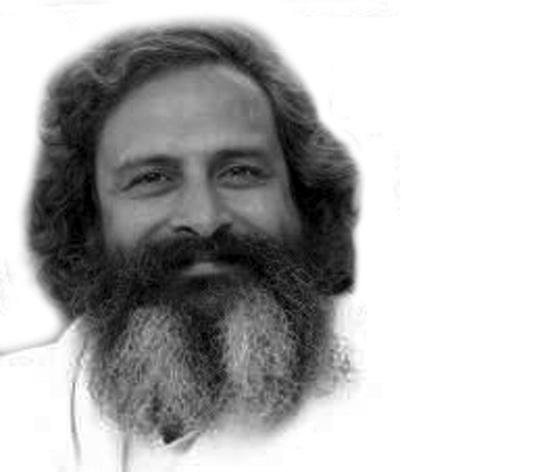
For more information...
Contact Sita 0408 880 155 www.santmat.net.au
natured (age 28-34) well settled, sikh boy. Email the biodata: parampreet_dp@yahoo. com for further proceeding.
Professional match sought for South Indian brahmin girl, born and educated in Australia. 36 years, 5’4” B.E. Masters in Social Science, well employed, vegetarian, slim and fair. Family well settled in Australia. Please reply with details to Email: dashami2010@gmail.com
Seeking a suitable match for Hindu/ Punjabi girl, 28 years (Aust citizen), 5’8”, never married and working in Sydney. Seeking a simple, broadminded and family oriented person, preferably settled in Sydney, caste no bar. Send details and recent photo at madhumarch@hotmail.com; or mob 0421566715.
Alliance invited for a highly educated Jat Sikh girl, Australian citizen, Sydney based, permanent job in accounting, reputed family 28 years. Fair, slim with traditional values. Looking for an Australian citizen or PR, clean shaven, well educated and well settled boy from a decent Jat Sikh family. Please contact with bio data and photo via email address provided below. replyus2010@ gmail.com.
Alliance invited from professionals for Kannada Brahmin girl, 43 years, 5 ’4” B.E., MBA (Melbourne Uni), vegetarian, slim and fair. Married briefly and divorced with no children. Well employed and settled in Australia. Please reply with details to Email: raosn@bigpond.com
Seeking match for Hindu Khatri fair and slim girl, 24, 5’0”, currently in Canberra on visit. Well qualified, well mannered with modren outlook and traditional values. Brother well settled in Australia. Please respond with your biodata to email sanjog456@gmail.com
Wanted well-qualified, handsome, fair Punjabi Hindu boy, well-settled in Sydney, PR holder/Australian citizen for a Punjabi Hindu girl, extremely beautiful, slim, very fair, 32 years, 5-3”, MBA (Australia), Australian citizen and a professional belonging to a high status, very well qualified business class family. The girl is an innocent divorcee following a brief marriage. She is very loving, homely, caring, intelligent and bubbly with a perfect blend of traditional and modern values. She is born and brought up in India. We are a God fearing, very well respected, down to earth and sober family with a positive outlook towards life. Similar profiles preferred. Please send full profile with latest photos to email id: to.sweet@ hotmail.com or contact on 0451 589 389
Family seeking suitable match for an attractive, 23 year old, 5’ 2’’ tall, slim built, North Indian girl with strong values. She is highly intelligent and is a tax consultant at a high profile firm in Sydney. The preference is for a suitably employed, well settled boy (age: 25-27), brought up in Australia, USA or England. Please send biodata and a recent photograph to OZ7654@gmail.com.
Seeking a suitable match for goldsmith girl, 32, (applied regional residency), 5’2”,working full time in community welfare. Seeking match with broadminded personality, preferably in Australia. Caste no bar. Contact kaur_m13@yahoo.com
0011-91-99887-49191, 0011-91-85250-1746
Seeking professionally qualified/wellsettled match for 39/165, never married, fair, slim, beautiful Punjabi girl, family oriented and responsible. Engineer working in Sydney, Australian citizen. Early marriage. Can relocate. Parents well-settled in India. Caste no bar. Email with photo: sydgirl09@ gmail.com
Seeking match for 28/158cm, fair, beautiful, intelligent, Australian citizen girl, from a respectable Hindu family with good professional job. Boy must be 29-32, professionally qualified, well settled, openminded, non-smoker with strong family values. Please email profile and photo to sydney_girl2010@hotmail.com
Punjabi Arora parents invite never married well-settled/professional match for fair, slim, attractive, 37/165, IT professional with strong family values. Never married. Settled in Sydney. Australian citizen. Status family. Caste no bar. Early marriage. Email with photo: ausgirl101@gmail.com
Match for Punjabi Saraswat Brahmin Vishisht Gotra, Manglik girl, MA B.Ed, DOB 29-3-1977, 5-20 pm, Deolali (Maharashatra). Applied residency in Australia, 5’-2”, prefer Australian boy. Call +91 9888 970 986 or email nsharma0786@ yahoo.com.
Parents of Sikh Khatri girl invite alliance for their beautiful, slim daughter, 30 /5’-1”, Australian citizen, never married. Currently working in Sydney as Analyst with one of the large banks. Family settled in Sydney. Seeking professional, well-educated match with good family background. Caste no bar. Contact: 02 8807 4258 or email:schadha06@yahoo.com
Petrol Station for Sale
Franchise
82 <> SEPTEMBER (1) 2010 INDIAN LINK
Know Thyself As Soul Foundation is a not for proft association incorporated in NSW
Petrol Station with 2bay Mech. Garage attached In Campbelltown, within a residential area No competition in close proximity Huge potential, Long Lease Close to shopping centre and school, on a busy street Goodwill $170K
training provided, Full financials available Serious buyers only Pl. call on 0402 009
Full
575

SEPTEMBER (1) 2010 <> 83 NATIONAL EDITION
BUZZ
work in India: Anil Kapoor
For the first time, Indian television has been screening the popular American show 24. But it’s no surprise, given that apna Anil Kapoor has a major role in it this season!
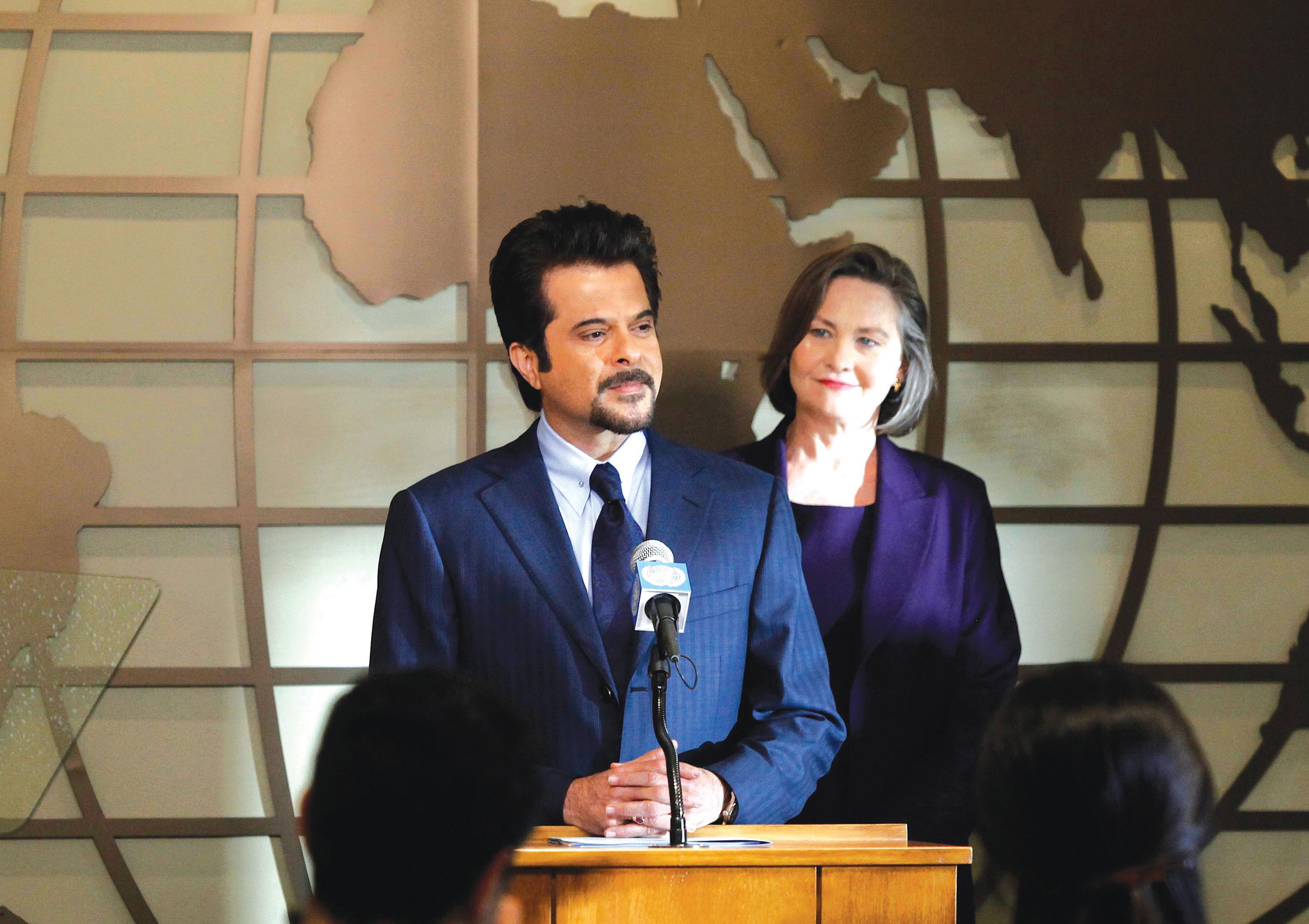


And no one is more thrilled than Anil himself about it. He describes the action drama as “bigger than the biggest” he has done in India.
“For example, the scale of every episode was bigger than any of the films I’ve done in the past. The entire series is worth $125-150 million. I’ve never done such a big show in my career. It was totally very special,” added the 50-year-old.
Based in New York (shot in Los Angeles), the
Konkana–Ranvir take the plunge
Actress Konkona Sen Sharma has tied the knot with long-time boyfriend Ranvir Shorey. “Hey guys. Ranvir and I got married on the 3rd (September). Thanks for all the good wishes! Konkona, 30, posted on her microblogging page Twitter.
The couple, who got engaged in 2008, and have been living together since, reportedly exchanged wedding vows in an intimate ceremony at their Goregoan residence in Mumbai.
The wedding ceremony was an interesting blend of Bengali and Punjabi traditions. While Ranvir, 38, was dressed as a Punjabi groom, Konkona looked resplendent in her grandmother’s traditional Bengali jewellery, which surely would have made mama Aparna Sen proud. Ranvir tried to put up a tough match in his traditional shervani, decked in
around-$150 million 24 is an action-drama series starring Kiefer Sutherland in the lead as special agent Jack Bauer. The show is presented in the semblance of real time, with each 24-episode season covering 24 hours in the life of Bauer. This is the eighth and final season of the show.
Anil plays Omar Hassan, president of a fictional Islamic Republic of Kamistan (IRK), who visits the US on a peace mission to meet the US president.
“I was in LA for six months for the show, but kept travelling between India and the US. I was also shooting the Hindi film No Problem in India and South Africa. So in between I shot two schedules
flowers from head to toe. Apparently, Ranvir clearly stood out amongst all the baaraatis, looking smashing.
Meanwhile, the reticent Konkona remained indoors through most of the ceremony with very close family and friends, strictly avoiding the media glare. Strangely, few Bollywoodwaalahs were present, but for Koel Purie, Fardeen Khan and Shilpa Shetty. Fardeen and Shilpa were gracious enough to come out and pose for the Press, after completing the marriage rituals. But Konkona and Ranvir chose not to do so.
Konkona, daughter of Bengali filmmaker and actress Aparna Sen, is known for her roles in Mr & Mrs Iyer, Page 3, Life... In A Metro and Wake Up Sid while Ranvir made his mark with films like Honeymoon Travels Pvt Ltd, Khosla Ka Ghosla, Pyaar Ke Side Effects and Mixed Doubles
As soon as the National Award
of the film too,” he said.
So Bollywood hasn’t taken a back seat? “No. I can’t forget my roots. I am what I am because of that. I have moved on but I’ll keep on doing Hindi films,” he said.
Anil revealed he is currently in talks with for three other non-Indian productions (with Sophia Loren’s son, with Ben Stiller and with Fox Television).
Anil’s future projects in India include sequels to Race, No Entry, and Mr. India

For now though, he is waiting to learn the reaction of his Indian fans to his performance on 24.
winning actress confirmed her marriage, congratulatory messages started coming in on the microblogging site.
Genelia D’Souza wrote, “Congratulations Konkona, lots of love and happiness to a new life.”
Shabana Azmi said, “Congratulations both
of you - bahut saara pyar (lots of love).” Karan Johar chimed in with “...huge congratulations!!! The best years ahead!!” And the groom tweeted back, “The best wish/advice I’ve received on marriage so far: ‘Congratulations! Don’t do it again’”. Though the ceremonies happened indoors,
?GUESS WHO
Identify these two golden oldies from the 1960s and ‘70s
84 <> SEPTEMBER (1) 2010 INDIAN LINK
ENTERTAINMENT
The
the
(Find
answer under Caption Contest)
Anil Kapoor in 24
some media reports learnt later that the couple was seen rushing off to an unknown destination for their reception. Konkona and Ranvir have always been very low profile people and they are not likely to ever change.

Actually, they might have had to change; at receptions, you’re expected to wear different clothes you see!
Preity Zinta: Busy little bird
She’s always been a chirpy personality. And even though this dimple-faced Simla beauty hasn’t done much work lately, she continues to tweet-tweet away like the typical busybody. Poor Preity Zinta. See, she doesn’t have much else to do, except twitter regularly. Here are some of her posts:
After a meeting with tennis ace
Serena Williams: “At Dinner with Serena Williams! She is absolutely wonderful and full of life. Love her style :-) Must confess, I am a huge fan! It takes a lot to be No.1”.
After the opening bell of NASDAQ in New York City: “At Nasdaq (I’m) trying to get myself listed :-)))) I hope the markets do well today! I cannot stop smiling :-)”
After meeting Trinidad & Tobago PM
Kamla Prasad Bessesar: “She’s a great orator and truly dynamic”.
There was also a tweet about her meeting with legendary singer Michael Jackson’s brother Jermaine and his wife Halima at New York during the India Day Parade at NY’s Times Square.
And of course, there were photos with each tweet, but the Serena Williams one was discreetly removed after fans wrote in to say she “looked like Dracula” thanks to a weird choice of lipstick colour.
And what did the celebrities tweet after meeting Preity?

Serena: Some hyperactive Indian fan accosted me at lunch today – claimed to be a Bollywood star. Wouldn’t leave till I agreed to a photo…
Bessesar: A 40-year-old trying to act like a 21-year-old broke the security ring to come shake my hand. She said she was a Bollywood star… but I’m not so naïve, ha! She had a crazy accent, American mixed with British…
Jermaine Jackson: This woman needs a dose of Ritalin…
(Note to Preity Zinta fans: please do not send us hate letters, this is meant to be a joke).
Preity better find some real work soon, or she’ll end up boring us just like Mallika Sherawat and Rakhi Sawant.
‘Rahman’s become overconfident’
Probably for the first time in the life of Oscar and Grammy Award winner composer and singer AR Rahman, he is being criticized.
Rahman’s CWG song has been trashed by all and sundry. But, what exactly went wrong with the genius, who has given the world some real superlative compositions? One couldn’t believe the standing ovations that had started coming his way in the past year… but is it true that the Mozart of Madras has become overconfident and couldn’t do justice to the Rs 5.5 crore composition of the official CWG song?
Sukhwinder Singh, the Chaiyya chaiyya and Jai Ho singer who has closely worked with the
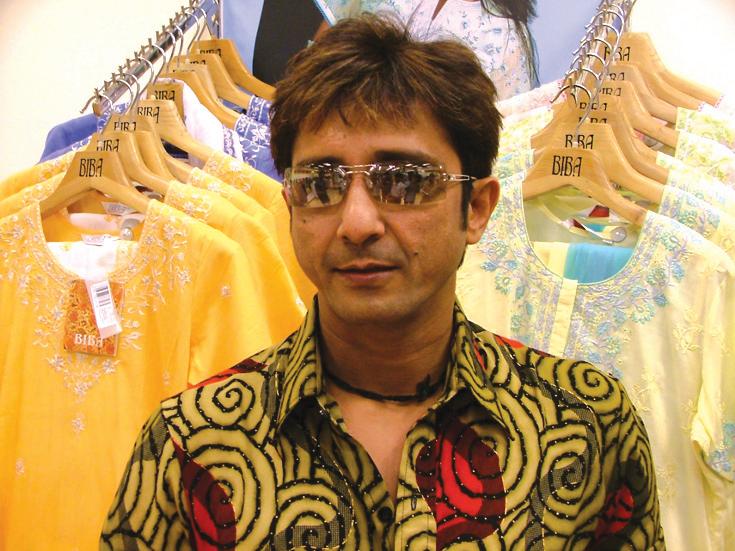
maverick composer, is “quite upset with the flak coming Rahman’s way,” but he candidly adds: “Sometime back, I read Rahman’s interview where he said that ‘the CWG theme song would be better than Shakira’s Waka Waka!’ I had wondered then if this is really the Rahman I’ve known, who was very humble and would never praise his own creations so blatantly. At that time I felt that Rahman’s become overconfident - because a genius never speaks, only his work does the talking!”
Sukhwinder also doesn’t seem to be happy about the lyrics used in the songs and he thinks that Rahman should have taken help from esteemed lyricist Gulzar. Those, who have heard the song, are going hammer and tongs against the absurd lyrics of the song. Words like Yaaro India bula liya...khelo jeeyo e-yo, they claim, sound rather juvenile and don’t even represent an iota of Indian culture, colours and grandeur. How could an Oscar-winning composer present such a shallow song to showcase his
country to the world? Sukhwinder says: “Whenever Rahman won a major award, there was a team that supported his endeavour. There was poetic excellence and singers’ contribution, which added life to his music. Usse Gulzar saab ki yaad kyun nahin aayi? After all, Jai Ho was his poetic contribution!”
If the words of the theme song are being run down with a vengeance, the singing quality of Rahman’s voice has also not gone too well with the masses as well as classes. Sukhi defends his friend, saying that may be everybody has high expectations from the singer and he is facing a professional setback in his life.
Shaadi ke side effects for Manisha Koirala
She’s had a perfect honeymoon and plans to be in Mumbai to attend a few of her film screenings. But Manisha Koirala says her priorities in life have changed after marriage and she’d like to focus on making her marriage a success.


“My husband Samrat (Dahal) and I travelled through Finland. Then we went to Stuttgart (Germany) where I was on the jury of the Stuttgart Film Festival for the Bollywood And Beyond section,” Manisha said about her honeymoon.
Then came the best part of the trip - Paris!
“It’s my dream city. But going there with my husband was a dream beyond a dream. It was a different experience altogether.”
Manisha now intends to buy a home for Samrat and herself in Paris.

Manisha tied the knot with the Nepali businessman in a traditional ceremony in Kathmandu in June.
“My life and priorities have changed. I can’t think beyond the life that I’ve now got with Sam. Though my own family is very precious to me, the time I spend with Sam’s family is very important right now. His mother is a lovely person, and so are his father and brother,” she said.
Manisha, the star of hits such as Bombay and Dil Se, is candid enough to admit that being in a marriage is not easy for a freespirited woman like her.
Manisha returns to Mumbai later this month without her husband. “I have to attend the screening of Onirban’s I Am In New York and then Deepti Naval’s Do Paise Ki Dhoop Chaar Aane Ki Baarish. Both feature me in good roles. And I am committed to attending both the events. I also have a bit of work to complete on the Malayalam film I’m doing. That’s it. After that I’m back in Kathmandu to be with my husband.”
No, SRK will never be a friend again: Salman
Now this rumour can get the Best Rumour of the Year award! A few days ago, there was a buzz that Bollywood’s arch rivals, actors Salman Khan and Shahrukh Khan have patched up again. Then came the news that the two are going to do a film together… Clearing these rumours during an interview recently, Bollywood’s lone bad-boy actor Salman Khan confirmed that it is still warafter that infamous public spat two years ago - and that the two can never be friends again.
“Shahrukh and I don’t talk anymore. We had a misunderstanding and hence parted ways... There is no chance of Shah Rukh and Salman coming together in future,” said Salman resolutely.
“Shahrukh meri girlfriend nahi thi... apni purani girlfreind ko miss nahi karta, Shahrukh ko kya karunga (Shah Rukh was not my girlfriend... I don’t miss my ex-girlfriends for that matter, why will I miss him?).”
What
Another
Raj
SEPTEMBER (1) 2010 <> 85 NATIONAL EDITION
www.indianlink.com.au CAPTION CONTEST GUESS WHO :ANSWER SinghDaraandPran
Saif saying to Kareena here?
in your responses to info@indianlink.com.au and win a surprise prize
issue Caption Contest winning entry
What’s
Send
Last
good one
am so much taller than you, who would believe that
are older than me.
Dev: I
you
Saneja
we’re more millionaires than slumdogs…
NSW
wins a DVD of the new Hindi film PeepliLive
So now
Priya Khanna North Sydney
Priya
is the chitchat between Dev and Frieda?
SUKHWINDER SINGH
MANISHA KOIRALA
KONKONA SEN SHARMA
SALMAN KHAN
Cine Talk
Of risk and loss, and emotional victories
Film: LafangeyParindey
Starring: Deepika Padukone, Neil Nitin Mukesh Director: Pradeep Sarkar
“So this is a love story!” says the wry cop at the end of the film while closing the case that exonerates our hero ‘One-Shot Nandu’ of accidently blinding Pinky Palkar in a car accident. Indeed Lafangey Parindey is a love story. And how grotesquely indecorous has been the marketing of this tender and shimmering look at an improbable love in the slums between a free-wheeling boxer and wannabe roller-skating spitfire gone blind.
Deepika Padukone gives to the tale the kind of fluent grace and eloquent spin that the audience associates with the female legends of celluloid, namely Meena Kumari and Nutan. She brings the poignant lyricism of the former and the spirited delicacy of the latter into what’s unarguably one of the best-written female characters in recent times.
When Pinky goes blind all of a sudden, she doesn’t flutter her eyelashes and trip over furniture like any self-respecting blind diva in our cinema would. She quickly picks up the pieces of her shattered life, and yes, also the roller-skates, and leaves home to a sniggering brother’s taunt and a concerned mother’s encouragement to renew her dreams.
The above is one of the many finely written and worded sequences in this film, suffused with a delicate charm and infinite wisdom.
Neil Nitin Mukesh has a tough thankless role. Not only is he that archetype known as the ‘Supportive Lover’ in the script he must also move back in every other sequence to let Deepika walk away with the best expressions and dialogues. Neil never oversteps his boundaries. As the shy fighter who needs the blinded sports-girl’s clairvoyant spirit to take him on the road to love, more than she needs him
to cross that traffic-laden road which she can’t see, Neil gets the lower notes in the scale of the love symphony right.
While the two protagonists’ journey into love via a dance contest (Rab Ne Banadi Jodi revisited) takes centrestage in Pradeep Sarkar’s deftly-cut material, the peripheral characters also get enough space to have their say aggressively without getting hysterical.
A film set in the ghetto is bound to remind the audience of Danny Boyle’s Slumdog Millionaire and Vishal Bhardwaj’s Kaminey. Sarkar dodges both and goes for the most unexpected reference points, namely Douglas Sirk’s The Magnificent Obssession and its desi spinoff Gulzar’s Kinara. As in Kinara, the hero is on a redemptive route taking the blinded girl through the corridors to her dream. It’s a journey undertaken with great warmth, tenderness and loving care.
The dialogues convey a street-side sauciness without getting abusive. Street wisdom need not be eeks-rated.
But hang on. Lafangey… is not soft at the edges Pradeep Sarkar brings to the storyboard a gritty edge-of-the-street desperation that miraculously accommodates a very supple love story.
In a moment that can only be defined as tragiccomic, one of the hero’s friends walks away with one of the most expressive lines in this film. After Pinky goes blind the friend says, Ek minute mein Hema Malini se Thenga Malini ban gayi
The reference to Hema Malini is not lost in a film that takes Gulzar’s Kinara to another shore. The scenes are written by Gopi Puthran with utmost concern for a pitch that conveys high passion without toppling over. Deepika looking into the sky with a lovelorn look in her unseeing eyes asking Neil to describe the moon is a moment that is priceless and poignant.
Cinematographer C. Natarajan Subramanian shoots with loving care. Lafangey… is an inspirational tale told with as little fuss and as much feeling as cinematically possible. Not to be missed.
Subhash K. Jha
Why mortality is not to be feared
Film: Aashayein
Starring: John Abraham, Prateeksha Lonkar, Ashwin Chaitale

Written and directed by
Nagesh Kukunoor
This is a film about coping with dying. But that’s not what makes it such a special experience. It’s the writer-director’s profound understanding of human nature that furnishes the simple story with a lucidity and coherence even when the protagonist’s mind is so numbed by physical pain he can barely think straight.
Aashayein is structured as a journey from a bright delusory light, into a place where the radiance comes from a
consciousness of why mortality is not to be feared.
In John Abraham’s eyes are mapped the entire history of the human heart, its follies and foibles as it struggles to make coherent the indecipherable logistics that define our journey across that bridge which everyone crosses from this world to the next.
As that very fine actress Prateeksha Lonkar (a Kukunoor favourite) says, “The only difference between the healthy and the ill is that the former don’t know when they are dying and the latter do.”
Between that state of blissful oblivion where we all think life is forever and that one moment when our delusions come crashing down, there resides some very fine cinema Hrishikesh Mukherjee’s Anand where Rajesh Khanna smiled his way through that wobbly bridge taking us to the next world, is an interesting reference point in Aashayein
I also thought of the actress Supriya Choudhary shouting
into the dispassionate mists in the mountains, “I want to live”. The echoes reverberate all the way to Kukunoor’s heartwarming, funny and elegiac exposition on the truth that lies on the other side of that illusory mountain we call life Kukunoor pays a homage to life per se, and life as we know in the movies about death.
Even in the most poignant places in the art Kukunoor ferrets out some humour. When John’s lovely girlfriend (Sonal Sehgal) hunts him down in his exilic place of the dying, John quips, “So you are not going to behave like one of those heroines in films who dumps the dying hero?”
The fantasy element creeps into the hospice (yes, that’s the spotless space that the story inhabits unostentatiously) with the least amount of fuss. There’s a little boy (the bright and expressive Ashwin Chitale) who weaves mystical tales borrowed from the comic books for the desperate and the dying. Here Kukunoor brings in an element of rakish
86 <> SEPTEMBER (1) 2010 INDIAN LINK
ENTERTAINMENT
Taking Stepmom to a whole new level
Film: WeAreFamily
Cast: Kajol, Kareena Kapoor, Arjun Rampal

Directed by: Siddharth Malhotra
Some films are good to look at. Some feel good at heart. Very few mainstream films manage to look as good on the surface and also capture the heart. “ We Are Family is equally appealing from the outside and at the heart.
It doesn’t take us long into the narration to realize that the debutant director has his own ideas on how urban man-woman relationships work. Siddharth Malhotra brings the traditional compassion and large-heartedness of Sooraj Barjatya’s films into the same line of vision as the urban fables about the man-woman relationship of Gulzar’s Ijaazat and Govind Nihalani’s Drishti. The brew is invigorating and often very very moving in the way movies stopped moving us a long time ago.
The basic premise and even chunks of sequences and dialogues are taken from Chris Columbus’ Stepmom. Are Kajol and Kareena Kapoor as powerful in portraying the wife and the other woman as Susan Sarandon and Julia Roberts in the original?
What if one says the two divas in the desi Stepmom are far more empathetic in their understanding of the complexities of a marriage that has not quite terminated and the alternative relationship which doesn’t know where to go without disrespecting the earlier relationship? Kajol and Kareena share a compelling partnership in portraying a household that’s run by two women.
The intricacies of the triangle are worked out with heartwarming delicacy, so much so that you wonder why the director needed to keep any of elements from the Hollywood film. We Are Family takes the Stepmom saga to another level. It’s an urban fable told with subtlety and a softness of touch which completely avoids excesses of emotions
until the last ostensibly gut-wrenching
she demonstrated such a complete
wouldn’t have wanted this tender-sweet look
finale when the narration gets excessively melodramatic.
The rest of the film is remarkably devoid of extravagant emotions even though the situation described and defined by the plot is susceptible to acute bouts of overt emotion. Having three actors who know how to play down the pitch without taking away the edge in the narration surely helps the situation.
Kajol needs absolutely no recommendation. Her transformation from physically healthy but restless in soul, to a dying but spiritually healed entity happens right in front of our eyes. The little things she does with her eyes and lips just rips a hole in our soul. Yup, she is one of our alltime greats - without trying. The moments when she watches Shreya (Kareena) take charge of her children and husband, find Kajol expressing a mixture of envy and resignation the way only she can.
But it is Kareena Kapoor who is an utter revelation. Never before has
Kareena brings a rare and reined-in passion
Everything that she has done so far on screen is undone as Kareena redefines the role of the Other Woman in Hindi cinema.
Admirably the 6(!!) screenplay writers have worked overtime on Kareena’s part. She could easily have been the bitch who steals Kajol’s husband away. As written in the script, Kareena comes across as flesh and blood an tears - and yes, as a woman of great beauty.
Arjun Rampal has been constantly evolving as an actor. Here he balances out the powerhouse performers on both his sides with a deeply felt emotional binding presence. And by the way, he dances better than Kajol and Kareena in the disappointing Jailhouse Rock number.
Sensibly, Siddharth Malhotra has avoided the temptation of too many confrontational moments between Kajol and Kareena. We
adventure borrowed from the edgy hi-jinks of Indiana
Who says money can’t buy love? John uses bundles of cash to bring a smile to these doomed lives. When he doubles up with pain in womb-like postures of helplessness, we feel his pain.
John in Harrison Ford’s hat and whip cuts a starry figure. He has never been more fetchingly photographed. John’s smile reaches his eyes, makes its way to his heart and then to ours. This film opens new doors in John’s histrionic abilities. It’s a performance that heals and nurtures.
John’s finest moments are reserved for a hot-tempered sharp-tongued 17-year-old girl on a wheelchair, played with intuitive warmth by Anaitha Nayar. He guides the relationship between these two unlikely comrades of unwellness with brilliant restrain and candour. She wants him to make love. He does with his eyes using his unshed
up looking like one of those T. Rama Rao mera-pati-sirf-mera-hai kitsch-kitsch-hota-hai stale-tales from the 1980s.
We Are Family takes the story of a broken marriage to an area of poignancy where the outer edges remain as strong as the inner fabric of the three characters who find themselves trapped in a tragedy not of their making. From the opening birthday sequence where Arjun introduces girlfriend Kareena to his wife and children, with disastrous consequences, the film exercises a high cool-and-calm quotient in its structuring.
At the end, you suddenly realize it’s been a while since we saw a film about Man, Wife and Other Woman tackle the layers of painful separation and reconciliation with such fluency and care.
Go for this one.
tears as lyrical lubricant.
Here is a performance that defines the character through immense measures of unspoken anguish. Rajesh Khanna in Anand? Nope. John pitches his performance at a more wry and cynical world where true feelings are often smothered in worldly sprints across a wounded civilization.
This is unarguably Kukunoor’s most sensitive and moving work since Iqbal. We often find little sobs pounding at the base of our stomachs. Not all the characters or situations are fully formed and fructified. But even the partly-realized truths in Aashayein convey more common sense and uncommon affection for life than the “entertainers” of today’s cinema where laughter is generated through cracks in places very far removed from the heart.

This one takes us straight to the heart.
Subhash K. Jha
SEPTEMBER (1) 2010 <> 87 NATIONAL EDITION www.indianlink.com.au
Subhash K. Jha
NRI, so what?
The Australia-returned phenomenon has lost its charm in India, and people aren’t even polite about it
humour would soften him.
impress them!”
BY SUNIL GUATAM

My friend was unhappy again. Just back from a trip to India, he looked neither excited nor content. I am not suggesting that excitement and contentment have anything to do with visiting India, but we know it is a culturally correct posture to maintain.
Having known him for over a decade in Australia, I know how much he used to enjoy going back home and would come back with stories of what they did and how everyone was thrilled to see them. This was a much planned trip after a long wait. But this time, he looked as if they refused him entry into the country and he had to spend four weeks pretending to be a baggage handler at the airport.
“Spent too much money?” I asked, hoping he would start talking.
“You know that is not a problem with me,” he retorted defensively.
“So what is it?”
“It’s just that it doesn’t feel great any more. You know, the whole thing about going to India from ‘overseas’.... wide eyed relatives, people loving your accent, loving your presents and loving you in the process....it’s all gone!”
“So it wasn’t like a Rajshri film this time? Laughter, singing, laughter, love, singing, singing?” I tried to cajole him, knowing how he relates everything to movies.
“Yes and no,” he said. “The folks were happy to see us but there was something missing.”
“What could that be? I think the only thing missing this time was the hair on your head,” I said, sure that
“The hearts... the hearts have changed, my friend,” he thumped his chest in true filmi style. “May be you are too shallow to understand.”
I kept quiet because by now he was sufficiently stirred up to do without my help.
“Earlier, after the initial hugs and kisses, we would all get together around our suitcases as we took out the presents for everyone. Each present was received with squeals of joy, gentle complaints of us spending too much money and kids rushing off to show their gifts to their friends.”
“And this time?”
“The response was muted. Apparently, there was nothing new in our presents. They were not ‘foreign’ enough for them. India has everything now, you know. They had a bigger collection of perfumes than us, better watches, more gold,” he explained.
“But at least the kids would have loved the toys you took for them. I am sure they ran off with them,” I offered helpfully.
“Hah! The nephew hid his present under the bed because his friends were coming over and he didn’t want to be embarrassed. The niece had one look at her present and said, ‘But it is made in China. I thought you came from Australia!’”
“What about the seniors?” I said, still hopeful.
“They were more held back. But they did hint that they understood how expensive things are in Sydney. There were nods of understanding, but no eyes lit up in the whole ‘guess what we got for you from Australia’ episode,” he replied.
“Oh,” I tried to sympathize, “why didn’t you try taking them out shopping? You could spend like a maniac and

“Shopping? Do you know how expensive things are now?” he retorted. “You can spend ten thousand rupees and let a newborn carry all the shopping! And impress who? Have you seen how the Indians spend these days? They eat momos for a thousand rupees everyday. One lakh is loose change now. I know someone who pays 1.25 lakh rupees a month on rent! VIP tickets at the IPL are worth Rs 20,000 each and they are the first to be sold out! I’ll be a maniac if I try to impress them by spending. In fact, I told one retailer that we were from Sydney and he said: Oh ok, I’ll make it cheaper for you, then.”
“But a few pictures of Australia should have worked. Didn’t you take your pictures of your trips to the Uluru, Gold Coast and Tassie? After all these are exotic locations not found in India,” I insisted, trying for all it was worth.
“My friend, I am sure you know that airports are found in India! Do these guys travel or what? You take out one picture of Australia and they show you 10 from 5 destinations in Europe. Apparently, big companies regularly send their employees overseas as part of their package,” he replied despairingly.
“So there is nothing to feel good about the entire trip from a ‘show-off’ point of view? This was Delhi, weren’t you supposed to go to Mumbai as well? How did that go?”
“Oh the Mumbai part was great! We decided not to go shopping to avoid embarrassment. Didn’t exchange any holiday pictures. And yes, people loved our gifts too,” he said with a weak smile.
“How come?” I was truly curious.
“Because we bought all the Mumbai gifts from Delhi.”
88 <> SEPTEMBER (1) 2010 INDIAN LINK
BACKCHAT
I am not suggesting that excitement and contentment have anything to do with visiting India, but we know it is a culturally correct posture to maintain
www.indianlink.com.au
I told one retailer that we were from Sydney and he said: Oh ok, I’ll make it cheaper for you, then


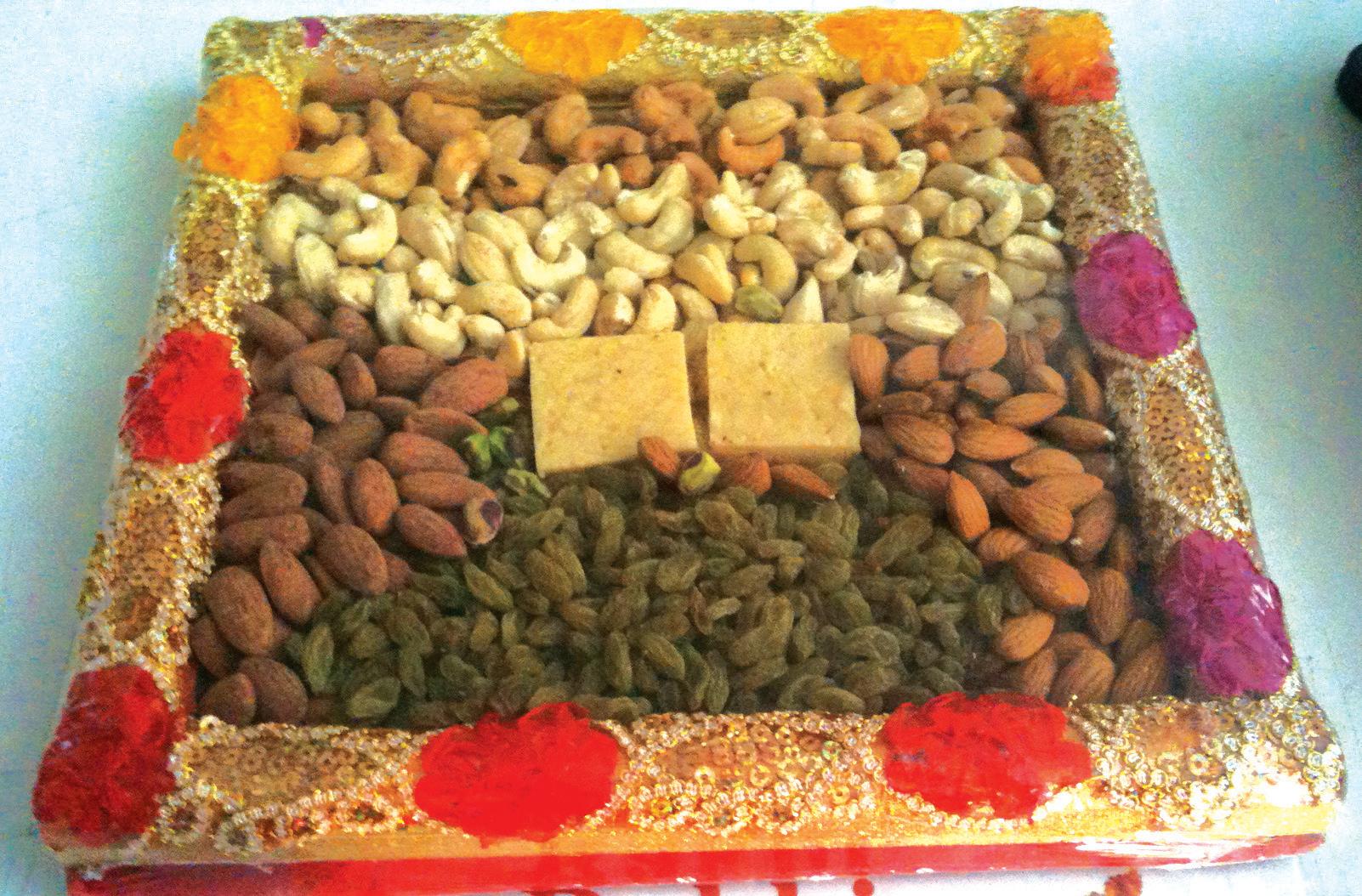
SEPTEMBER (1) 2010 <> 89 NATIONAL EDITION 139 STEPHEN STREET BLACKTOWN PHONE: 9671 7820 on traditional Indian food FLAMING HOT DEALS Call now on 0425 30 26 26 Quality Quantity Service Take-away Catering from $9pp Singh Food and Spices Blacktown 143 Stephen Street (cnr Sackville Street), Blacktown Phone 02 9676 4677 Fax: 9676 4688 enquiry@singhfoodspices.com.au : www.indianspices.com.au Hampers delivered any where in Australia and India Birthdays, Karva Chauth, Diwali and more

90 <> SEPTEMBER (1) 2010 INDIAN LINK

SEPTEMBER (1) 2010 <> 91 NATIONAL EDITION

92 <> SEPTEMBER (1) 2010 INDIAN LINK




















 BY USHA RAMANUJAM ARVIND
BY USHA RAMANUJAM ARVIND









 BY SHERYL DIXIT
BY SHERYL DIXIT


















































 BY SHIVANGI AMBANI-GANDHI
BY SHIVANGI AMBANI-GANDHI









 BY FARRHA KHAN
BY FARRHA KHAN












































 Mark Twain
Mark Twain

 BY CHITRA SUDARSHAN
BY CHITRA SUDARSHAN





































































 By THOMAS E KING
By THOMAS E KING











 BY RITAM MITRA
BY RITAM MITRA


























































